For nearly 30 years, Alpha Structural, Inc. has developed a powerful reputation as the number one foundation engineering and repair, landslide repair, earthquake, and structural rehabilitation contractor in the Los Angeles area. The company has over 400 years of combined technical experience and all of it is hard-core and down-in-the-trenches, not managed from behind a computer.
Alpha Structural, Inc. also shares photos from its engineers' day-to-day work, including all the funniest, most bizarre, and downright dangerous things they discover. We've already covered their finds here, here, and here, but recently they've unearthed more surprising treasures, so we put together a new piece on them.
More info: AlphaStructural.com | Facebook | Instagram | Twitter
#1
Here we have a brick retaining wall experiencing surcharge from the neighboring hill. Structures that are settling can cause this surcharge in the soil. This creates a high-pressure situation which then pushes out the remaining soil and results in this type of damage to retaining walls.

Image credits: AlphaStructural
#2
We think this takes the cake. This is not rebar. These are old Helical Piers from the 70s. It has never been a method that we have used as a company and this is why. They are very practical in many situations, but for steep hillside and seismic zones, they are not. We've seen this all too many times in LA.

Image credits: AlphaStructural
#3
Life always finds a way...
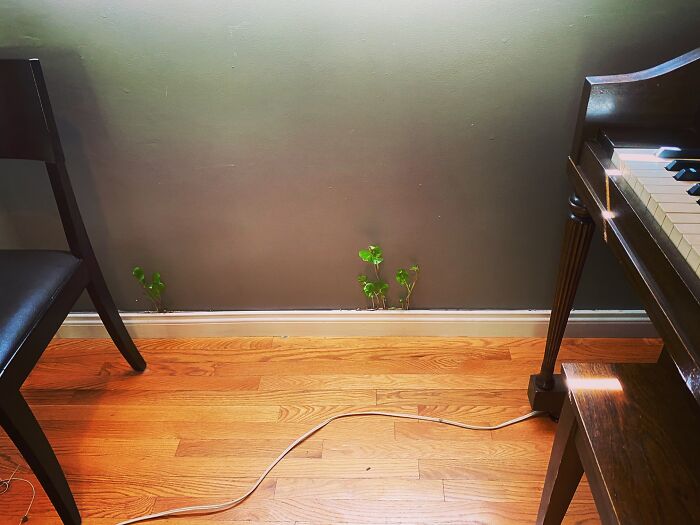
Image credits: AlphaStructural
#4
Please watch your step!
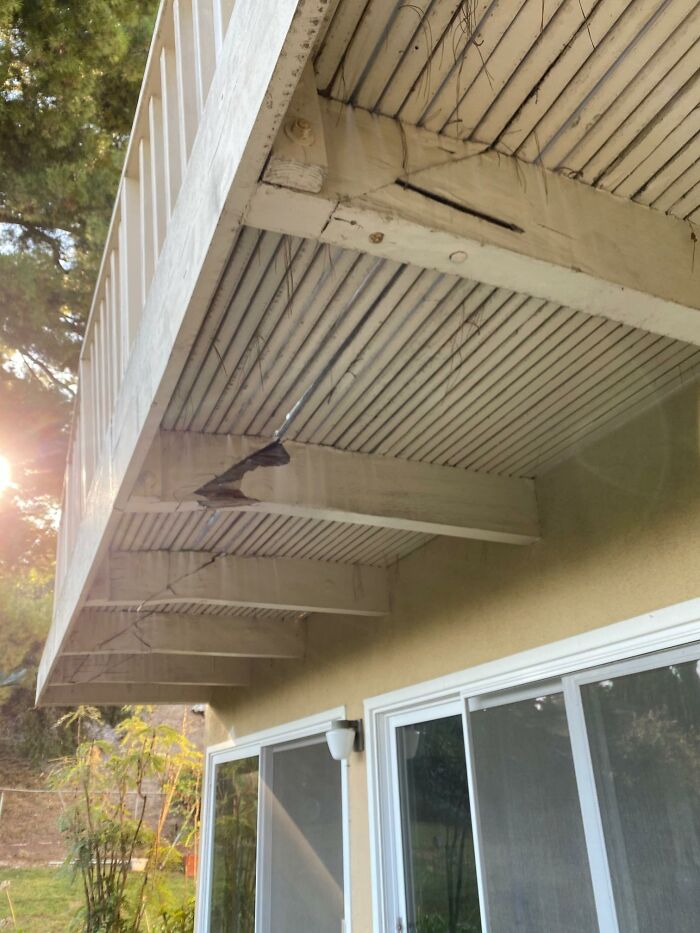
Image credits: AlphaStructural
#5
The side of this property is sinking, causing this column to lean backward, bringing the connecting beam forward in the other direction. It could slip in the future if it goes unhandled.
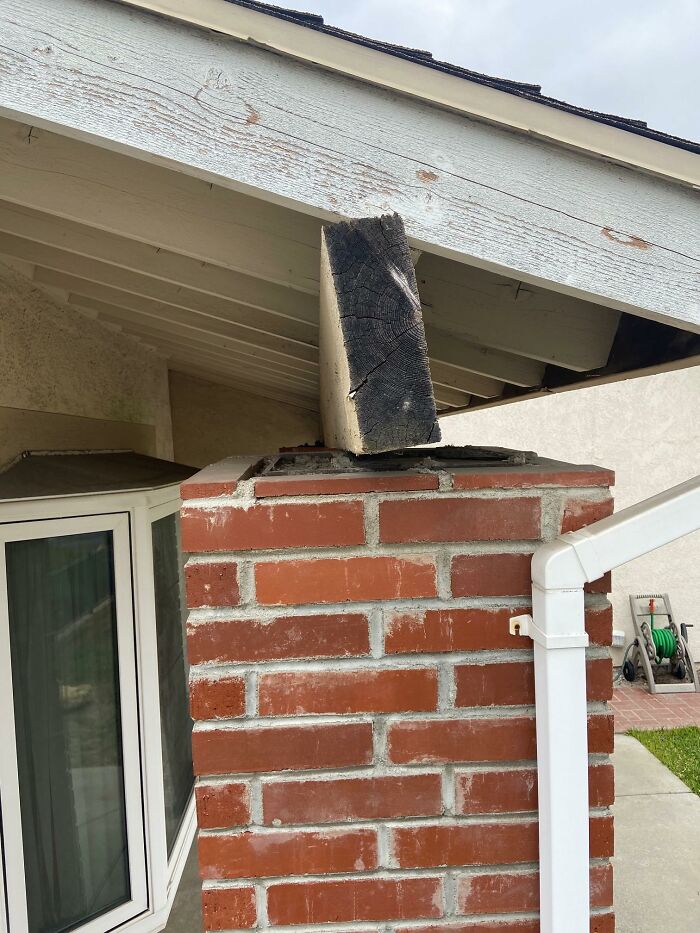
Image credits: AlphaStructural
#6
Step on this deck at your own peril...
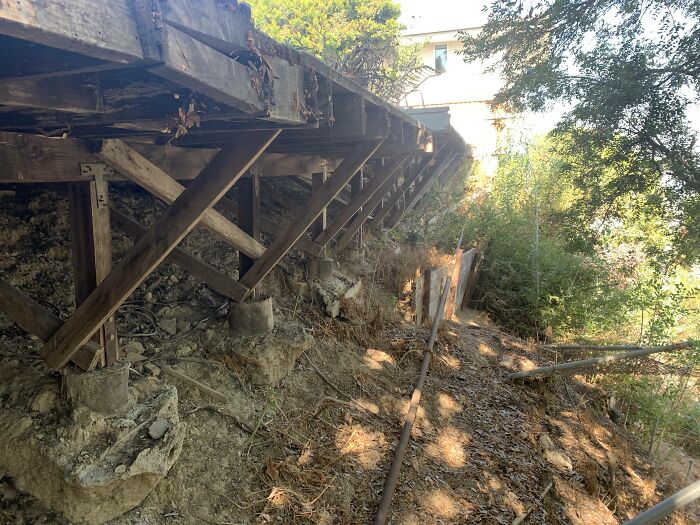
Image credits: AlphaStructural
#7
This doesn't happen with just a gust of wind... though that might be all it would take to bring it down
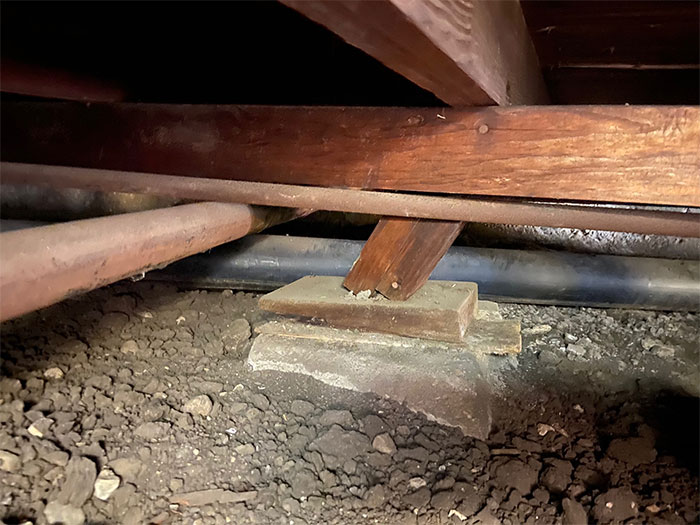
Image credits: AlphaStructural
#8
This concrete patio is sitting on a retaining wall that has been pushed outward due to what is known as a surcharge, or hydrostatic pressure build-up. Hollow areas formed under the patio, causing the cracking and further sinking of the patio from the roof load above
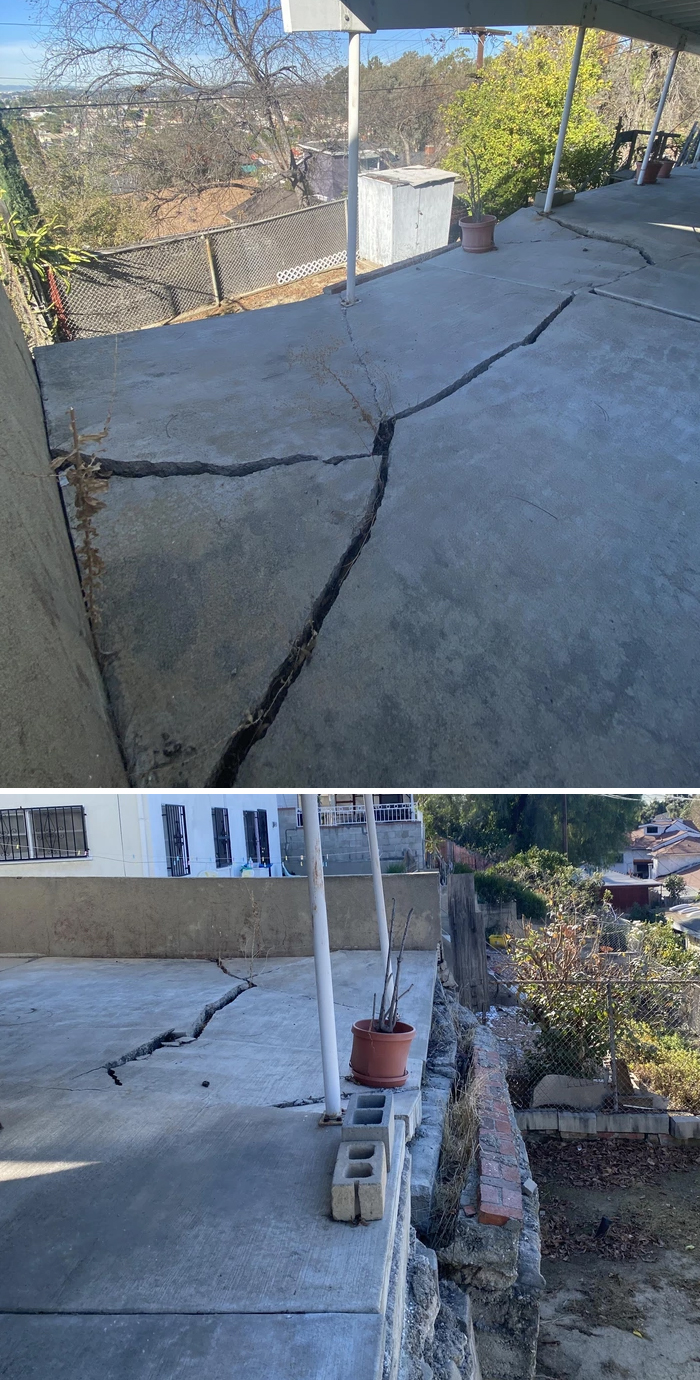
Image credits: AlphaStructural
#9
Notice the compression of the posts into the girder. They go into the girder about an inch. This property has some crazy settlement and moisture problems
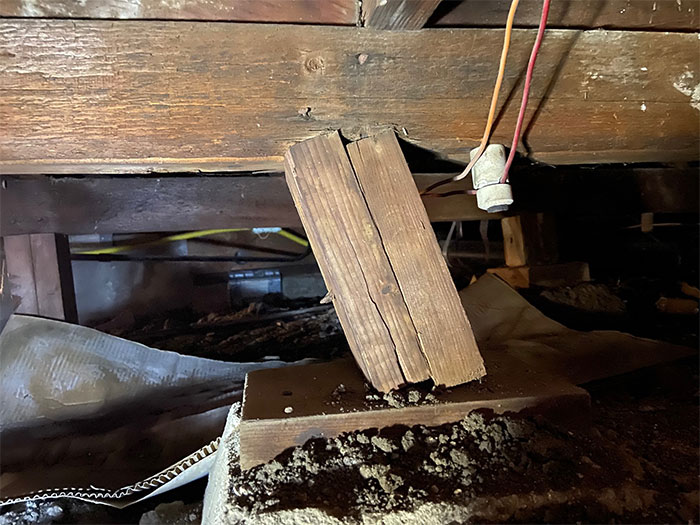
Image credits: AlphaStructural
#10
If you're ever concerned about your slab foundation being cracked, look out for this

Image credits: AlphaStructural
#11
Being that my company in LA does this sort of repair/prevention work, this was some scary news to see this morning. Torrential rain and debris caused a large chunk of Highway 1 on the West Coast of California to wash away. You're going to need yourself a Yoshi if you're wanting to cross here. Back in 2017, a massive landslide covered up over a half mile of the road. It took months to clean up and there was no access around it. If it continues to rain, I wouldn't be surprised if more of this happened in and around Southern California.

Image credits: AlphaStructural
#12
I guess the original builder of this property chose the ancient Roman vibe for this foundation.
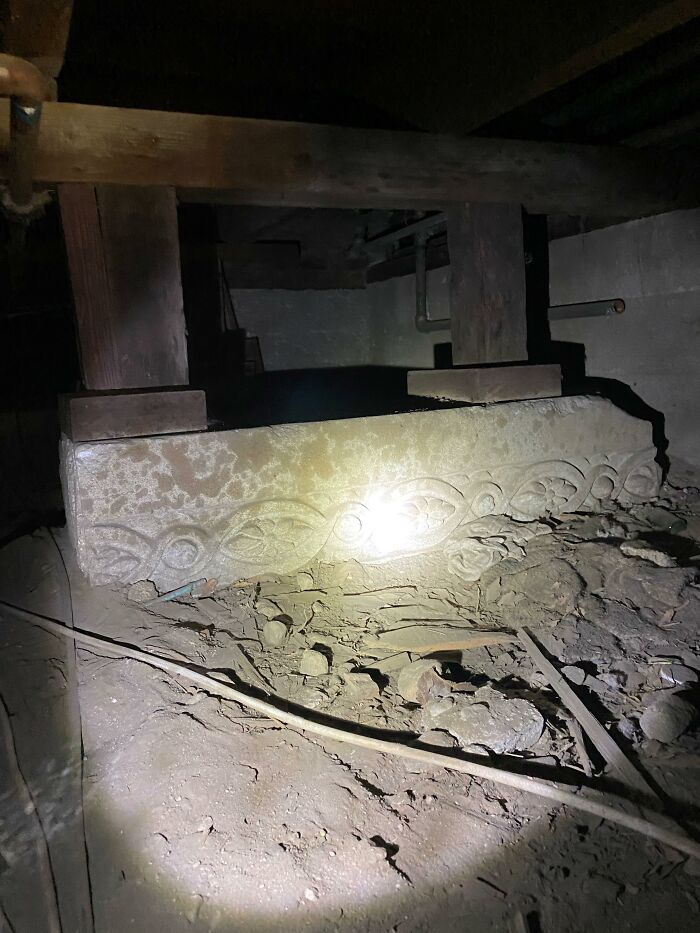
Image credits: AlphaStructural
#13
This isn't what you want to see greeting you as you enter the crawlspace.
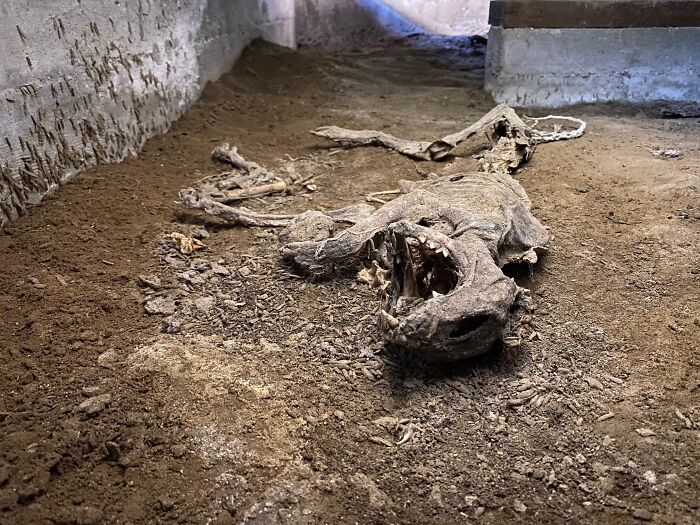
Image credits: AlphaStructural
#14
It looks right and wrong at the same time
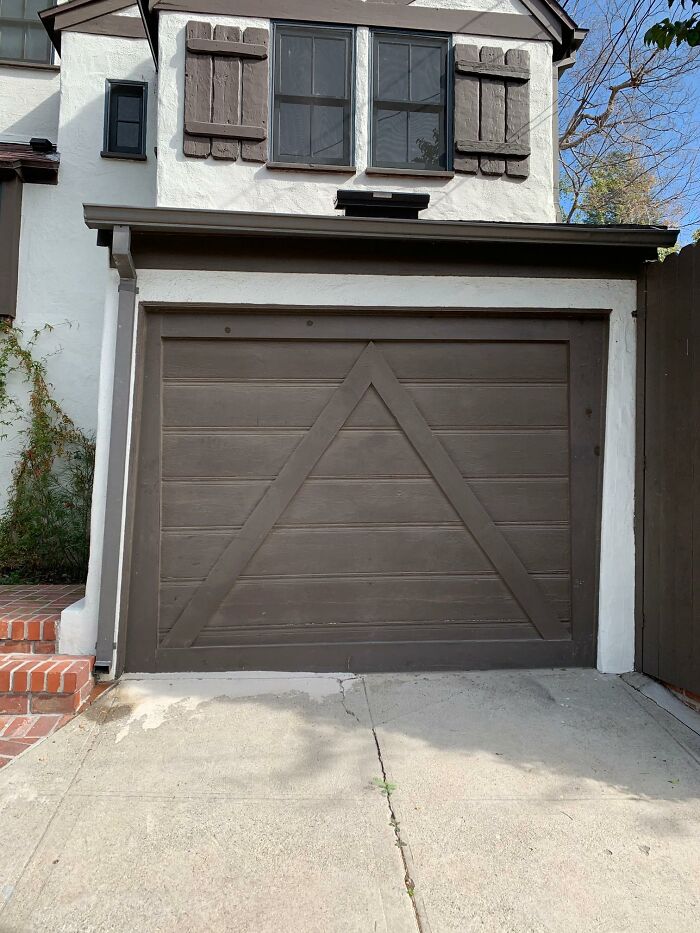
Image credits: AlphaStructural
#15
When your friends help support you but they slowly leave you over time.
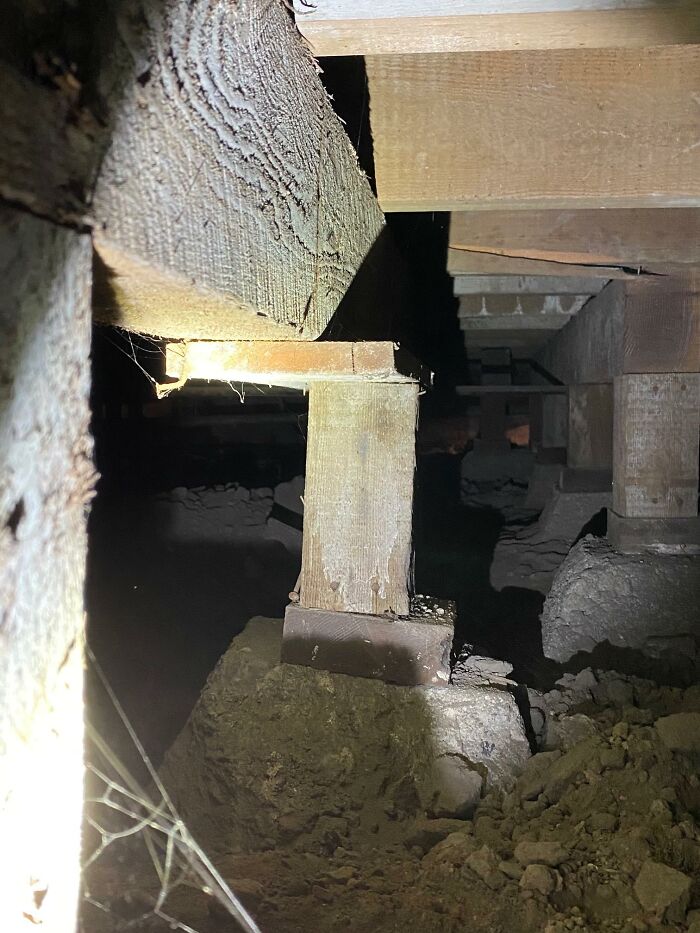
Image credits: AlphaStructural
#16
I'm not sure what his bottom jaw is doing near his rear end, but always a "fun" find.
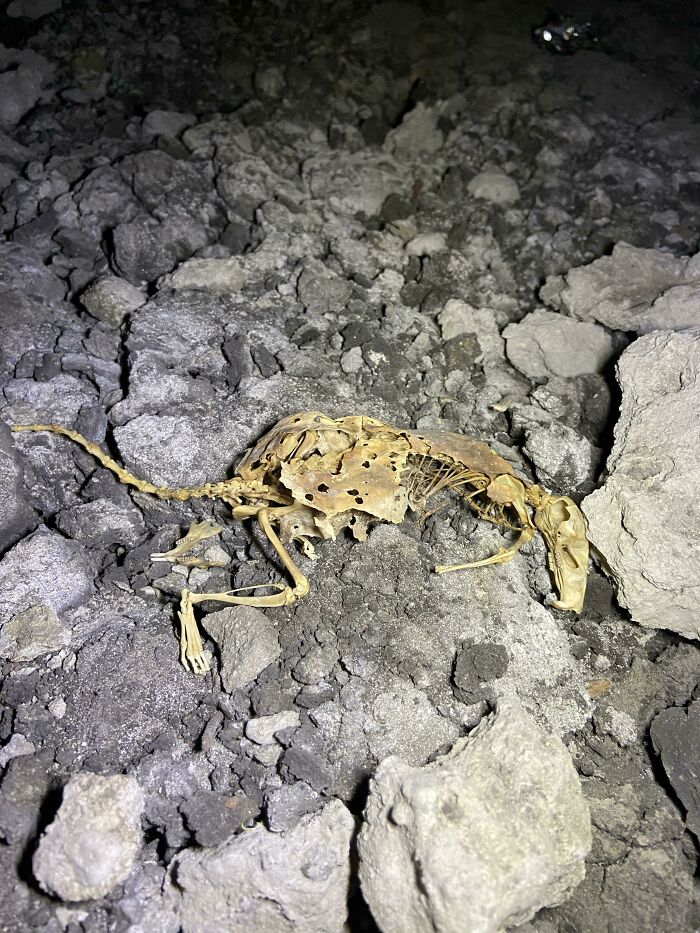
Image credits: AlphaStructural
#17
This deck system uses an angled beam that attaches to the concrete patio below for support. The very edge of the deck is beginning to dip down, causing a lot of tension where the beam meets the patio. If you look closely, you can see the concrete lifting with the beam. No partying on this deck for a while!
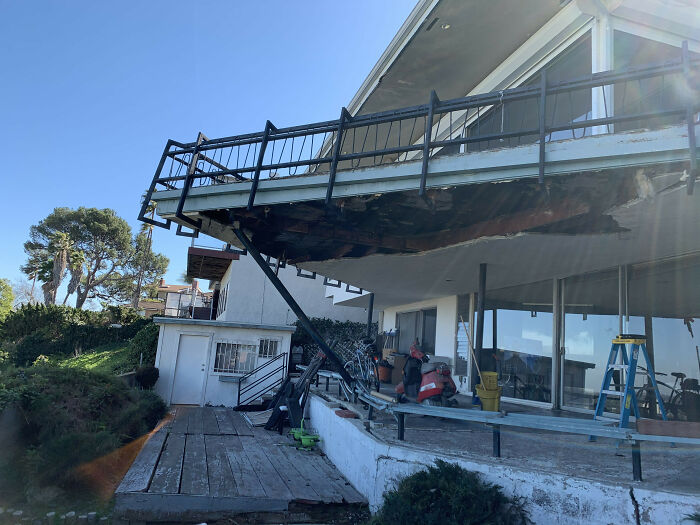
Image credits: AlphaStructural
#18
Out with the old, in with the... new? This is a very early 1900s home with a brick foundation that we inspected. In addition to the foundation needing a replacement/sister foundation, much of the framing needs to be replaced as well. It's hard to consider this as a foundation since the concrete is as stable as the dirt underneath it.

Image credits: AlphaStructural
#19
A car hit the side of this house and caused some pretty significant structural damage. Not much can be seen from the inside surprisingly, except water damage and some cracking.
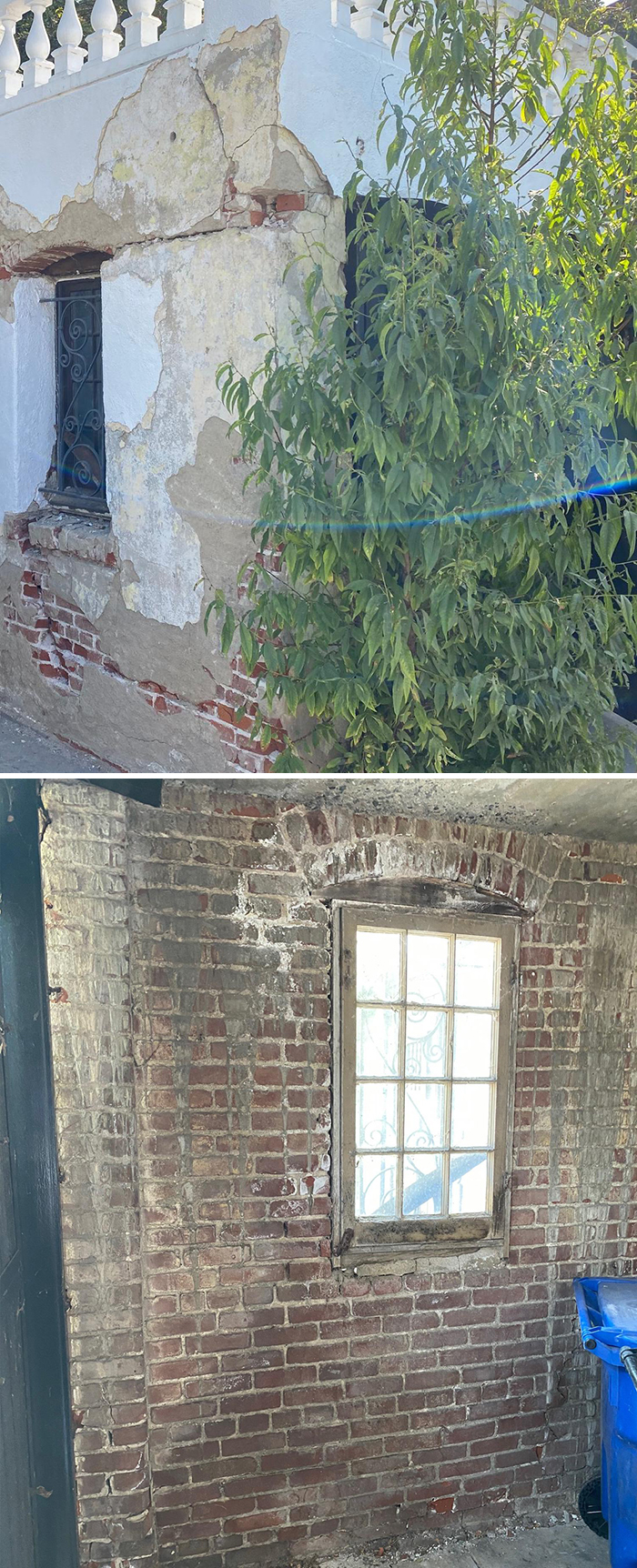
Image credits: AlphaStructural
#20
A nice pile of dust supporting a home. This is a very bad spalling concrete foundation. I assume most of you know what that is by now, but if you don't feel free to ask. Here's some more spall damage on a different property!
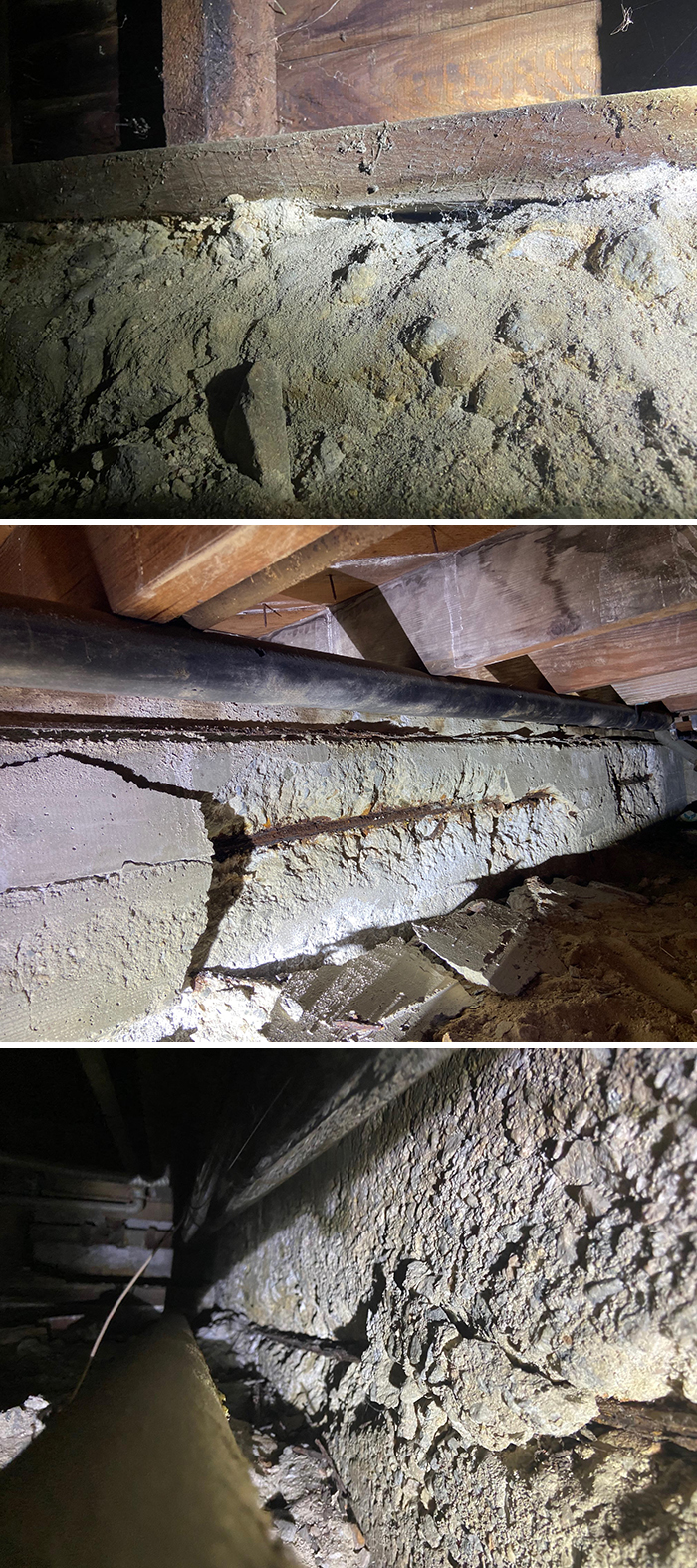
Image credits: AlphaStructural
#21
This is why you always remove stucco before you engineer a solution!
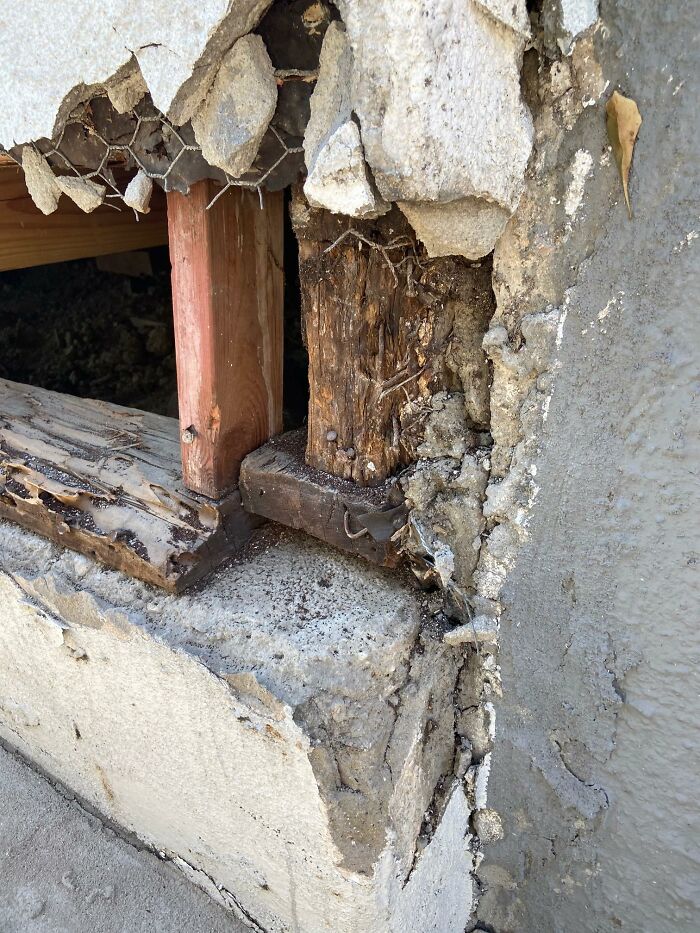
Image credits: AlphaStructural
#22
The short studs you see here are part of a system called a cripple wall. It's a short wall, composed of studs and sheer paneling that is bolted into the concrete foundation and runs up to the framing of the home. As you can see, the top of the cripple wall isn't connected to anything and they even went as far as installing a hold-down (threaded metal anchor to the left) to the foundation but nothing at the top. Not sure if this ever went through an inspection, but I'm assuming it didn't.
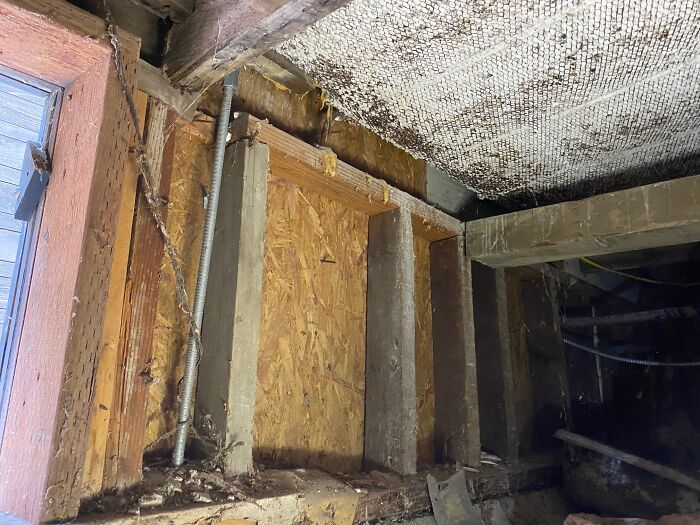
Image credits: AlphaStructural
#23
Watch your step here too. This was a fairly new set of concrete stairs that had very shallow footings. The hillside also eroded away and the stairs came with it.
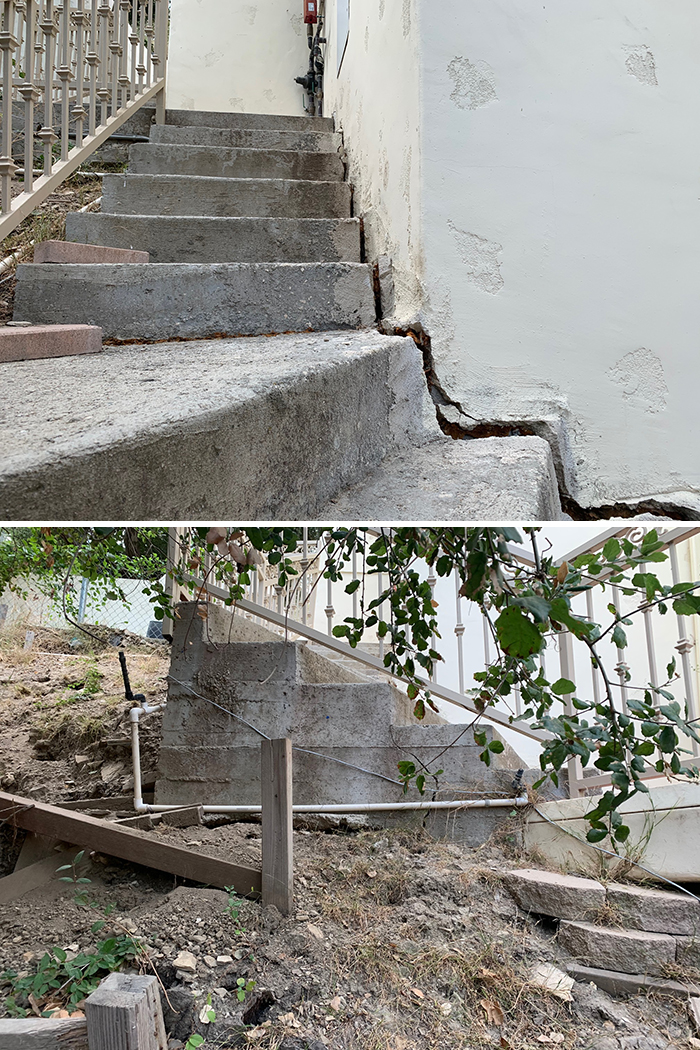
Image credits: AlphaStructural
#24
This is a gnarly retaining wall failure we inspected. It has a great view of the valley but definitely needs some work and probably needs to be replaced.
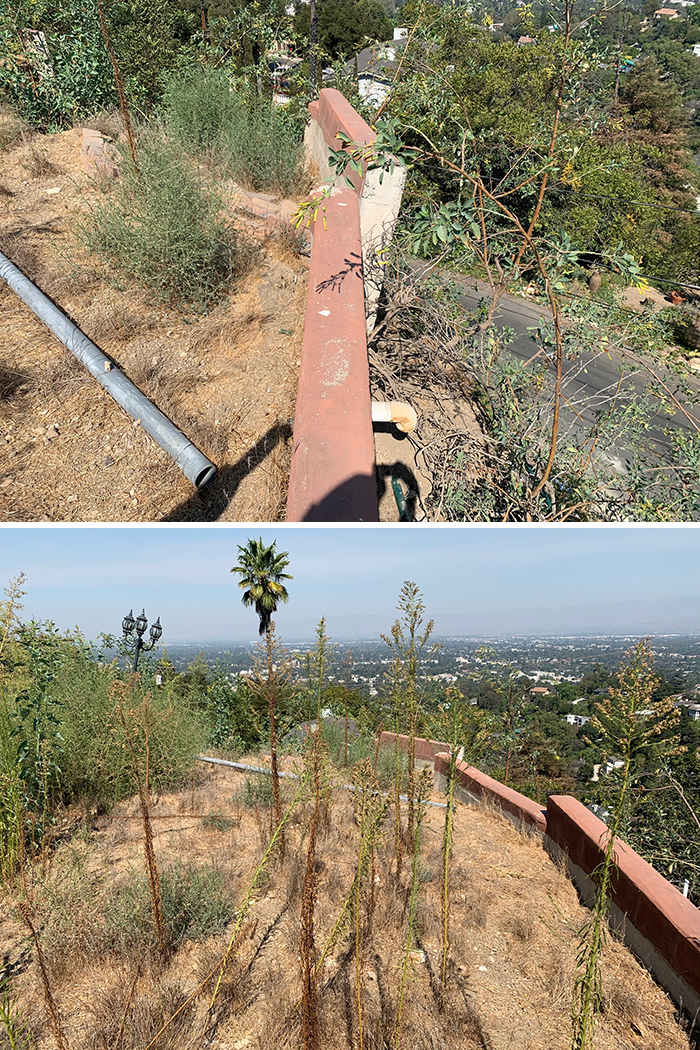
Image credits: AlphaStructural
#25
Rock solid post!
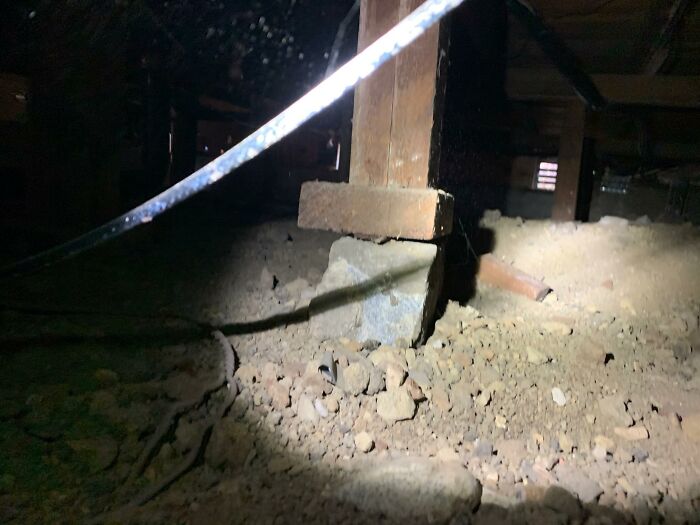
Image credits: AlphaStructural
#26
Here we have an unreinforced masonry foundation that's in need of a good replacement or sister foundation. Much of the brick foundations in LA County are around USC, Pomona, Pasadena and Long Beach. Many of them are considered historic properties, so limited work can be done. Those usually have to be sistered instead of replaced.
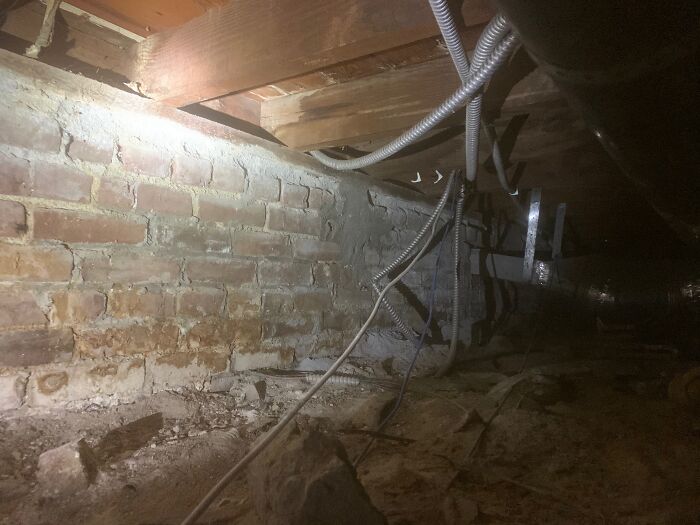
Image credits: AlphaStructural
#27
Not a very safe sidewalk if you ask me.
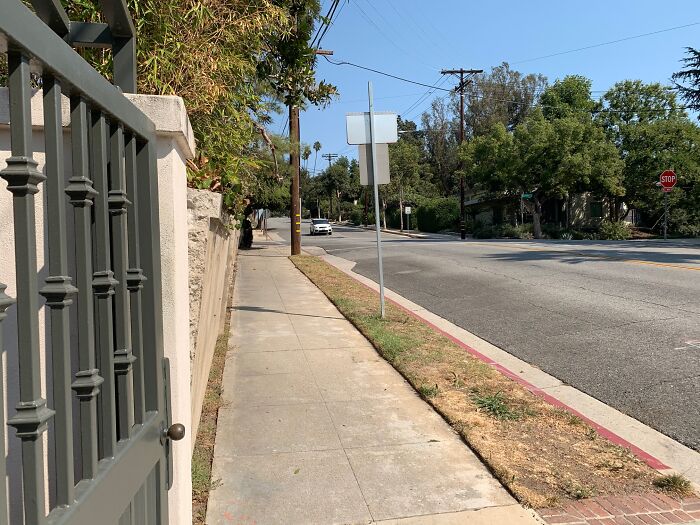
Image credits: AlphaStructural
#28
Who needs the post to be centered anyway?
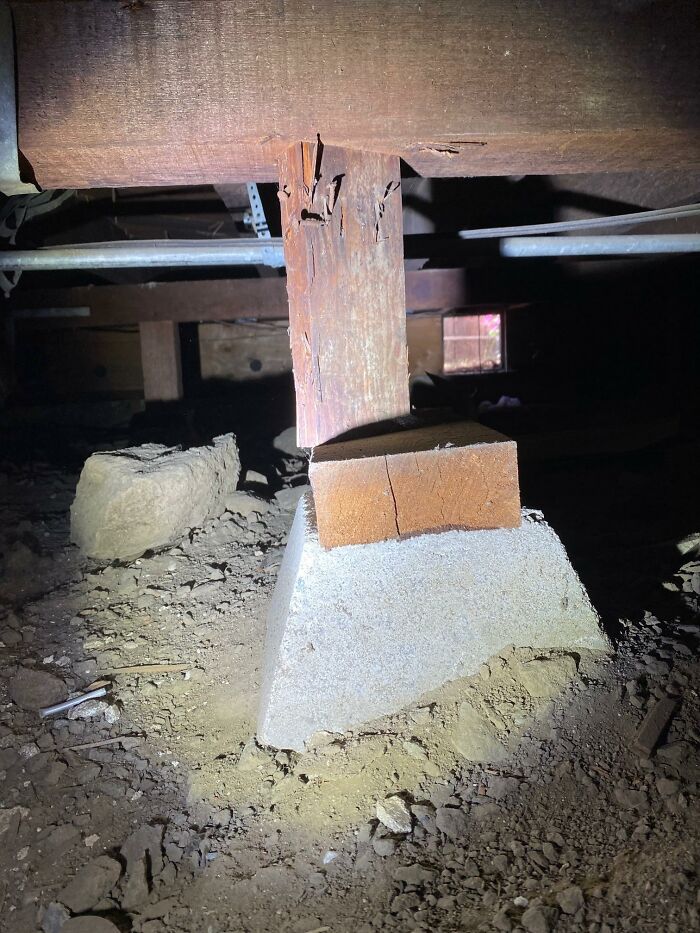
Image credits: AlphaStructural
#29
This large reinforced concrete column has some obvious spall damage caused by water penetration from above.
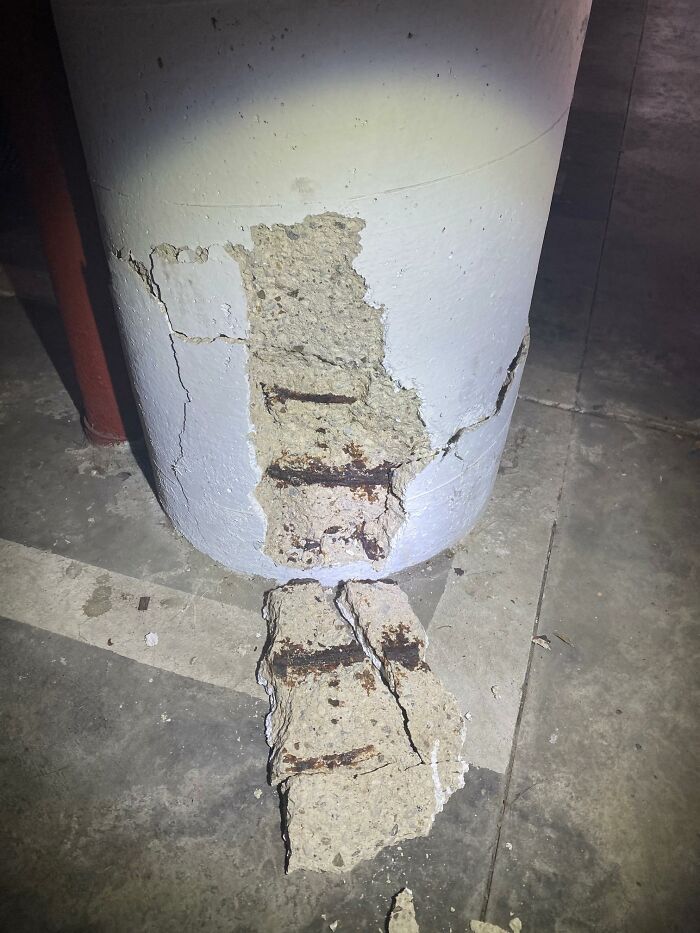
Image credits: AlphaStructural
#30
This hillside foundation is extremely undermined and most of the footings are completely exposed. Some wood blocks were put in place to help support the foundation. Check out the shoring put in place, though! This place needs some foundation work and hillside compaction for sure!

Image credits: AlphaStructural
#31
Another section of a foundation which has been completely undermined, with most of the dirt coming out from underneath the concrete!
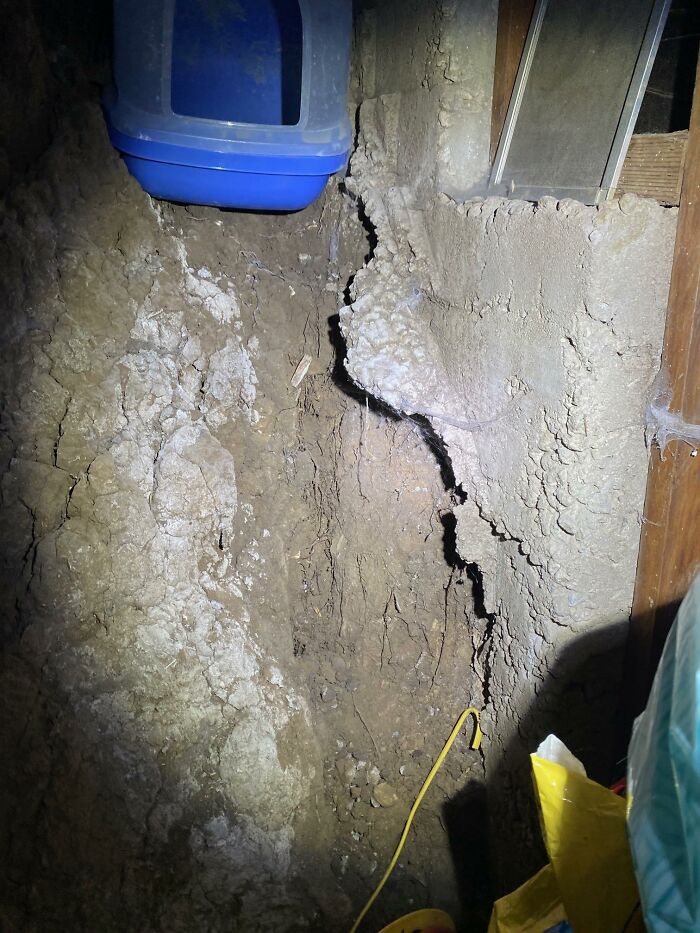
Image credits: AlphaStructural
#32
Just one more pipe...
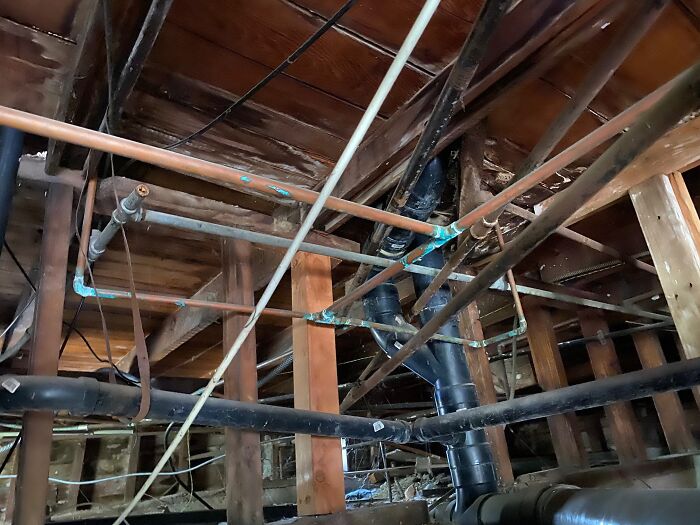
Image credits: AlphaStructural
#33
A leaning cripple wall above a very damaged concrete foundation! Check out that crack... yikes! This is part of the same foundation. This area is very undermined and broken to bits!
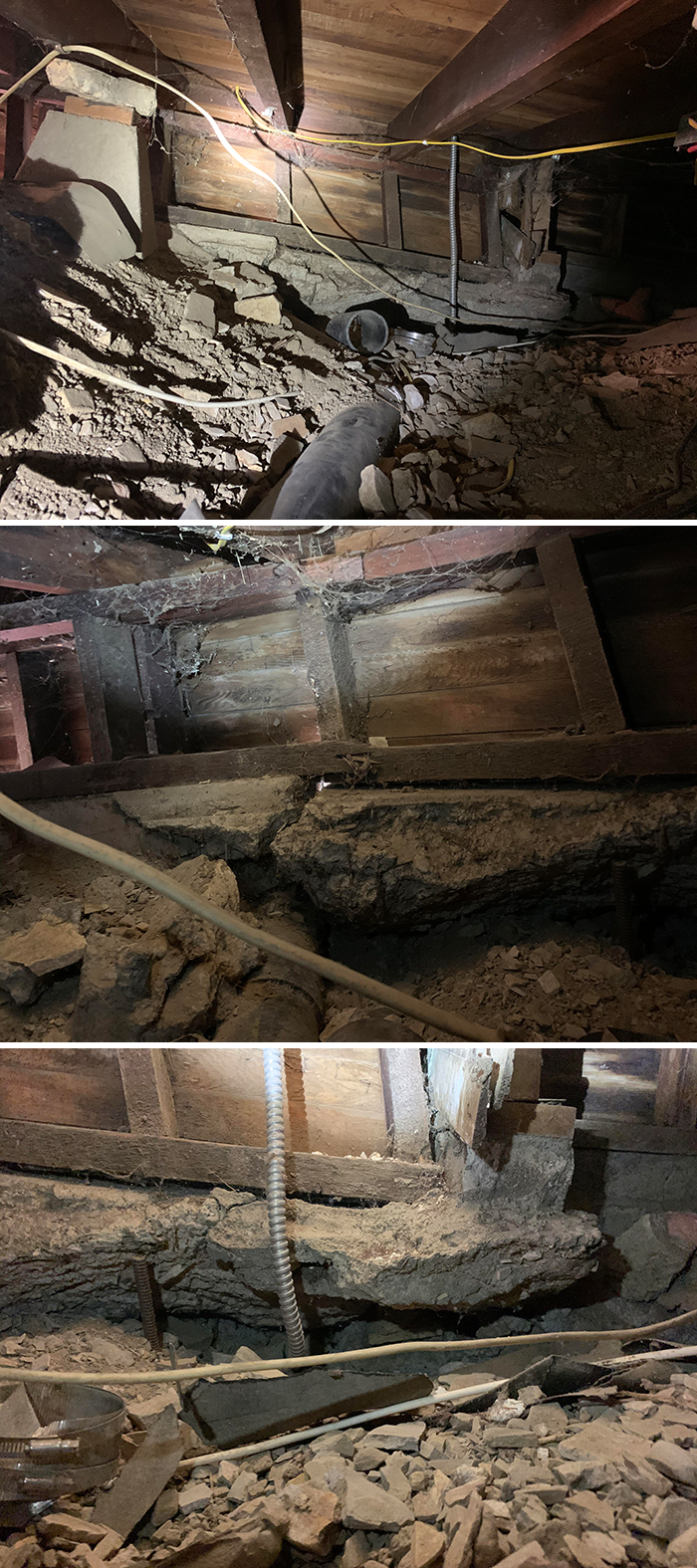
Image credits: AlphaStructural
#34
Me: Can we get a new post & pier Mom: We have a post and pier at home! The post & pier at home:
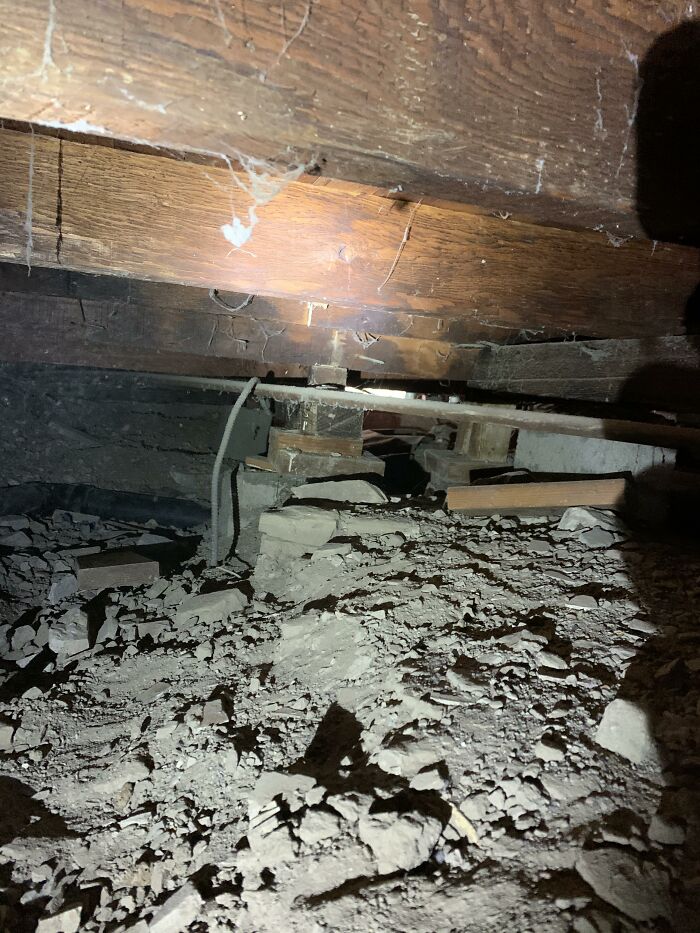
Image credits: AlphaStructural
#35
This was a weird foundation with steel cables as reinforcement and a massive crack going through the entire wall. It's not alright if you can see the light...
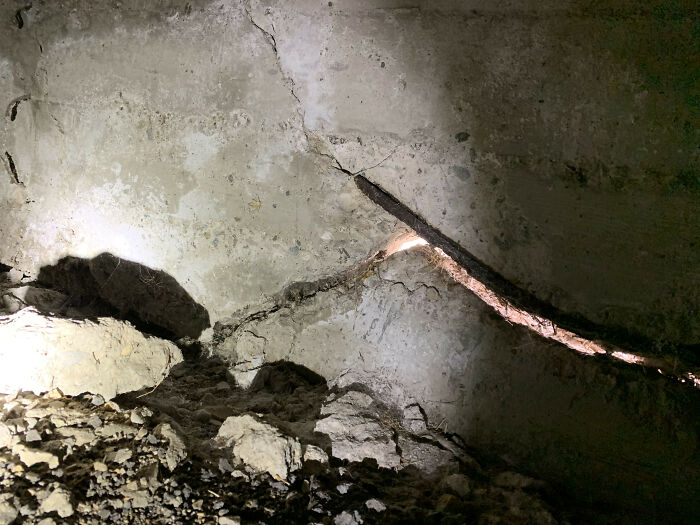
Image credits: AlphaStructural
#36
There was rotted wood everywhere under this home and almost no framing connection to the foundation.
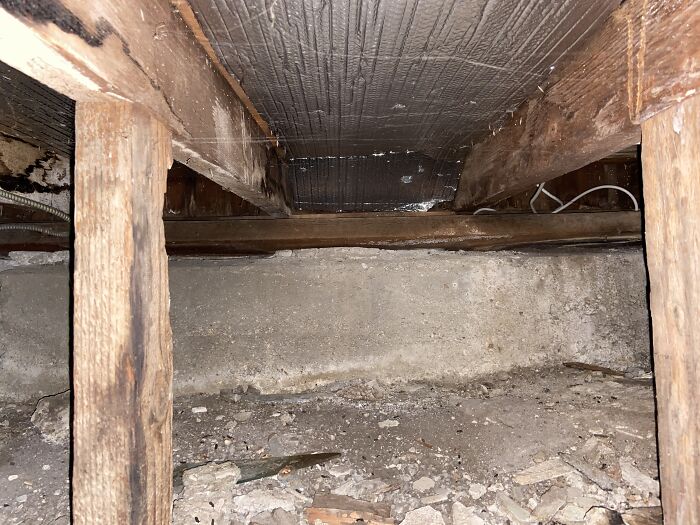
Image credits: AlphaStructural
#37
Relatively new foundation with a large vertical crack! They also cut the girder into the concrete stem wall. Impressive.
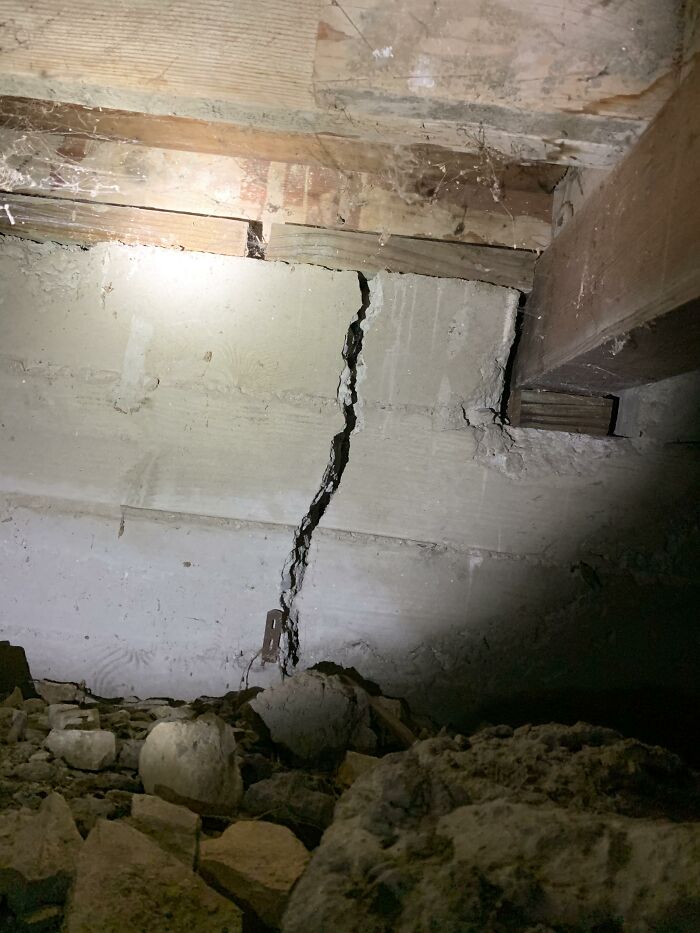
Image credits: AlphaStructural
#38
You can clearly see what's going on with this foundation by just a quick look at the cripple walls and posts. This is the same property. The whole foundation was shifted and settled down to one side. This caused the framing and floors to slope down toward the same way. Scary stuff!
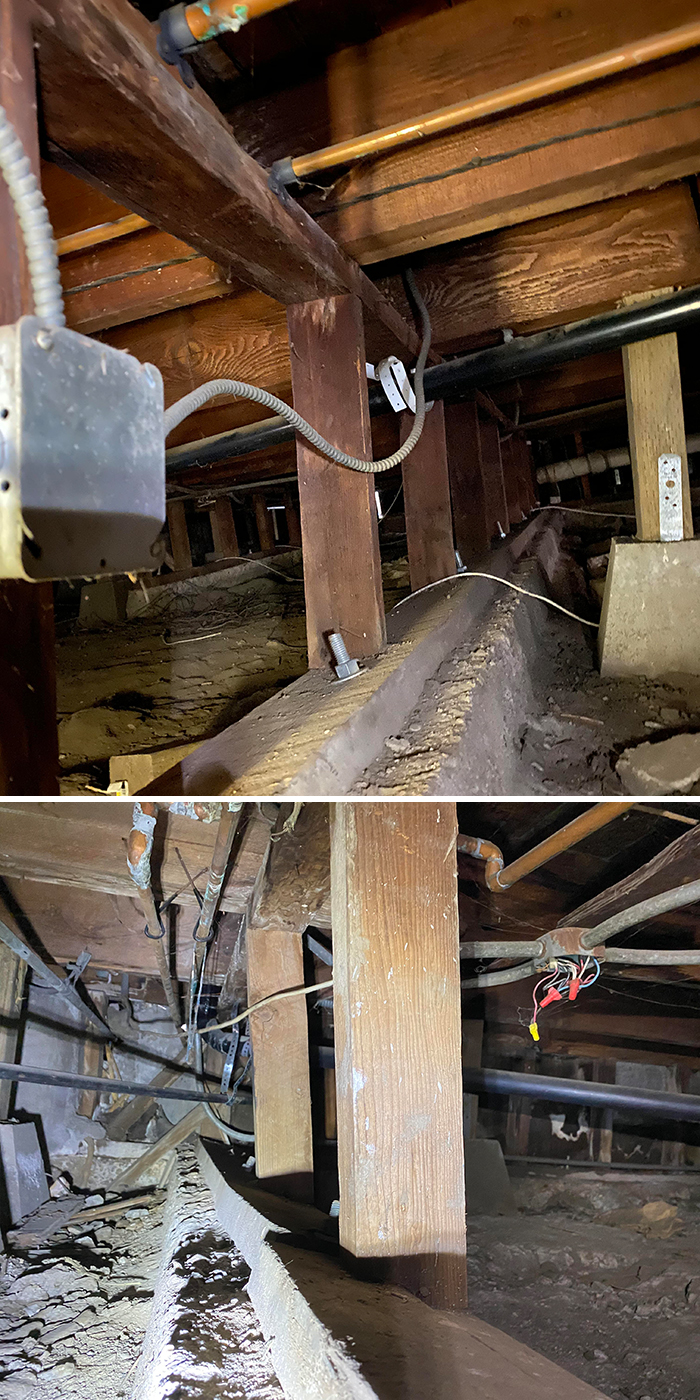
Image credits: AlphaStructural
#39
Bricks stacked on top of a severely damaged concrete foundation with large cracks and old seismic plates. Here's another section of the same foundation. The whole foundation rotated out on this side... check out the cuts on the studs to make up for the angle! One of the access points to this foundation was almost completely blocked off by makeshift foundation walls and dirt.

Image credits: AlphaStructural
#40
This was a brick retaining wall we inspected that had major fracturing going on. Needs to be demolished and replaced! Plenty more to see in this backyard. There was about 3-4 different walls that were all leaning or cracking and they all needed to be replaced!
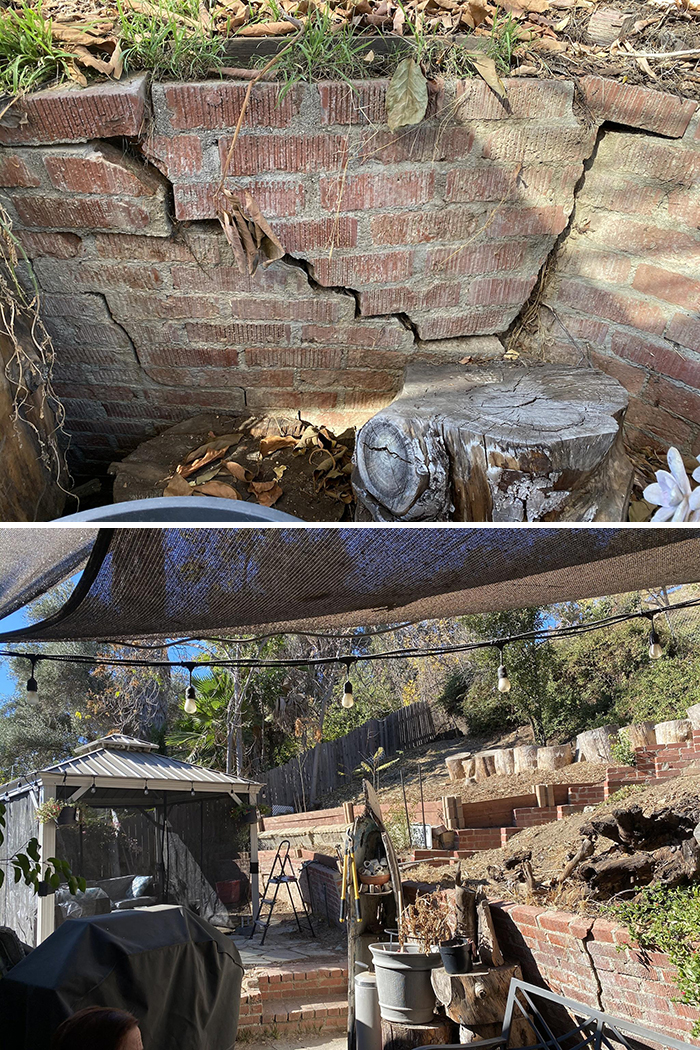
Image credits: AlphaStructural
#41
This was an attempted repair job on a cracked CMU wall. They installed angled steel strap brackets to try keeping one side from collapsing. It’s sort of working... for now. Here’s what the top end looks like. At least it was filled with concrete. No rebar, though!
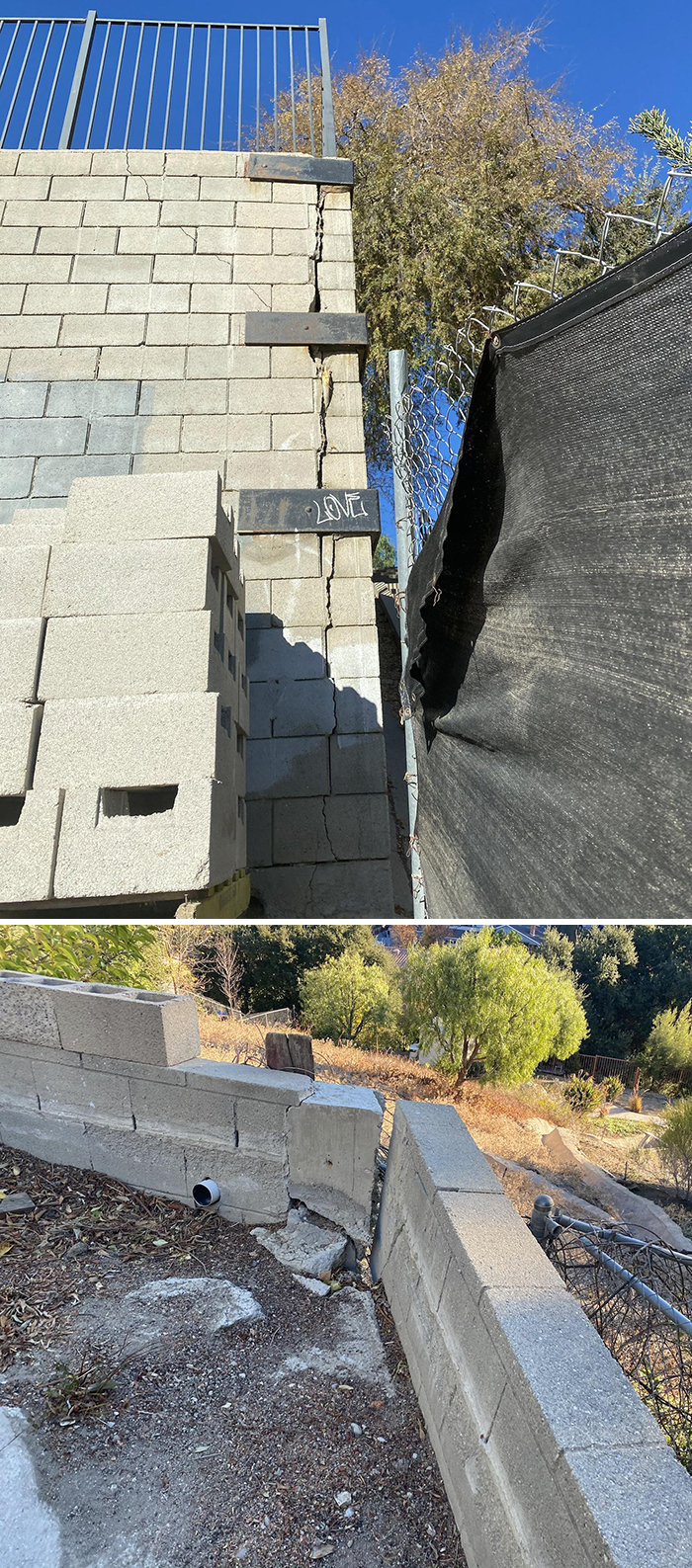
Image credits: AlphaStructural
#42
You have to love the creativity an Jengs skills of whoever did these shim posts! Check out the baby shim above the brick! Amazing!
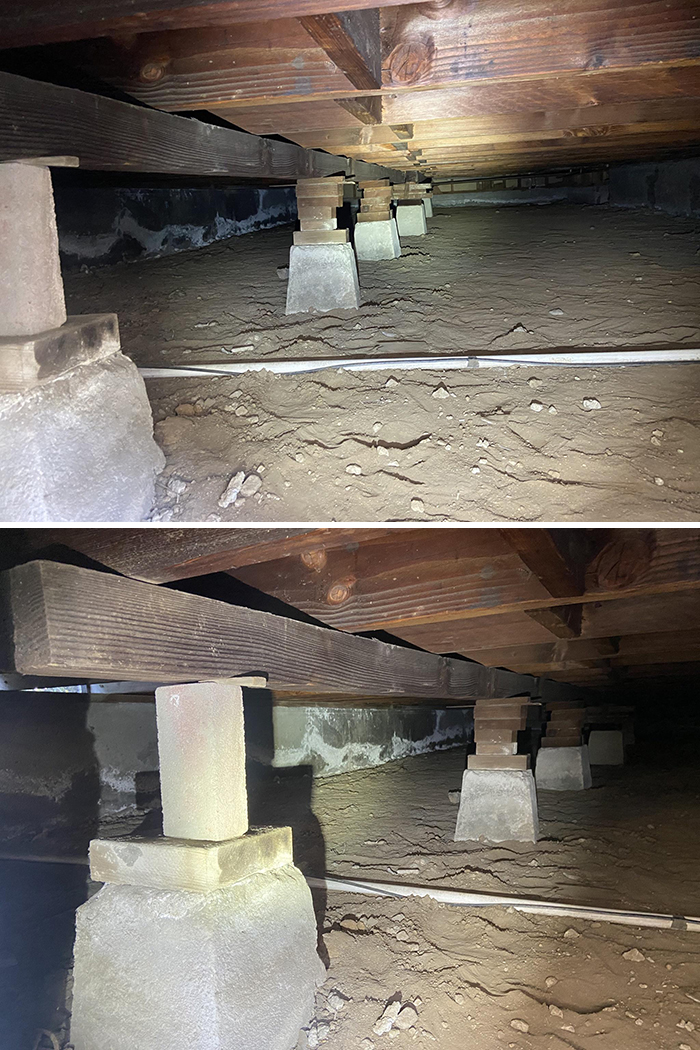
Image credits: AlphaStructural
#43
A very professional retrofit done by somebody who really knows what they’re doing!
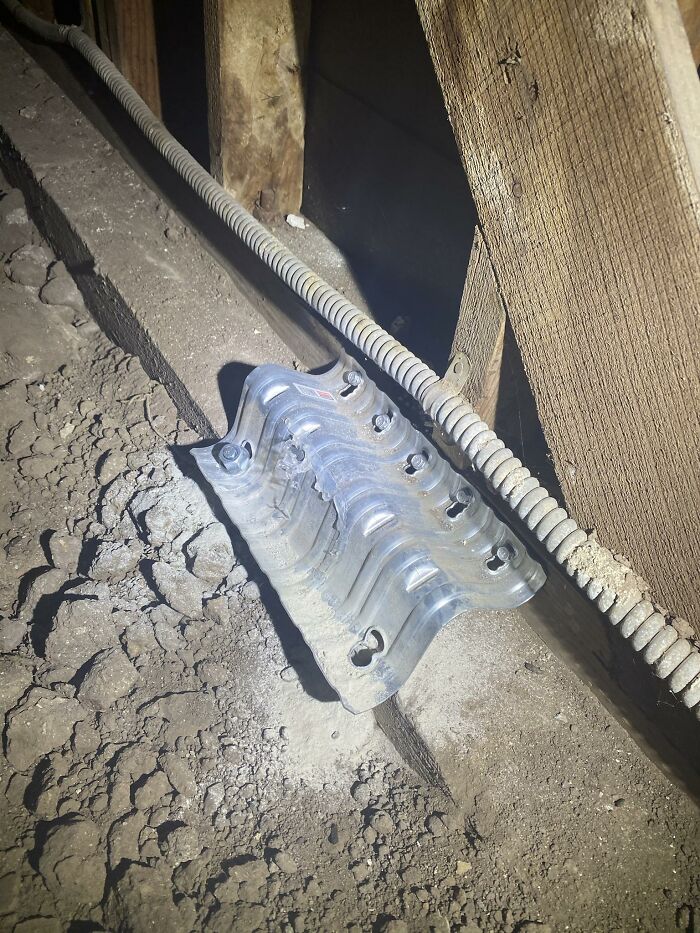
Image credits: AlphaStructural
#44
You want to know what water intrusion looks like on a concrete masonry wall? This is it!
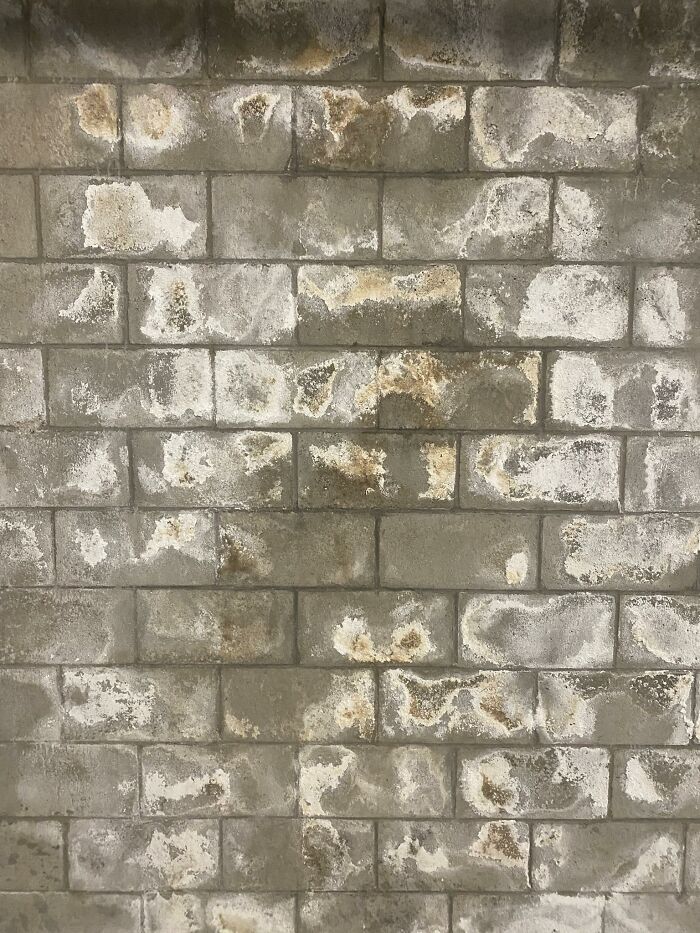
Image credits: AlphaStructural
#45
This is one of those houses you don't want to be under for a very long time... all of the cripple walls and post and piers were tilting and the house was a solid wind gust away from collapsing.
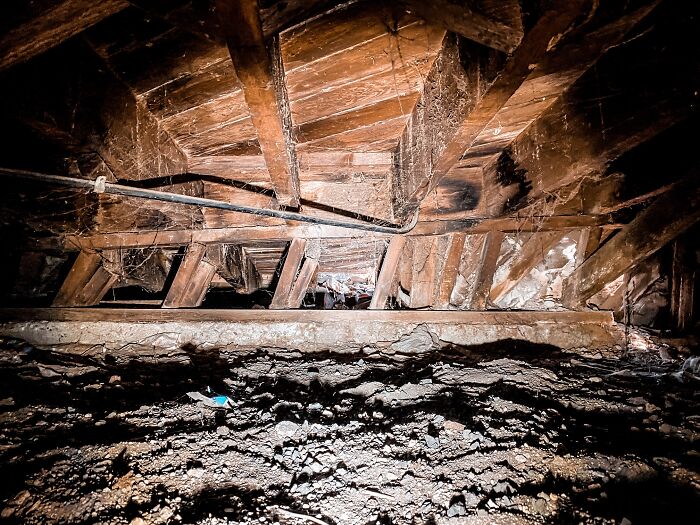
Image credits: AlphaStructural
#46
Part of your retaining wall/house seems to be missing, sir
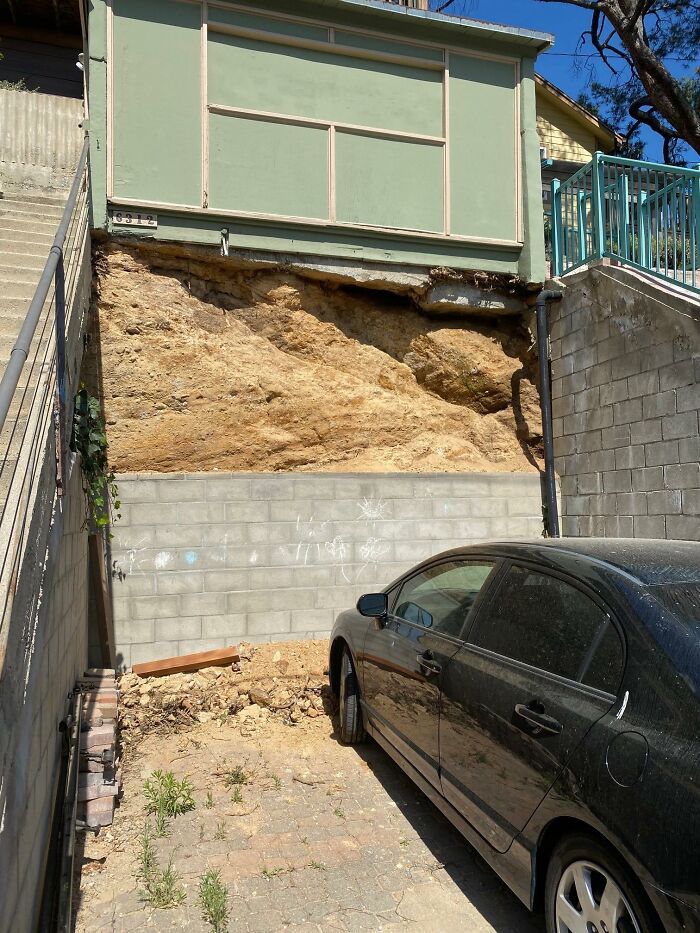
Image credits: AlphaStructural
#47
"Frankenstein's basement" - Aptly put by one of our assessors.

Image credits: AlphaStructural
#48
This is truly a roller coaster ride looking at this joist support
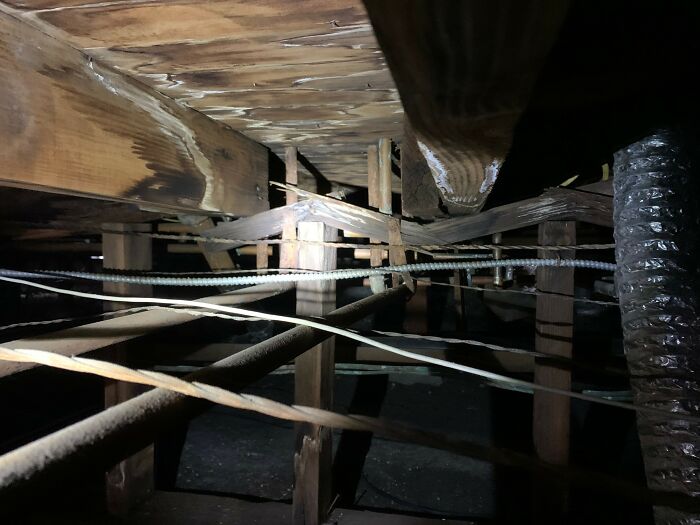
Image credits: AlphaStructural
#49
This is a home we inspected that toppled over a few days after being hit by a car. The home wasn't really retrofitted and had nothing keeping it from toppling over. The home itself is about 3 feet back. There were no signs of bolting into the foundation.
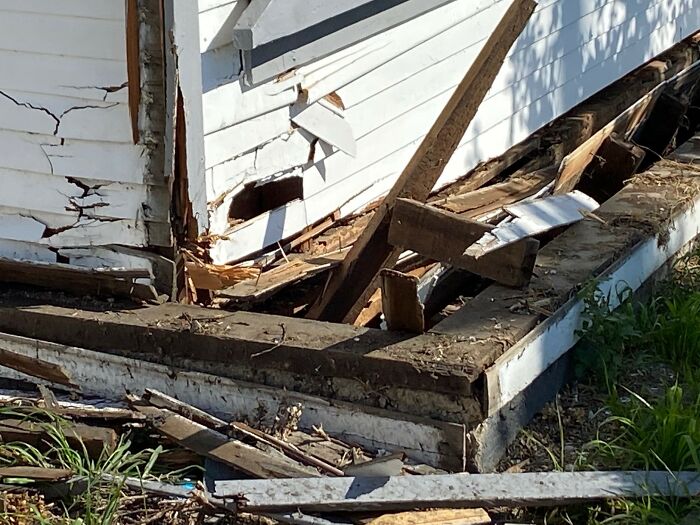
Image credits: AlphaStructural
#50
This masonry wall supported the back half of the home, as well as a deck in the back. Tons of moisture and hillside erosion caused the wall to lose its grip on the hillside and rest of the structure. This type of failure tends to happen in the rainy season in Los Angeles.
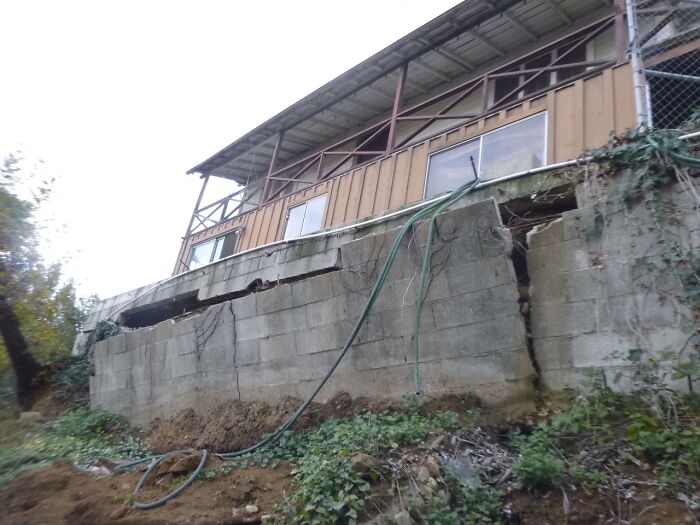
Image credits: AlphaStructural
#51
We’re earthquake retrofitting this building and discovered a few columns that were completely corroded at the bottom. Scary...
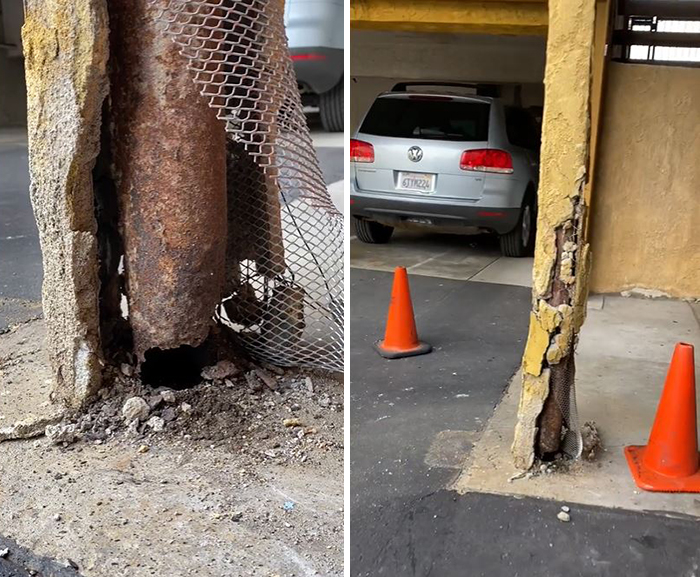
Image credits: AlphaStructural
#52
This is a large landslide that happened in the back of a home in the Sherman Oaks area of Los Angeles County. Earlier this year, there was tons of heavy rainstorms in LA. As the rain saturates the soil more and more, it seeps down to what is called the slip or shear plane. The slip or shear plane is the point at which the soil becomes too heavy and slips away from the rest of the hill. Landslides are so unpredictable and can cause millions in damage and put people in harm's way. Luckily nobody was injured and there wasn't much damage other than some broken windows in the house below.
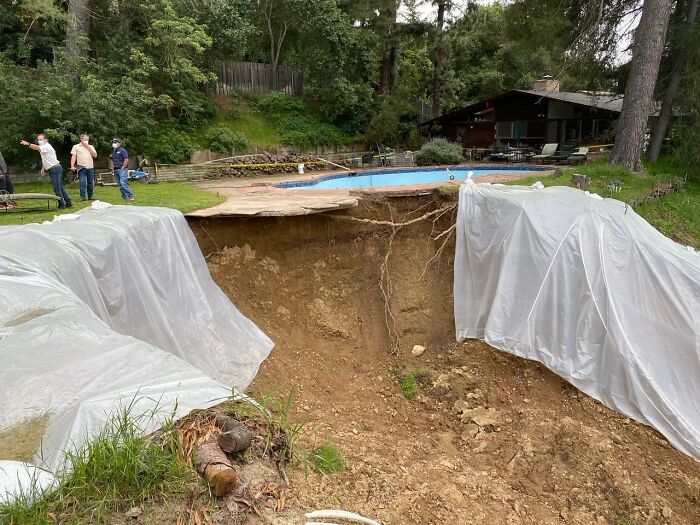
Image credits: AlphaStructural
#53
Upon inspection of this home's foundation, it was discovered that the rebar inside had rusted to a point where the expansion caused the entire foundation to split in half horizontally. Brad's hand for scale. Volume up because sound was muffled!
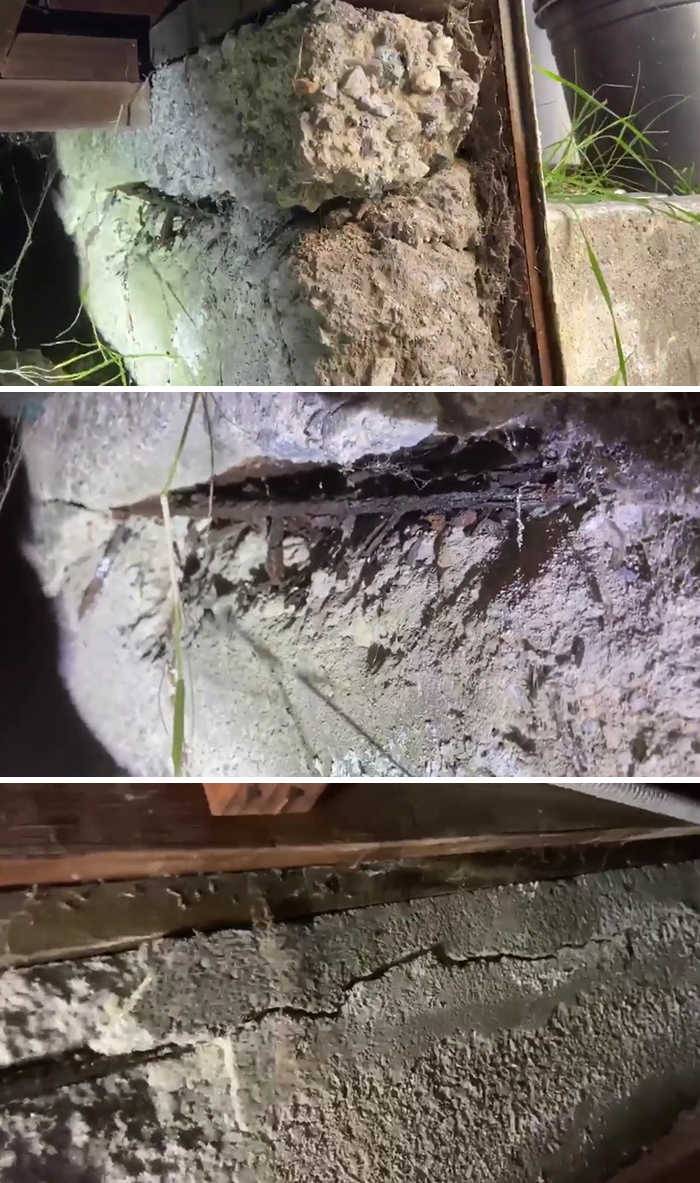
Image credits: AlphaStructural
#54
This was a gnarly hillside foundation we inspected where the cripple walls were falling off of the concrete foundation. This was a gnarly hillside foundation we inspected where the cripple walls were falling off of the concrete foundation. They attempted a repair with these massive support piers which don't appear to go down very far. The concrete foundation wall is in very bad shape with multiple big cracks in the concrete. They tried to install a plate and epoxy but it obviously didn't work too well. In addition to that, there were a couple floating post supports which swung back and forth from the connection straps at the top. Here's the exterior of the property where you can clearly see some rotation and movement with the foundation. This was likely caused by both seismic activity and hillside movement.

Image credits: AlphaStructural
#55
Here's a foundation wall that doesn't need much of an inspection. You can actually see this from the street. In need of a good replacement. At least in that section. This is another massive crack in the foundation of the home above. Sorry for the blurriness in this photo!
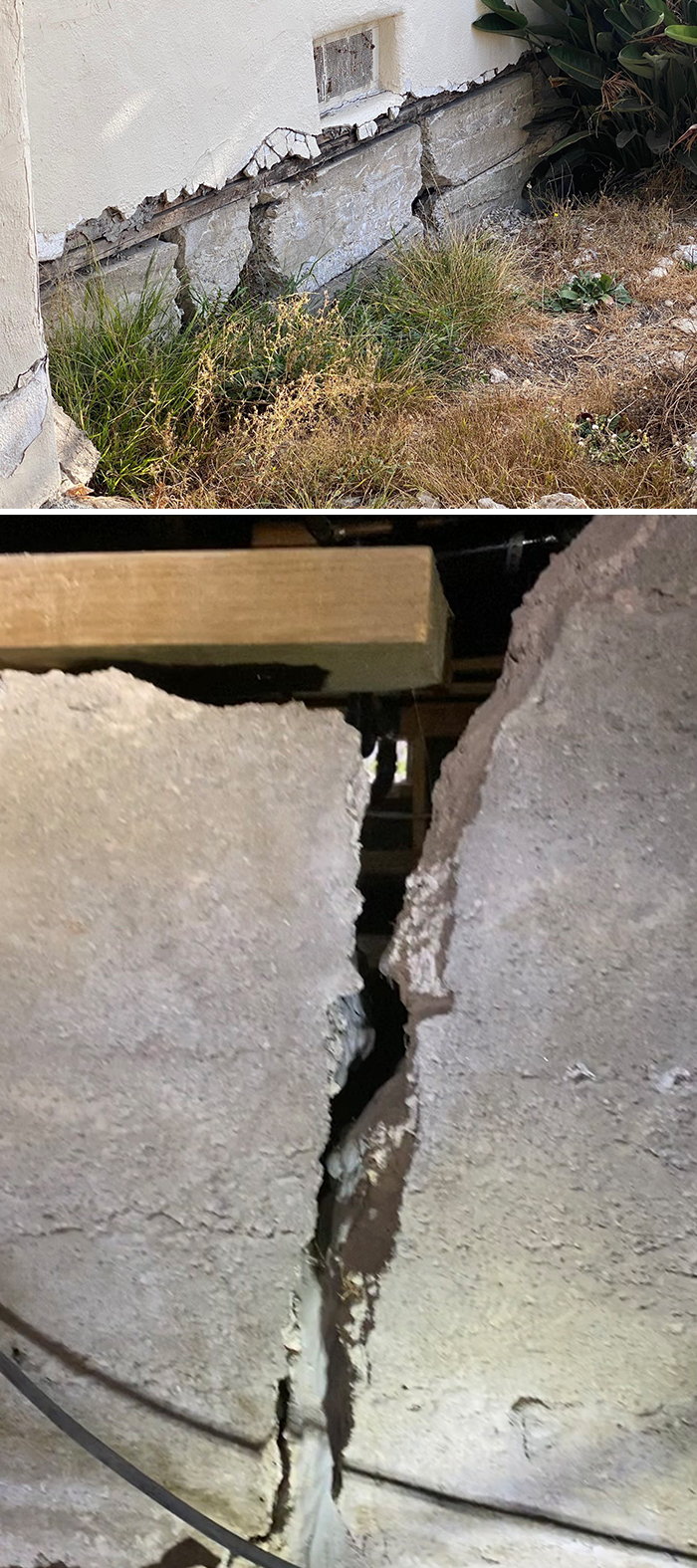
Image credits: AlphaStructural
#56
Expansive soil causing some damage to a post and pier system. This is very common in LA and it seems to be the main source of cracking in homes. This home has an interesting foundation made of part river rock and part concrete. It was almost as if the river rock was meant to be the aggregate for the concrete. Some people would say this is okay to retrofit. They also used some river rocks as the pier for the subfloor post supports. This foundation will likely need a full replacement.

Image credits: AlphaStructural
#57
This is an undermined pier that is ready to fall over with one good shake!
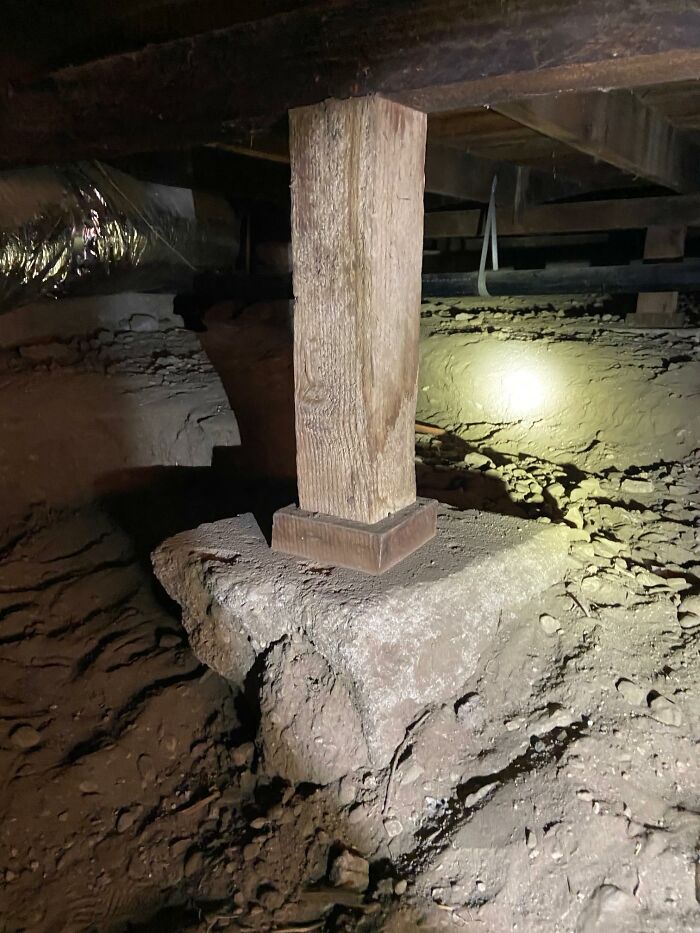
Image credits: AlphaStructural
#58
You have to admire the creativity some people come up with!
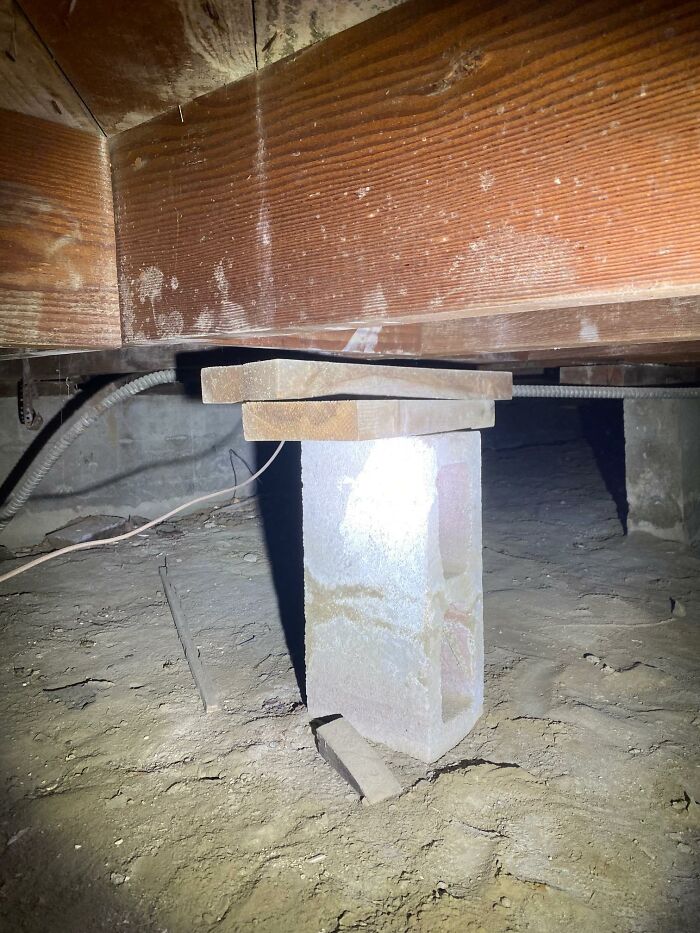
Image credits: AlphaStructural
#59
Ah yes, structural dust
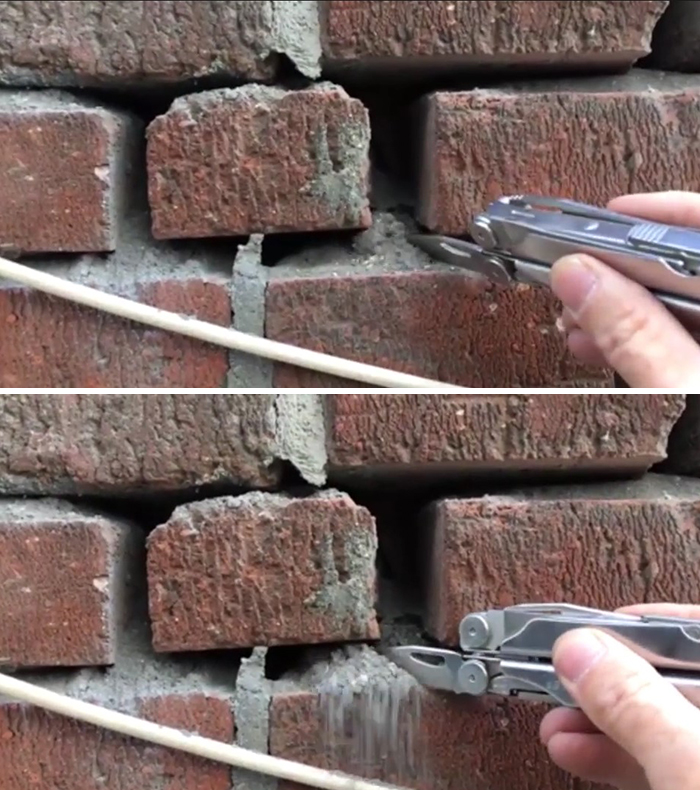
Image credits: AlphaStructural
#60
Here's a next-level pier system in place under this home!
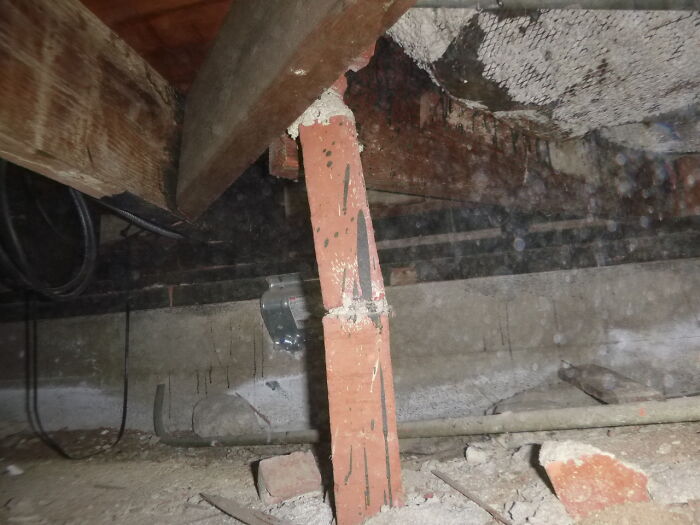
Image credits: AlphaStructural
#61
This is a telephone pole column encased in concrete. It has seen better days. Believe it or not, this was at one time a singular wooden post. Through many years of hightide, a channel was carved through the wood supports, making it seem like they are separate posts.
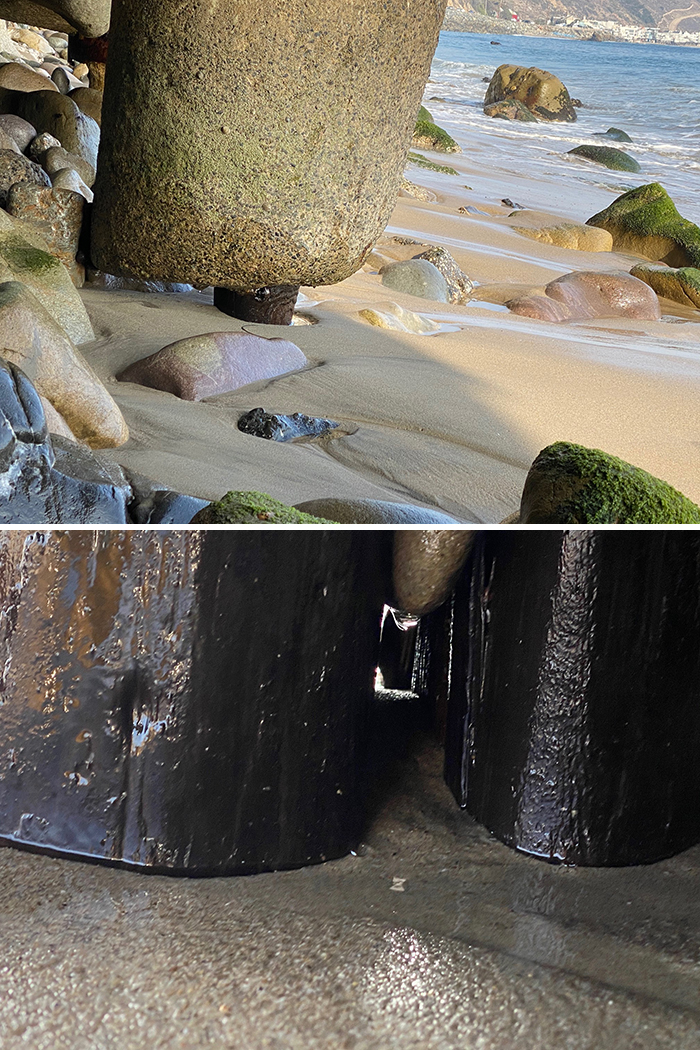
Image credits: AlphaStructural
#62
This is an internal stem wall and sill plate which has a large crack running right down the center. There's no steel inside and it was likely caused by seismic activity or expansive soil.
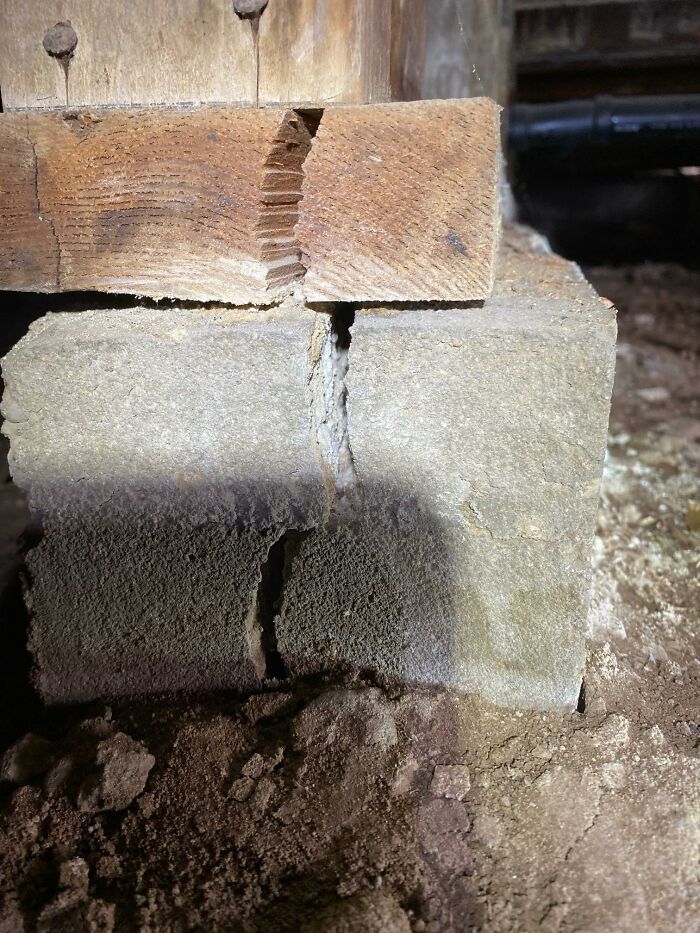
Image credits: AlphaStructural
#63
Here's a gnarly brick foundation which was turning to dust and falling apart. The mortar layers in between the bricks were literally just piles of dust and had no structural value to the foundation walls.
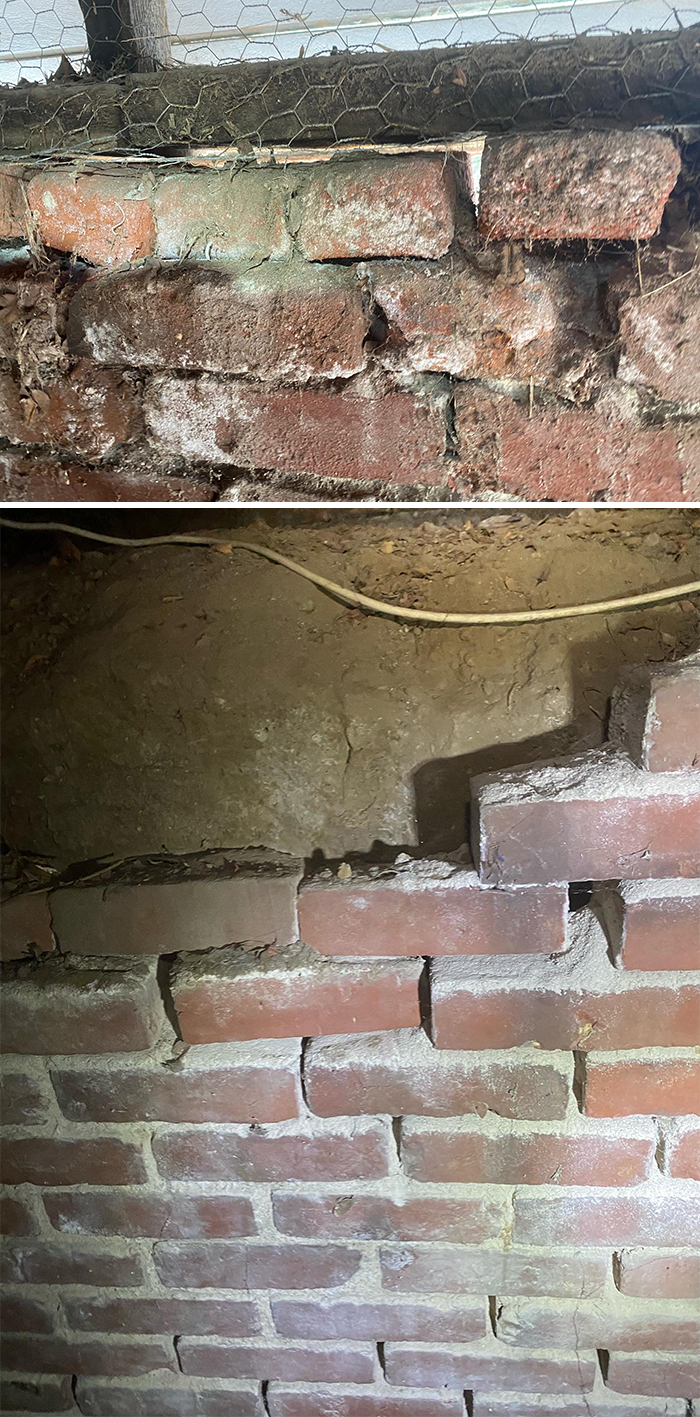
Image credits: AlphaStructural
#64
Oceanfront properties in Malibu are all prone to marine weathering of their concrete foundation systems. Many of them look like this, with exposed steel and withered concrete piles that support the home. The saltwater erodes away layers of concrete and steel over time and causes the supporting concrete, steel, and wood members to slowly be whittled down.
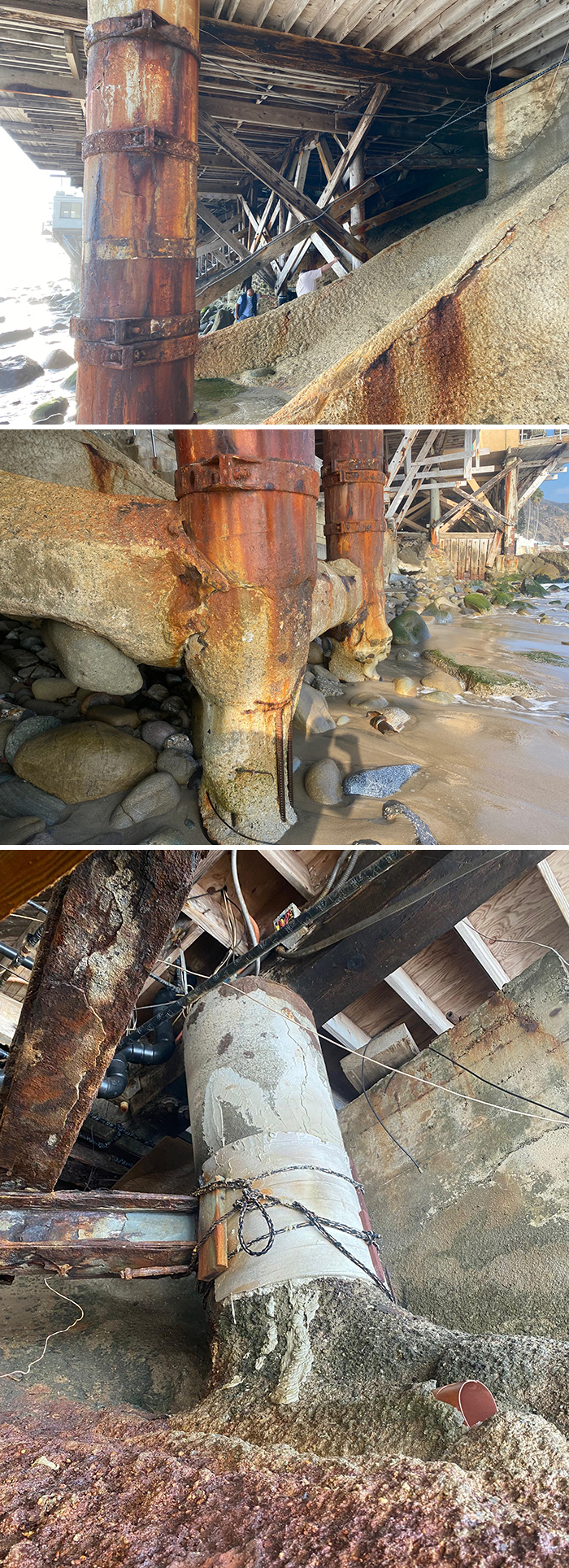
Image credits: AlphaStructural
#65
No effort stabs indicate rotting wood.
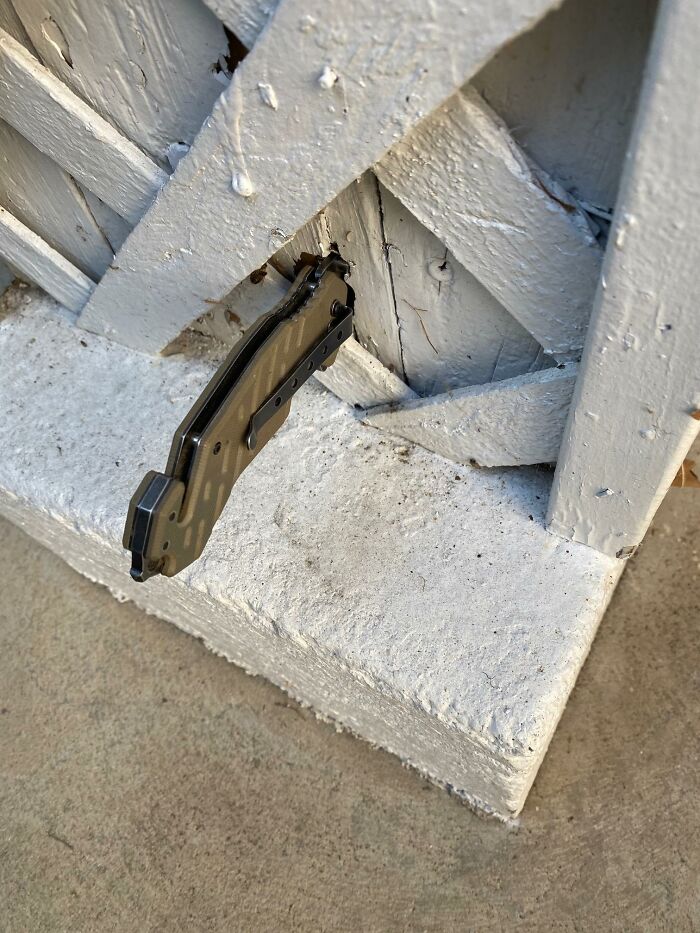
Image credits: AlphaStructural
#66
The entire front porch of this property was separating from the rest of the home and causing multiple stress cracks in the stairs and pathway.
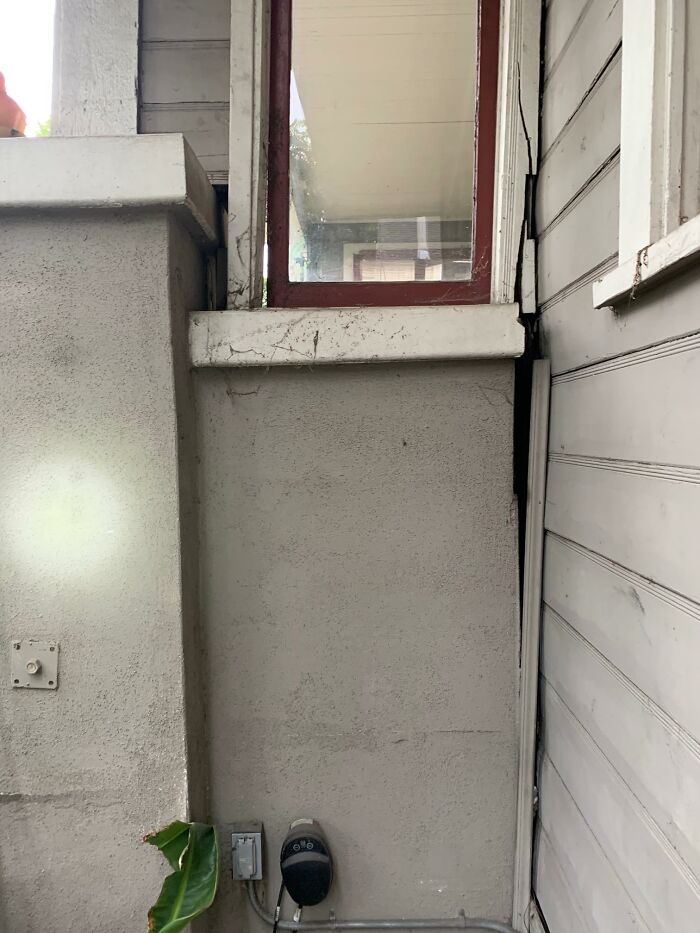
Image credits: AlphaStructural
#67
Load bearing air is the best!
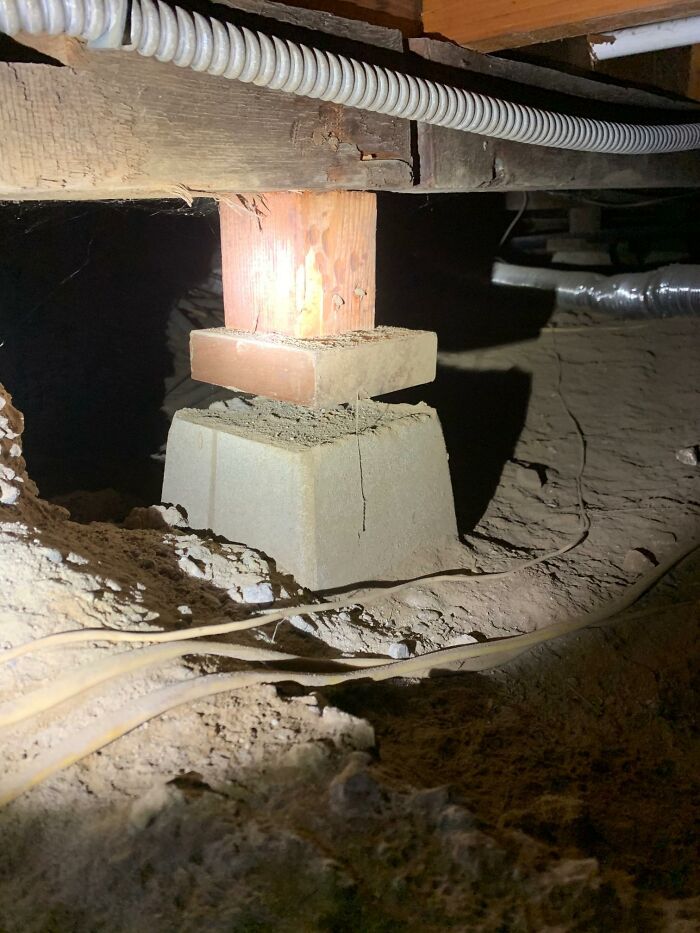
Image credits: AlphaStructural
#68
This CMU retaining wall has begun to splinter as a result of water intrusion from the garage on the other side.
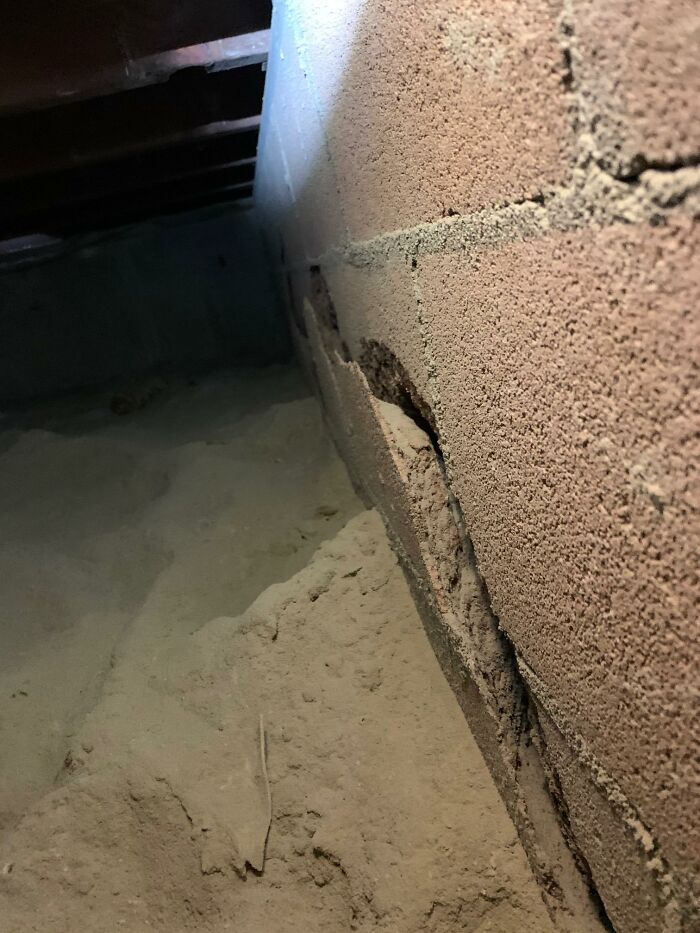
Image credits: AlphaStructural
#69
This is your average masonry wall built on a steep hillside with no reinforcement. It's not rare to see this in LA.
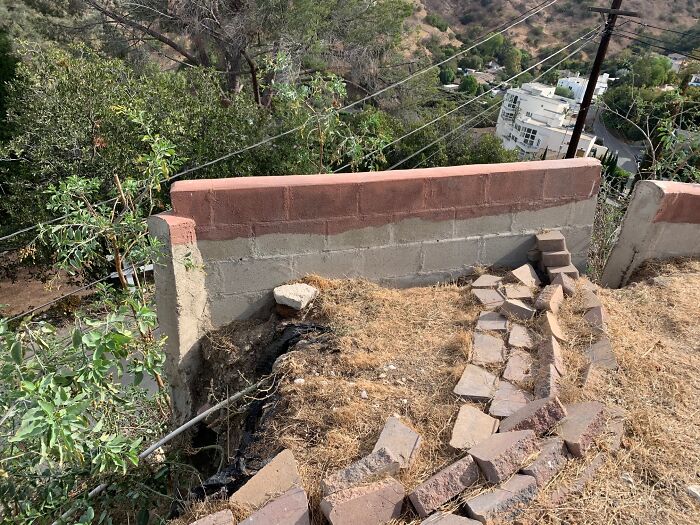
Image credits: AlphaStructural
#70
This is a wall of an apartment building where the first floor is seen to be buckling severely! Here's a shot from the other side. Scary stuff!
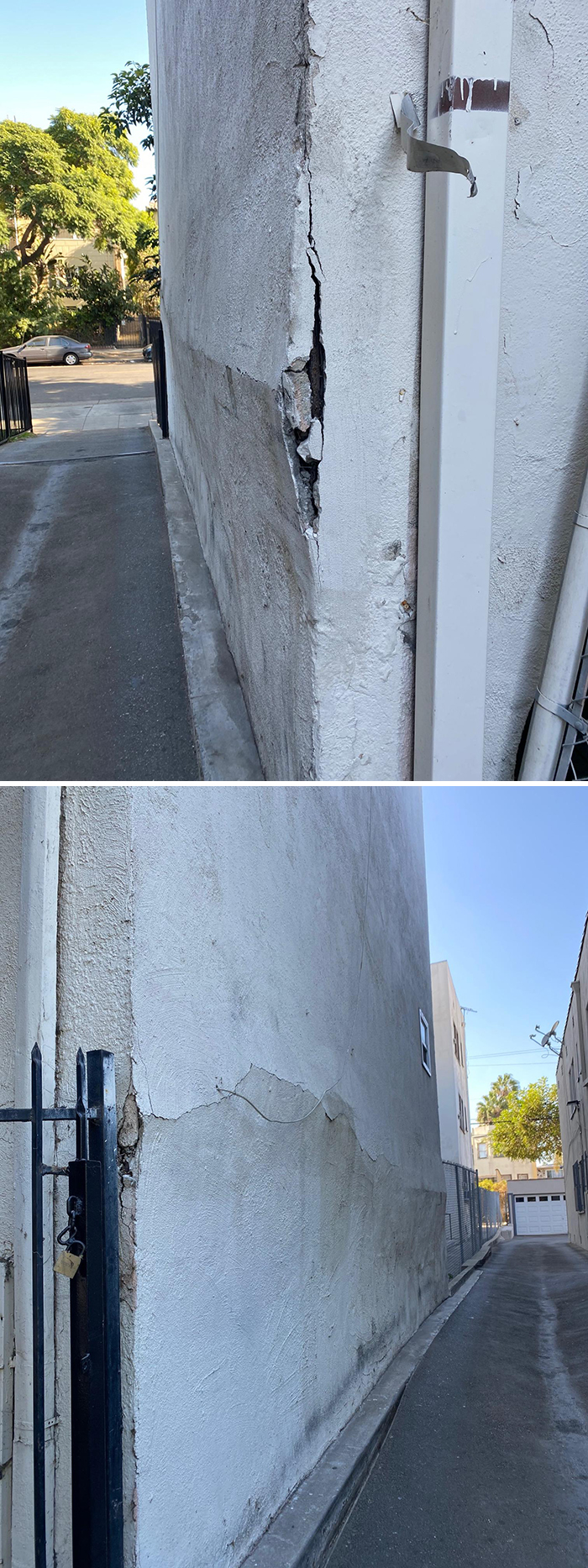
Image credits: AlphaStructural
#71
Our firm was brought into this project to lower the basement down two feet and to add additional supports for framing and brand new concrete foundation walls. The structure had some bad rot as well. The project began with a demo of all the drywall and lath to expose rotting elements of the basement area. It didn't take long to open everything up. We exposed tons of rotting wood and plenty of termite damage, which is always a pleasant surprise. The rim joists were in very bad shape, as were the studs connecting to them. It turned out to be quite the rot repair and we had plenty of replacing to do along with the concrete foundation. After ripping open the walls and exposing everything, engineered shoring was installed to support the stories above. You may be asking, "why does the shoring go down into the ground?" Good questions. Since we are lowering the slab 2 feet, we needed to make sure the structure was supported down to that level where the new slab will be poured, at least until the concrete foundation walls were in! Demolition of the existing walls and slab came next. Additional shoring was added toward the higher elevated area to minimize any risk of buckling in the floors above. It looked wicked from an exterior viewpoint. I'll add that these guys did such a fantastic job of staying on track and getting everything done in an efficient and safe manner. After the concrete was demolished, everything was cleaned up and concrete forming and steel reinforcement was installed in preparation of the walls to be poured. Rebar dowels were set at the bottom of the wall to make the process of connecting the slab grid much easier. Anchor bolts were suspended into the concrete forming so they would set nicely into the new foundation. These will connect the framing of the building to the new foundation walls. Once the foundation walls were cured, the shoring remained in until the additional framing was installed. The forms were stripped and everything came out perfect. No honey comb or pockets. They did such a good job. Internal footings were used to help support the newly replaced framing and beam in the center of the room. Then they added a vapor barrier and sand, and finally put in the steel grid for the concrete slab. The pour came and went and the finishers did what th Thus, the project (at least for our end of the work) was complete.ey had to do in less than two hours. It came out perfect (as it should) and the client was very happy.

Image credits: AlphaStructural
#72
The entire outside perimeter hardscape of this home was sinking almost a foot and was pulling away from the rest of the structure. Pretty gnarly!
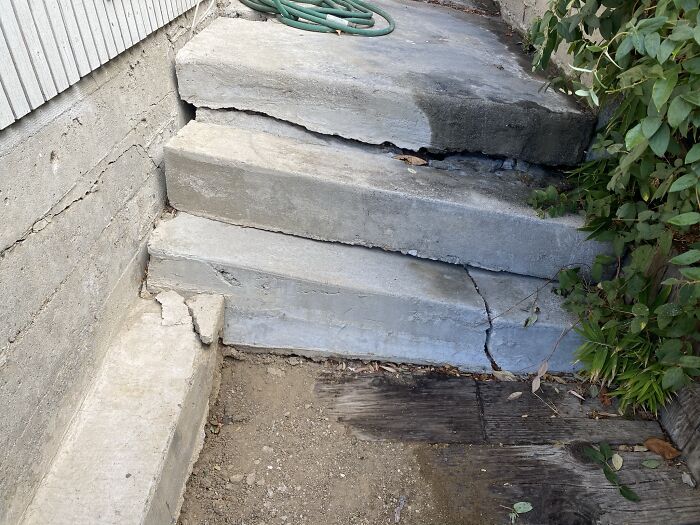
Image credits: AlphaStructural
#73
At the corner of this home, a peculiar line of stucco seemed to be cracking and separating on both sides of the wall. It just seemed odd as to why, given that the rest of the house didn't seem to have anything like this. It turned out that an independent masonry column was built right at the corner and was pulling away from the rest of the wooden framing of the home. Very interesting.

Image credits: AlphaStructural
#74
A leaking pipe right next to a severely rotted post which holds up a main girder support in the middle of the home.
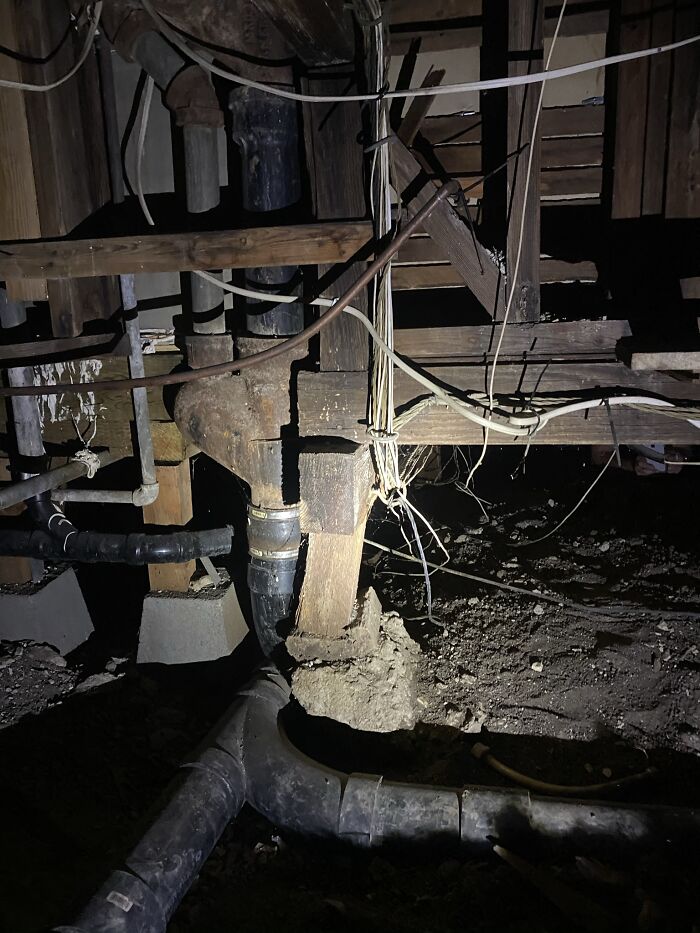
Image credits: AlphaStructural
#75
Check out the compression at the bottom of this post and pier. It takes some moist wood and a good amount of pressure for that to take place.
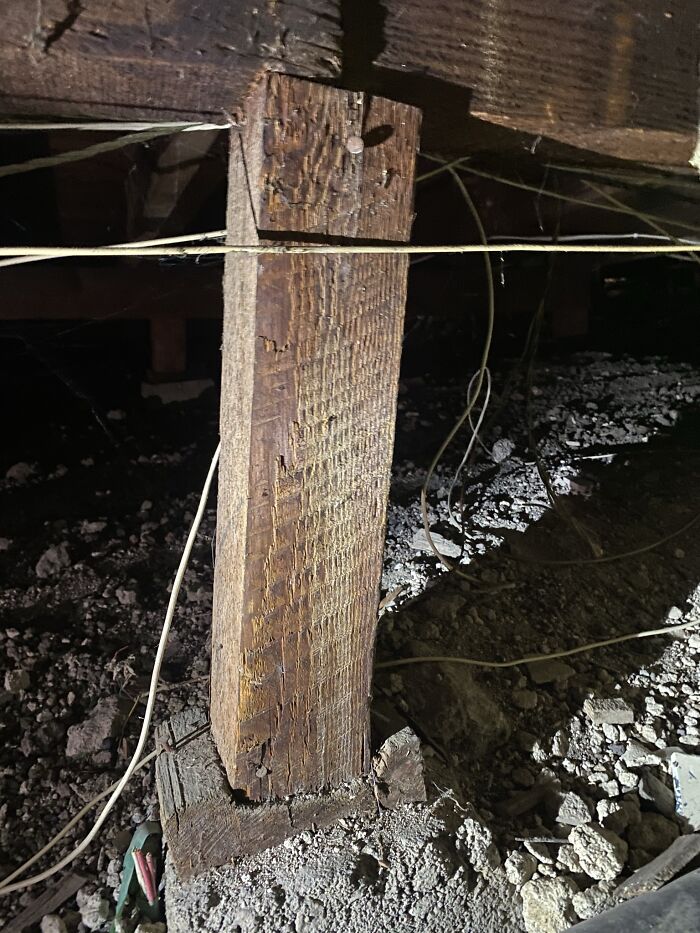
Image credits: AlphaStructural
#76
Wood rot at the bottom of a two-story apartment building built in the 70s.
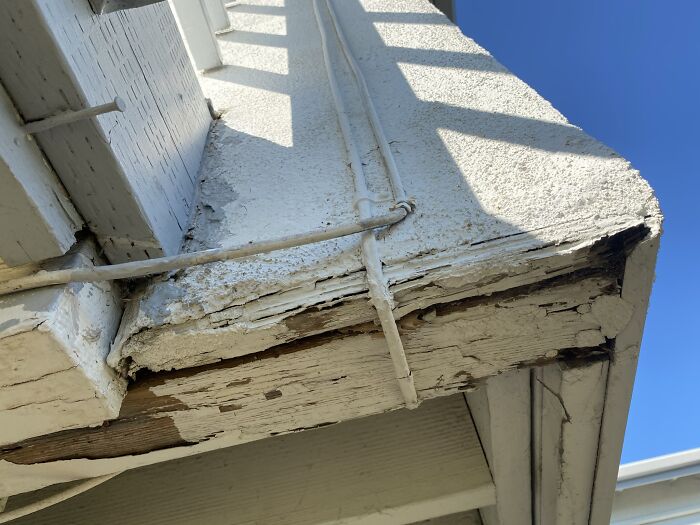
Image credits: AlphaStructural
#77
A wall made of hollow clay tile blocks was used to help reinforce this foundation wall. The actual concrete wall had tons of surcharge pressure from the soil behind it, thus the reason they built the tile wall. They tried using expansion/insulation foam to fill the voids in the tile blocks, but it wasn't enough to keep the wall holding strong. The wall was clearly being pushed out from the concrete foundation and the hydrostatic pressure from the soil below. Here's the entrance where you can see that both sides of the wall are leaning!

Image credits: AlphaStructural
#78
Does anyone want to guess what that pile of "stuff" is? I'll give you a hint: it isn't sawdust! ;)
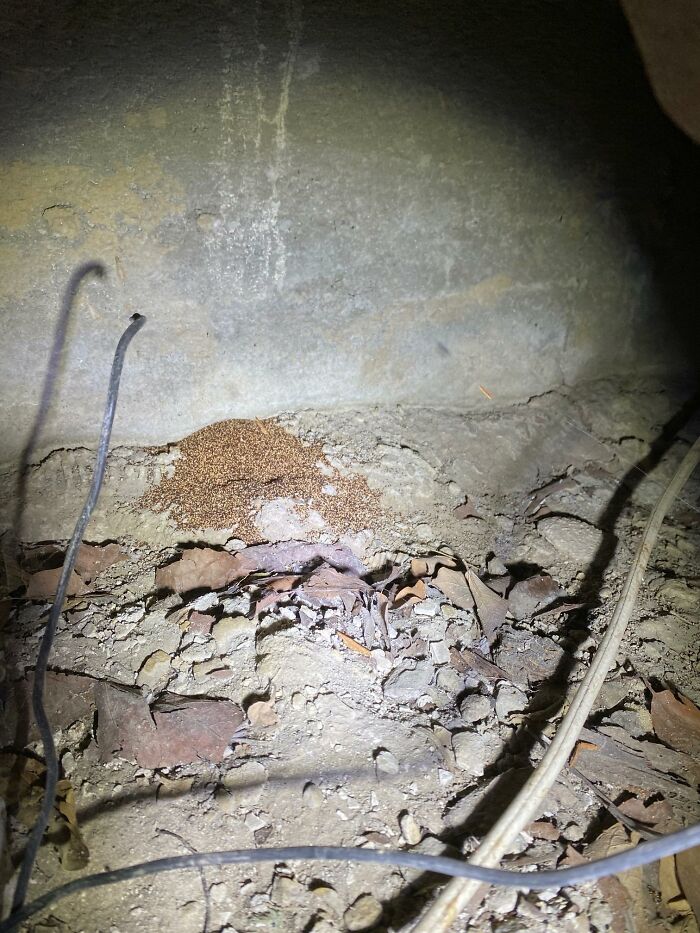
Image credits: AlphaStructural
#79
Rubble wall made up of concrete slab chunks, concrete and masonry. Some roots worked their way into the cracks as well.
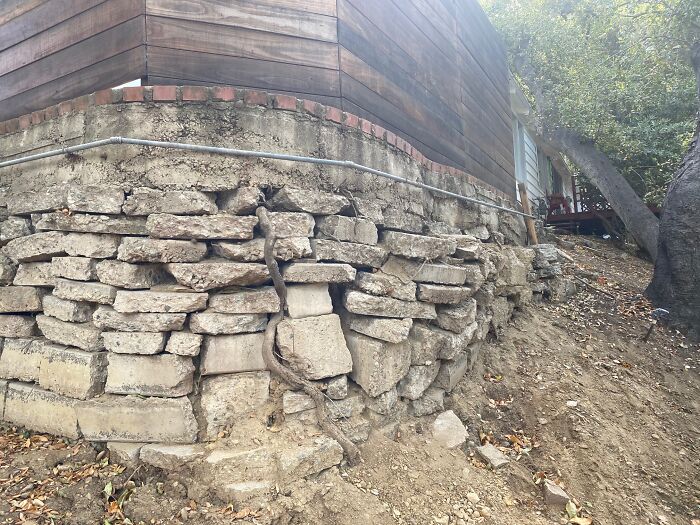
Image credits: AlphaStructural
#80
A decently sized foundation crack that goes through the whole wall.
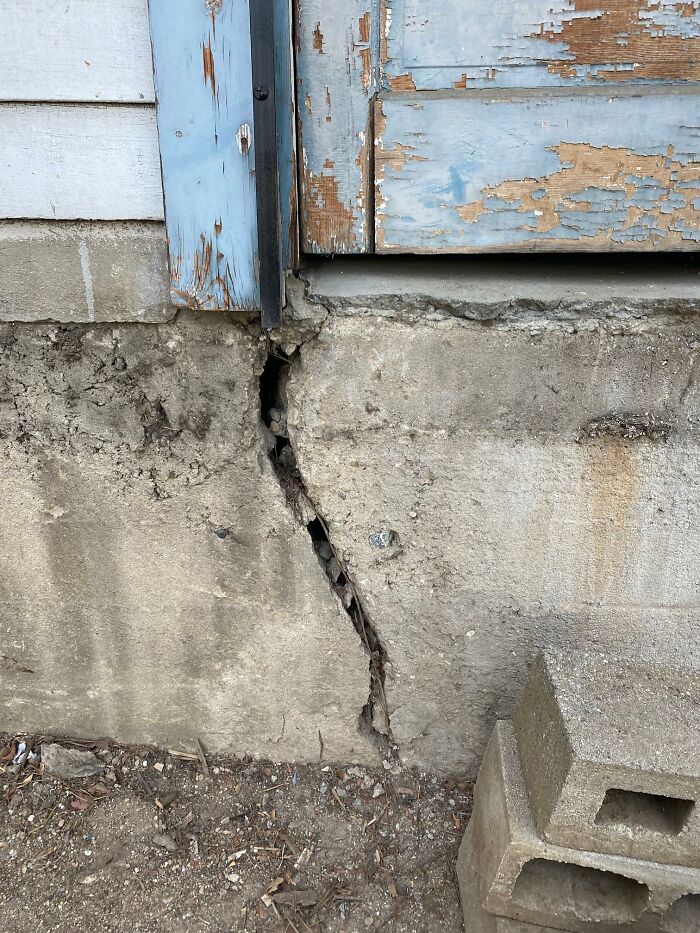
Image credits: AlphaStructural
#81
We often get called by homeowners concerned about cracking in their home. Now, SoCal in particular has many areas riddled with clay soil, which expands and contracts with moisture or lack of. THIS is the type of cracking you should really be concerned about as a homeowner. In this particular instance, the home is quite literally pulling apart and splitting down the middle due to settlement and bad soils conditions.
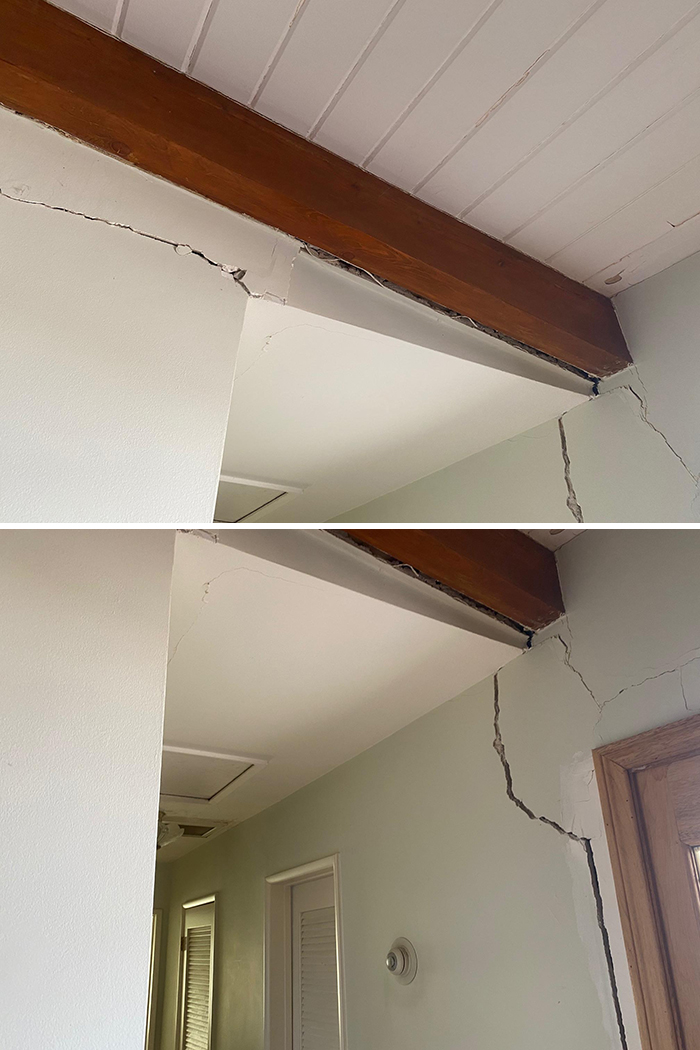
Image credits: AlphaStructural
#82
That's one way to tell if the concrete is in bad shape. If you can put a knife through concrete like it's butter, it's time to explore getting a new foundation!
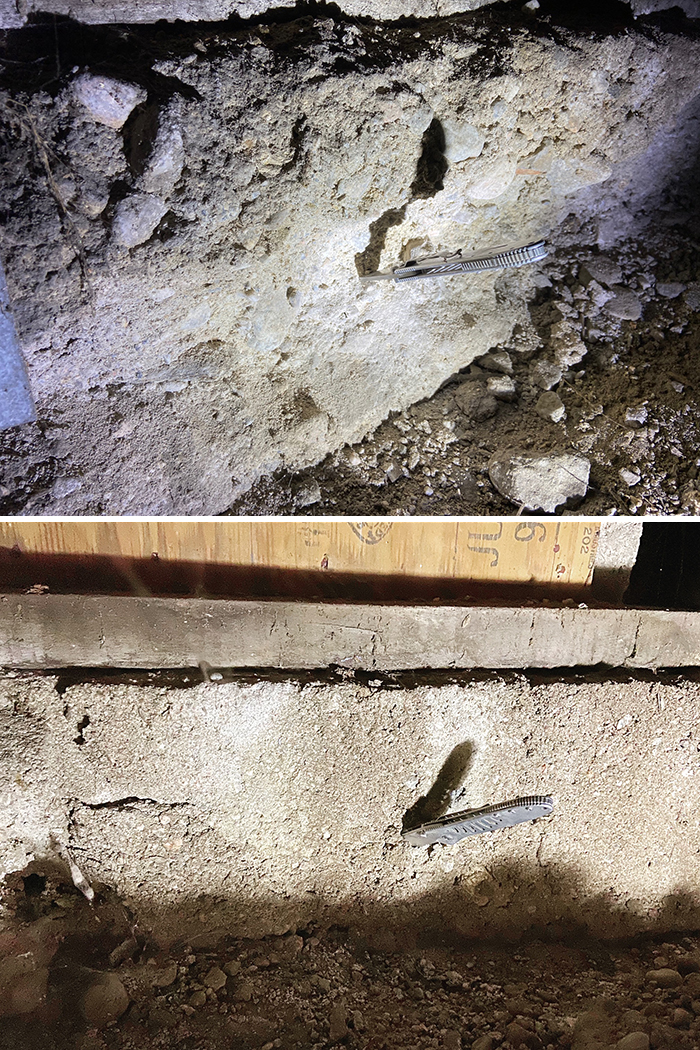
Image credits: AlphaStructural
#83
This is a stilt home we inspected up in the Hollywood Hills. Awesome home, but the wooden supports holding up the house are rotting badly where they connect to the foundation system. Really bad rot damage...

Image credits: AlphaStructural
#84
Dirt stays in form after tossed from a shovel
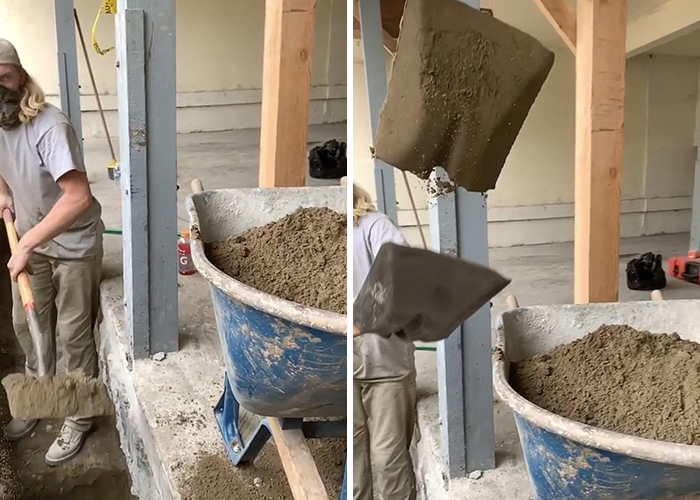
Image credits: AlphaStructural
#85
Nature wins this episode of man vs. wild!
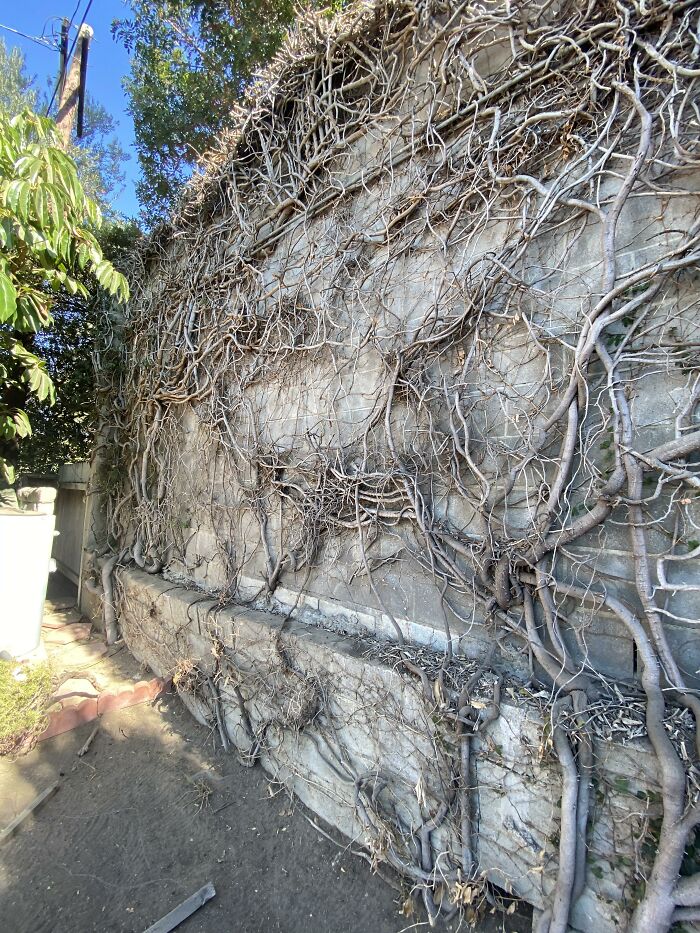
Image credits: AlphaStructural
#86
Invasive root systems took over this old masonry wall and promptly began to bring it down.
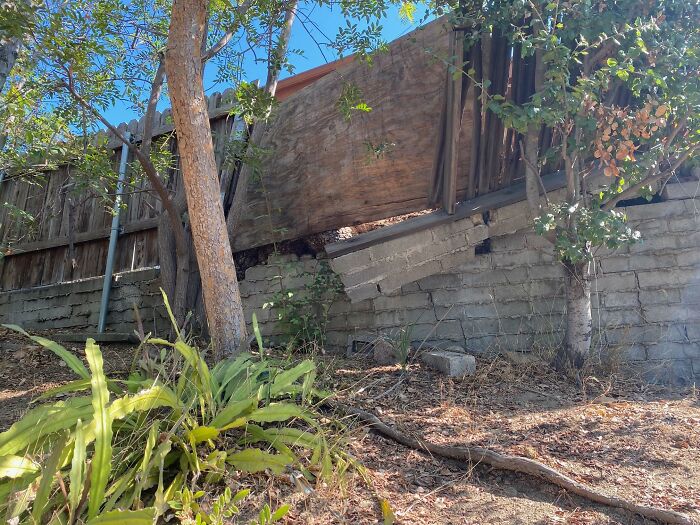
Image credits: AlphaStructural
#87
This cantilevered wooden deck has some serious rot damage to the joists and needs immediate attention before anyone else steps on it. There's a reason an ordinance to repair these old wooden balconies has been set in place.
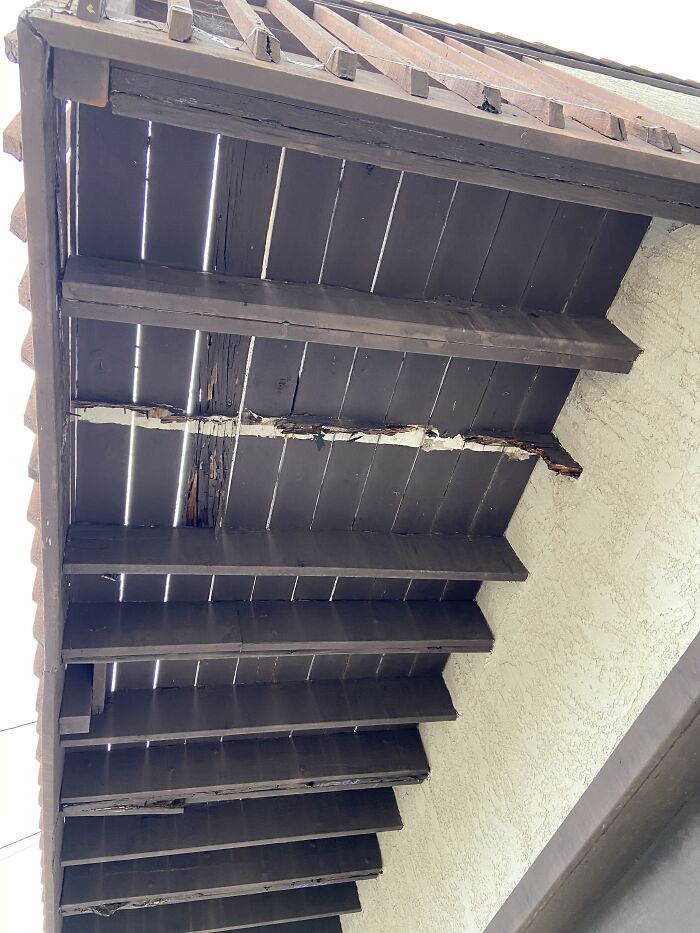
Image credits: AlphaStructural
#88
Part of a back patio area where the concrete has cracked and settled where the stairs are located. (Feat. Sandal)
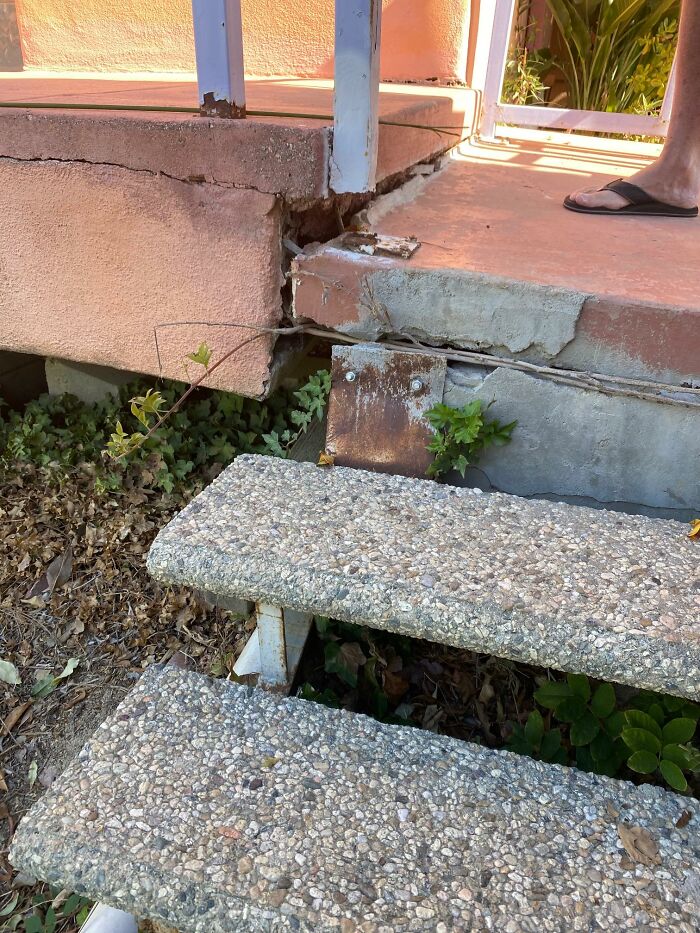
Image credits: AlphaStructural
#89
Not that this foundation stood a chance, but the strong root system of a ficus has made its way through the concrete, causing additional damage to the crumbling stem wall. Evidence of termite damage and rot were riddled throughout the cripple wall as well.
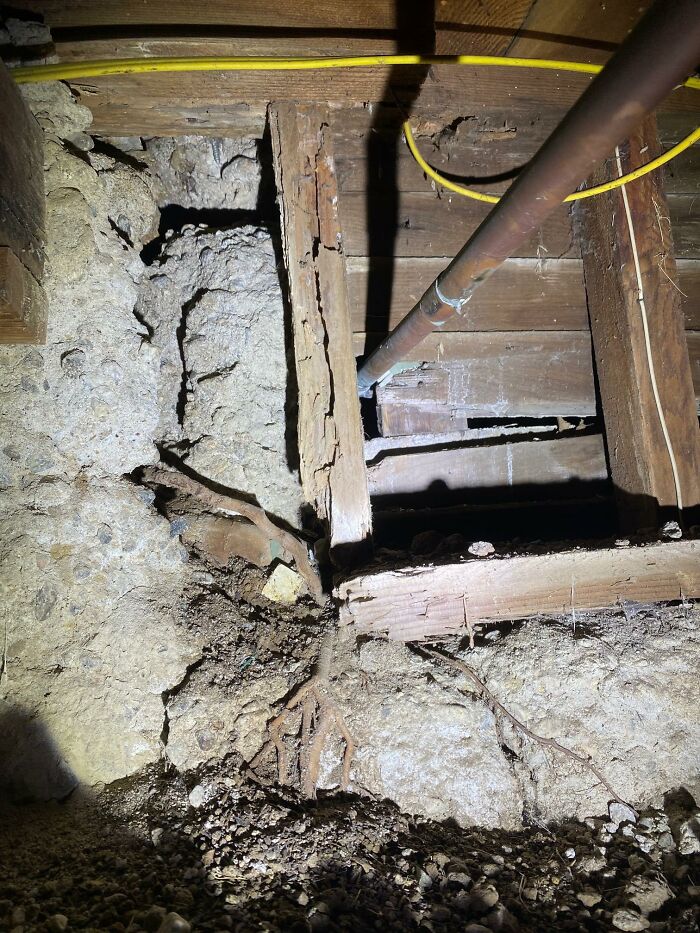
Image credits: AlphaStructural
#90
Something here seems a little off...
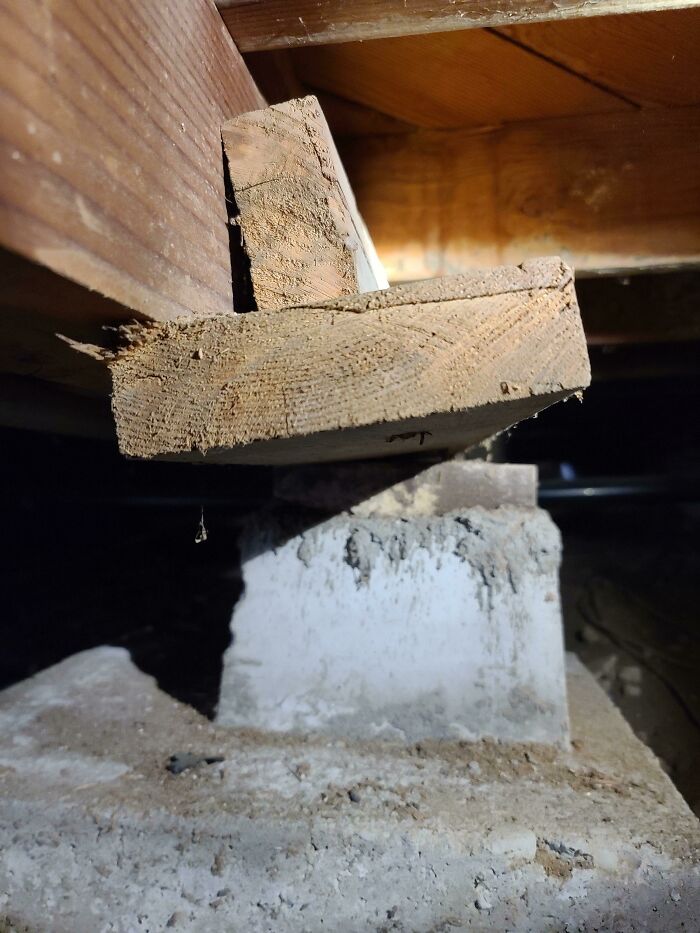
Image credits: AlphaStructural
#91
This was a property that had gone through a fire and much of the underside of the crawlspace was still damaged. The burnt joists holding up the subfloor were sistered with new lumber. Even some of the original posts were left there and coupled with 2x4s on each side. Some new elements were installed recently, but this is one where a full demo should have been explored in the first place. Not only that, but the brick foundation is in terrible shape.

Image credits: AlphaStructural
#92
That's one way to reduce the shear strength of a cripple wall. There was also a termite infested joist sitting right above it. Very nice!
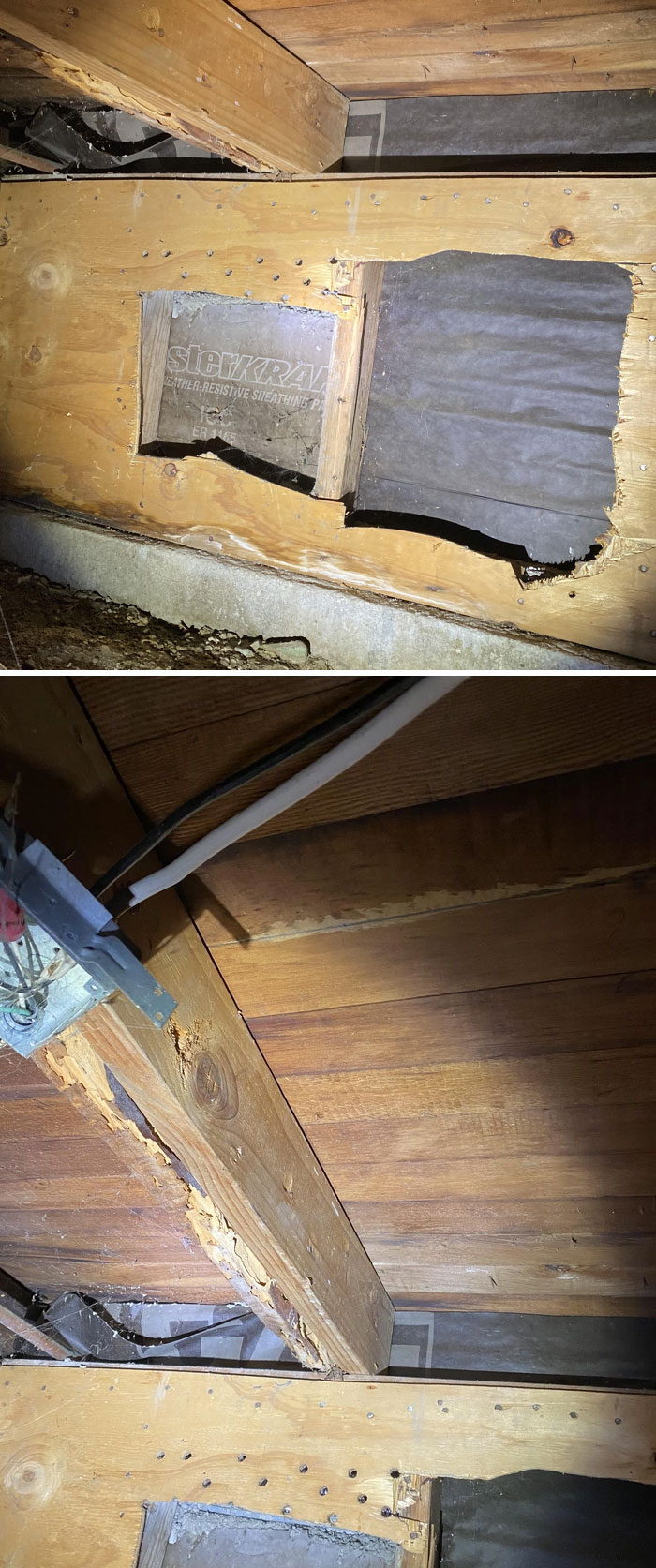
Image credits: AlphaStructural
#93
A few classic LA post and "piers".
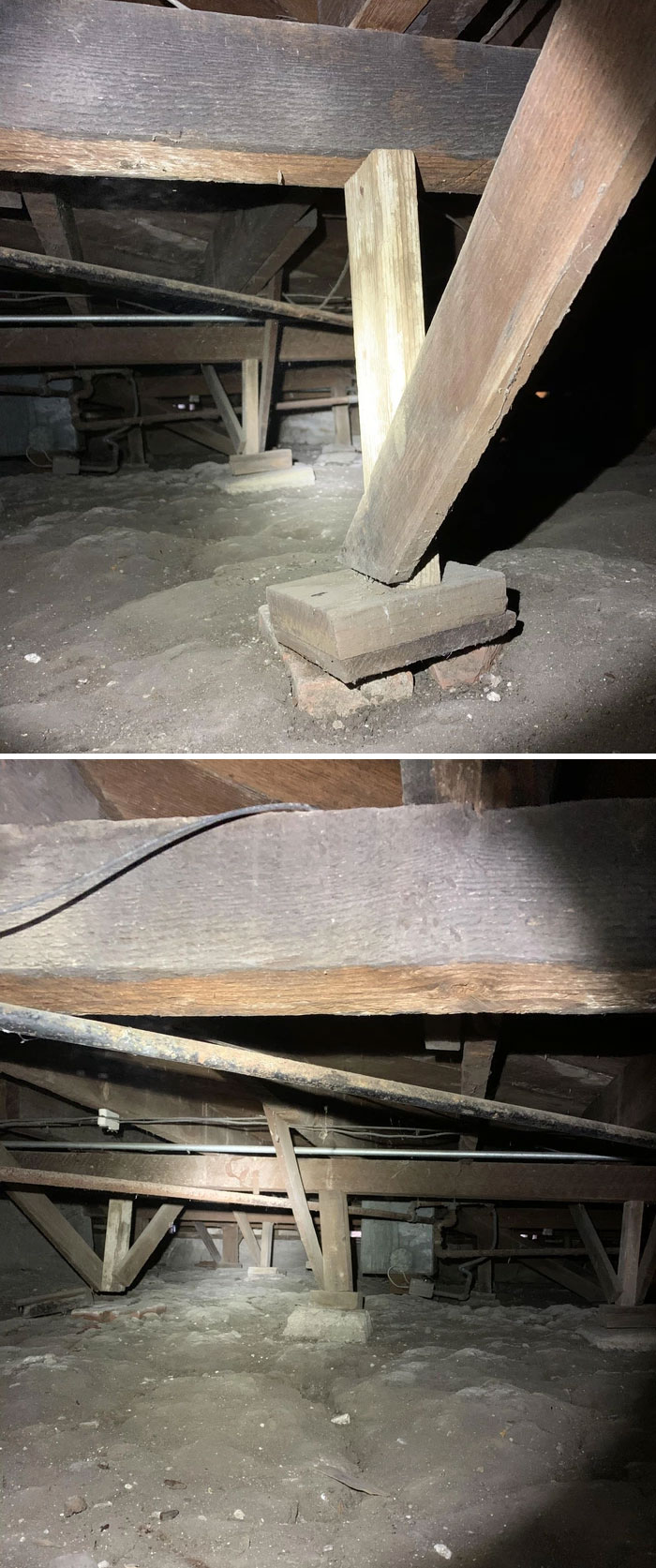
Image credits: AlphaStructural
#94
This cripple wall had rotated about 10 degrees off the foundation. Somebody else came in and made everything flush and nice, but kept all the original framing and added new studs, plywood, and metal hardware

Image credits: AlphaStructural
#95
Netting and garden lattice - the best kind of hillside protection!

Image credits: AlphaStructural
#96
This garage door header has seen some better days! We've actually done many repairs for this
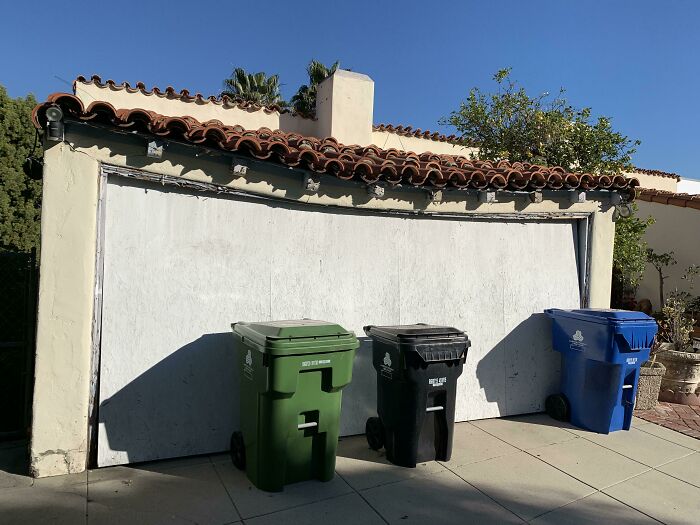
Image credits: AlphaStructural
#97
Here we have another pier which has been undermined by somebody digging out the areas around it
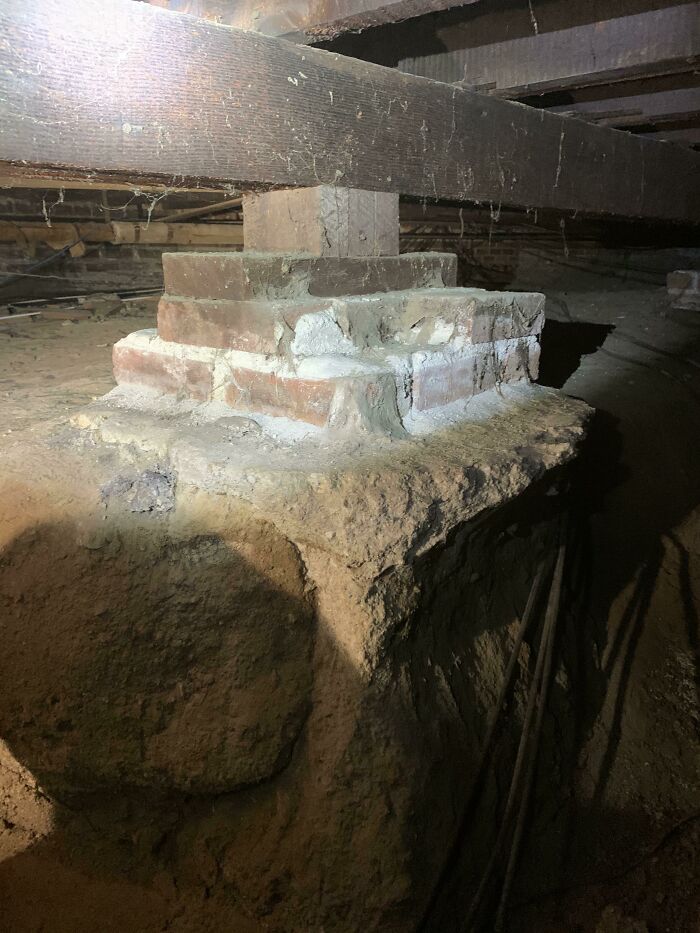
Image credits: AlphaStructural
#98
This is a massive pressure treated beam that was rotting significantly. So much so that you could pierce it with little knife poke
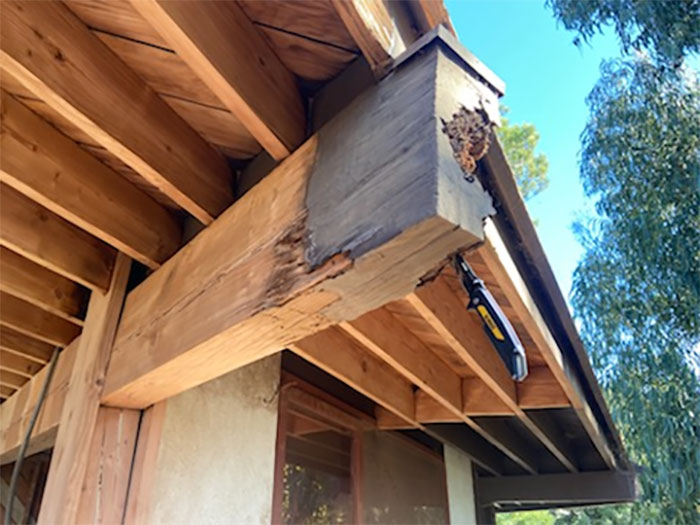
Image credits: AlphaStructural
#99
Floating posts seem to be a common thing nowadays. It's simply a sign of settlement and earth movement. Bracing could help but not in severe cases
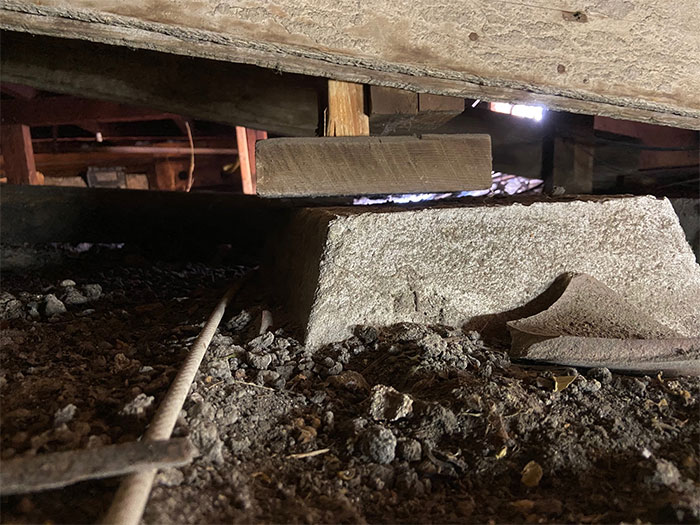
Image credits: AlphaStructural
#100
It seemed there was once a concrete foundation underneath these internal cripple walls. Now it's simply wood sitting on piles of deteriorated concrete and dirt

Image credits: AlphaStructural
#101
This is a close-to being undermined post and pier. Also, you have to love how the girders (which are just 2x12s) are sitting on top of plumbing line
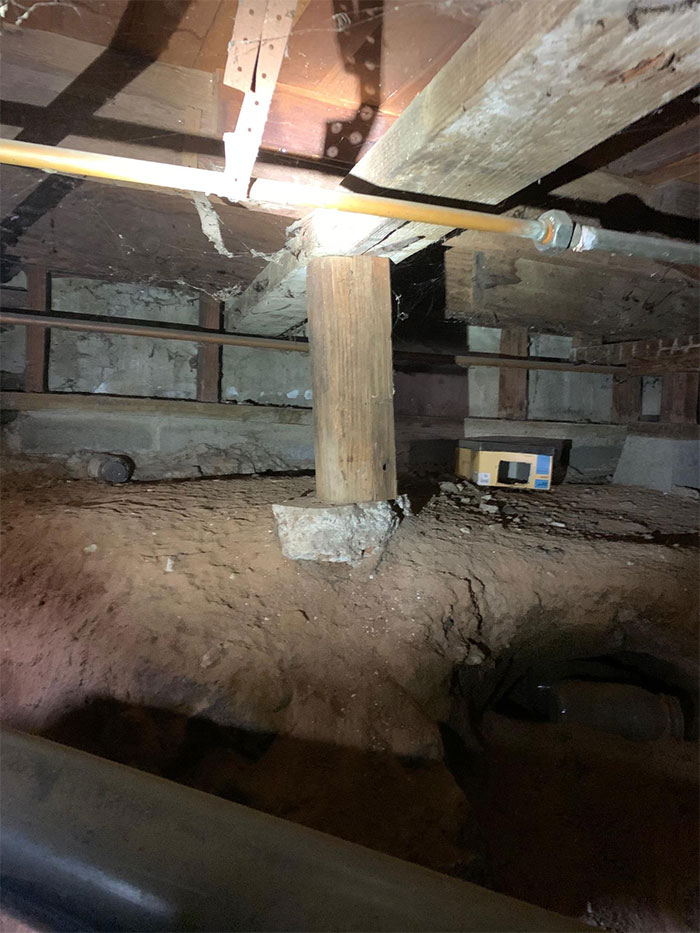
Image credits: AlphaStructural
#102
I don't think the knife stab was necessary in discovering how bad of shape this foundation was in. We already had concrete evidence
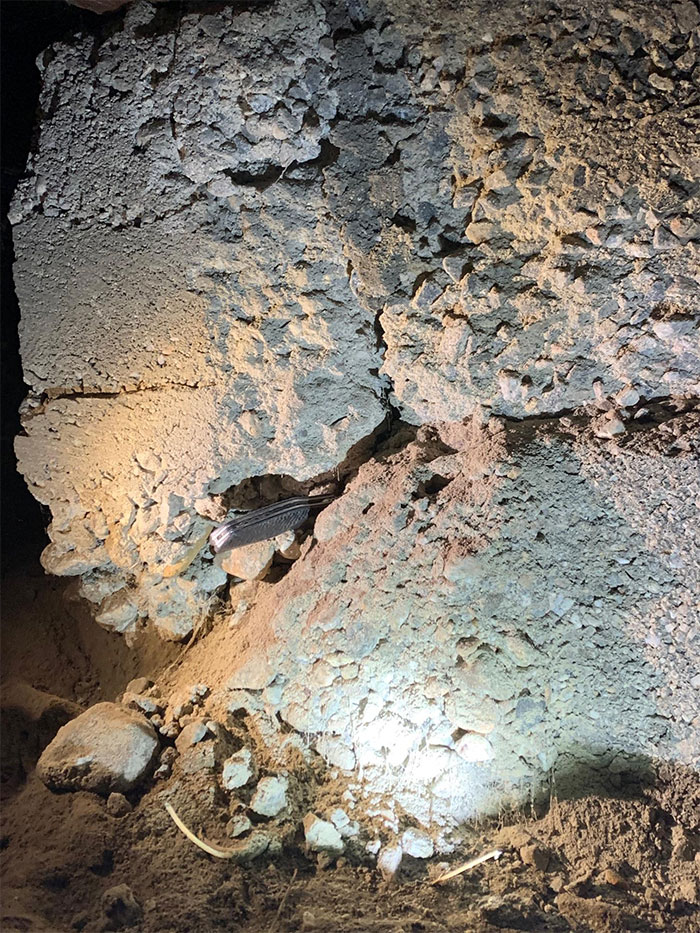
Image credits: AlphaStructural
#103
What happens when you don't use steel rebar to reinforce your concrete masonry wall? This
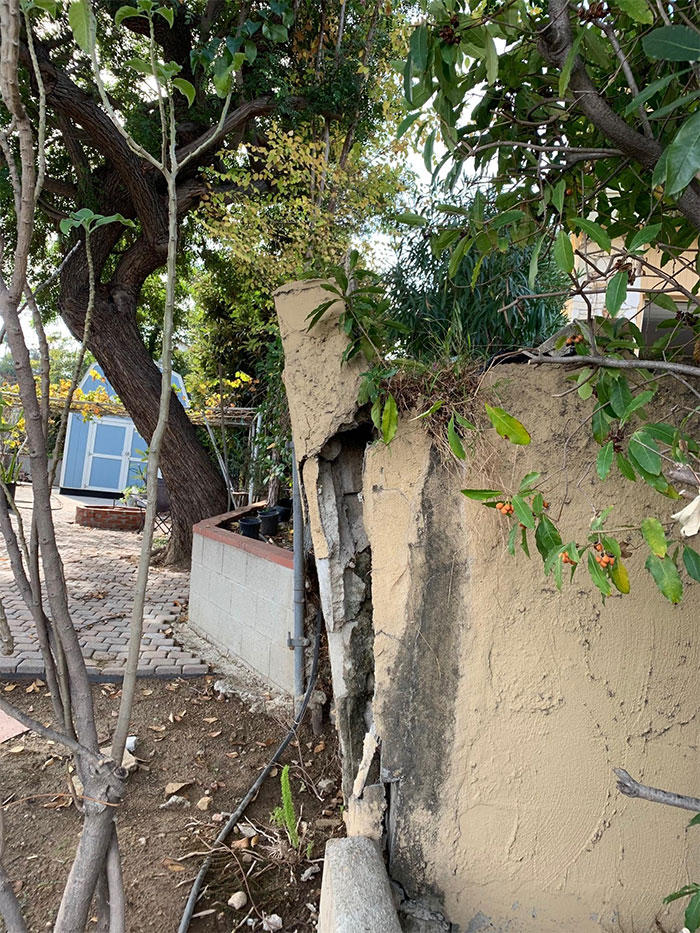
Image credits: AlphaStructural
#104
Obviously the earth was moving and there were other factors, but if something simply can't handle the common elemental pressures, it has no point being built in the first place
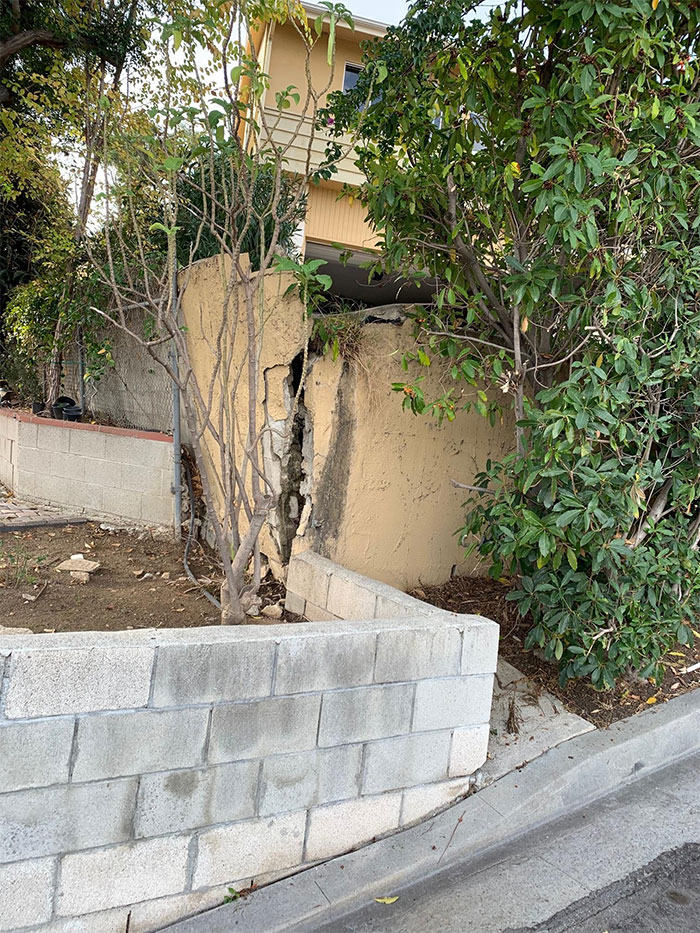
Image credits: AlphaStructural
#105
This little feline was scattered all over the crawlspace. We even found the collar, which was pretty unique. Either way, RIP kittie
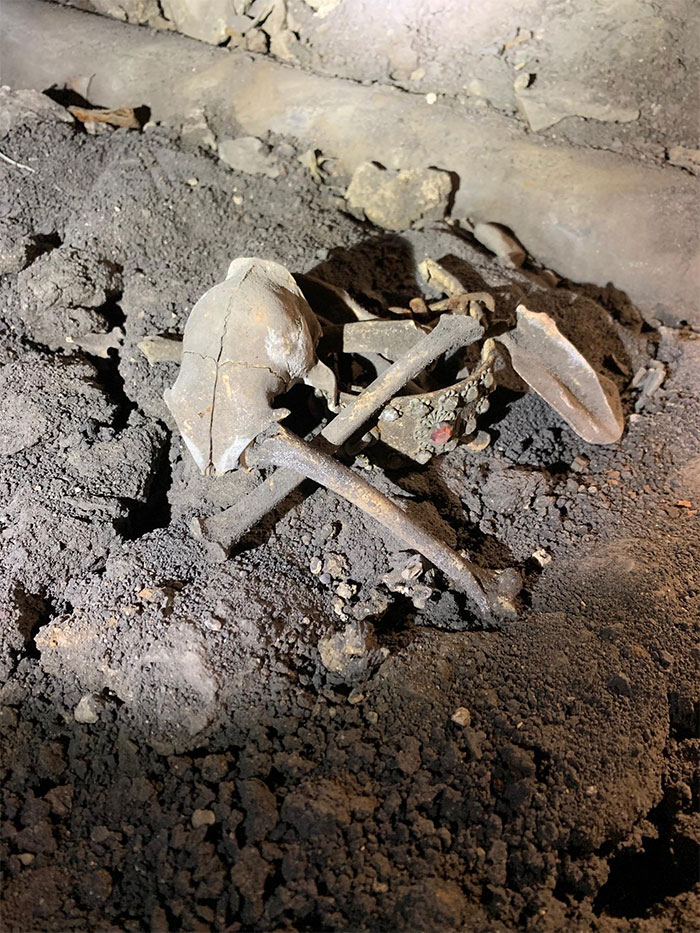
Image credits: AlphaStructural
#106
Why make a solid pier, installed at the proper depth, with correct size, spacing and bracing, when you just don't have to? Why not just find a random piece of broken slab, shove it under there and call it a day?
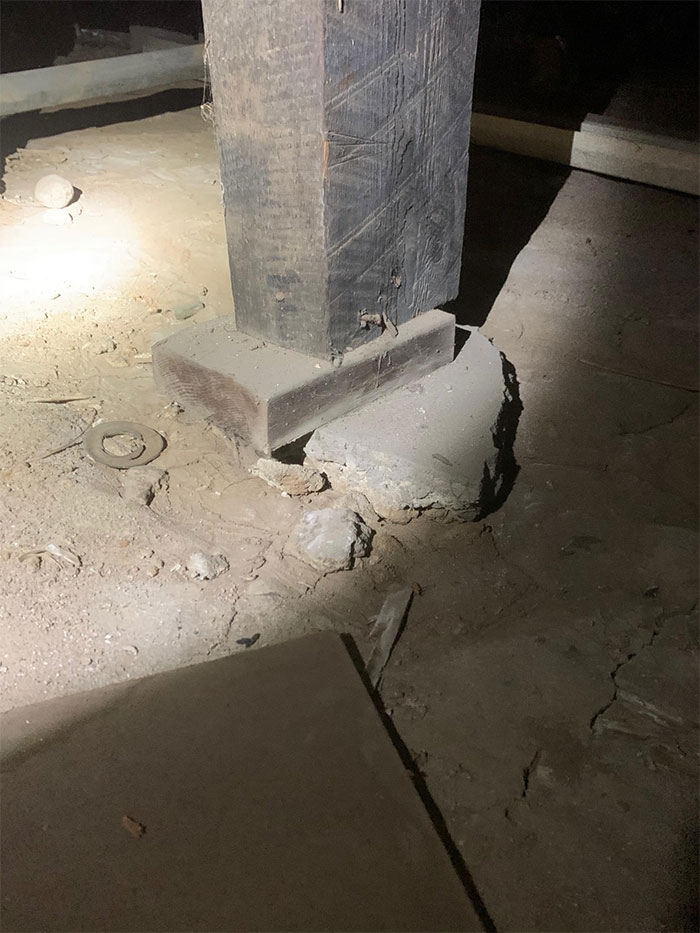
Image credits: AlphaStructural
#107
If a pen and hand can do this type of damage to a river rock foundation, imagine what a 7.0 earthquake could do! You can also see sunlight coming through the mortar channels in the foundation.
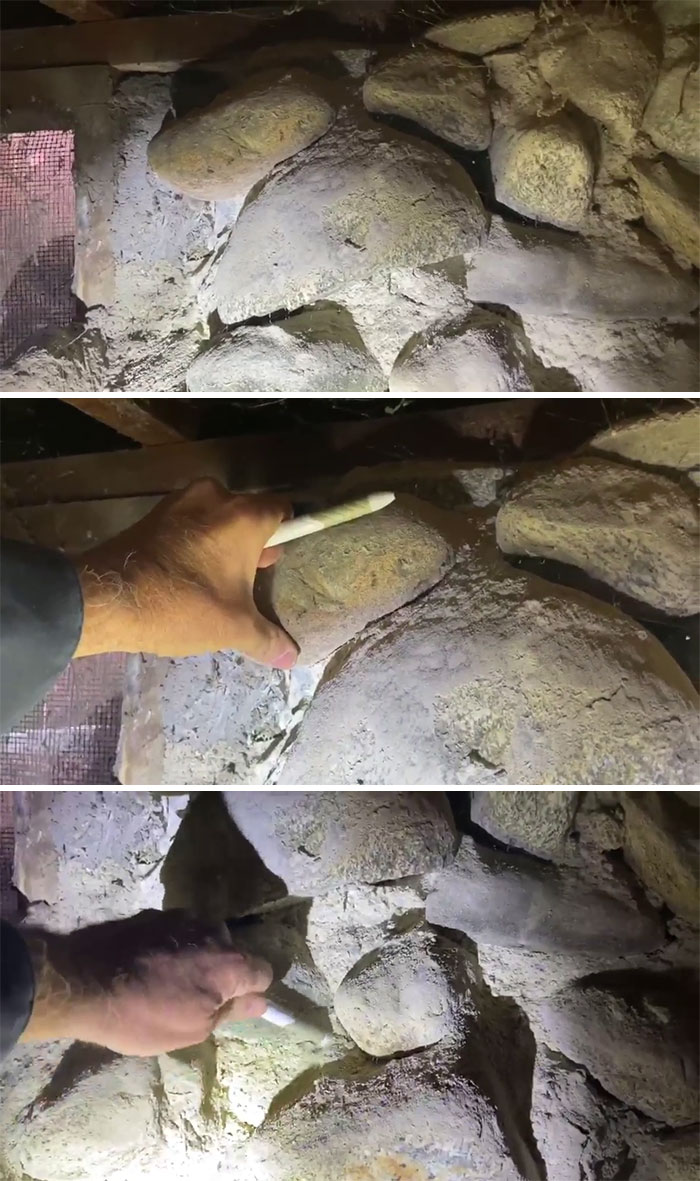
Image credits: AlphaStructural
#108
Someone created pathways and excavated a good amount of the soil under this home, making it seem like all the post and piers had their own little islands!
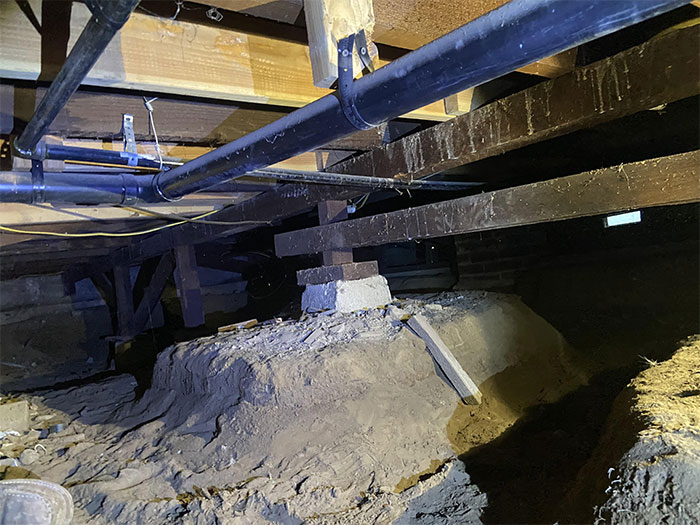
Image credits: AlphaStructural
#109
This is one of the most interesting posts we've ever seen. Somebody cut a hole through the entire girder and placed a large concrete block through the hole and up to the subfloor. Then they epoxied the top and bottom to the bare wood. Truly amazing. Earth-to-wood contact never hurt anything, right?
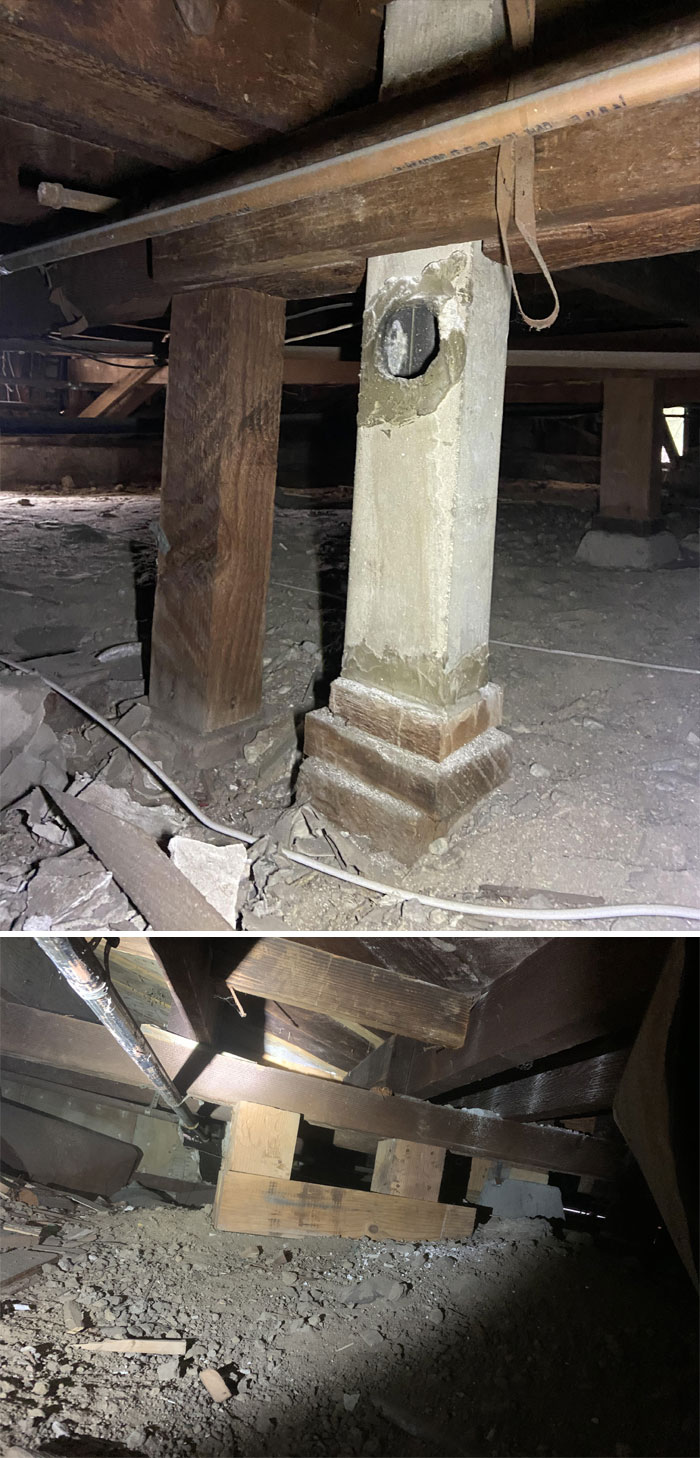
Image credits: AlphaStructural
#110
This was a wood retaining wall leading up the side of a hillside home. It appears to be leaning a good 10 degrees out of place. Torrential downpours could bring it down in the future if it isn't reinforced or replaced.
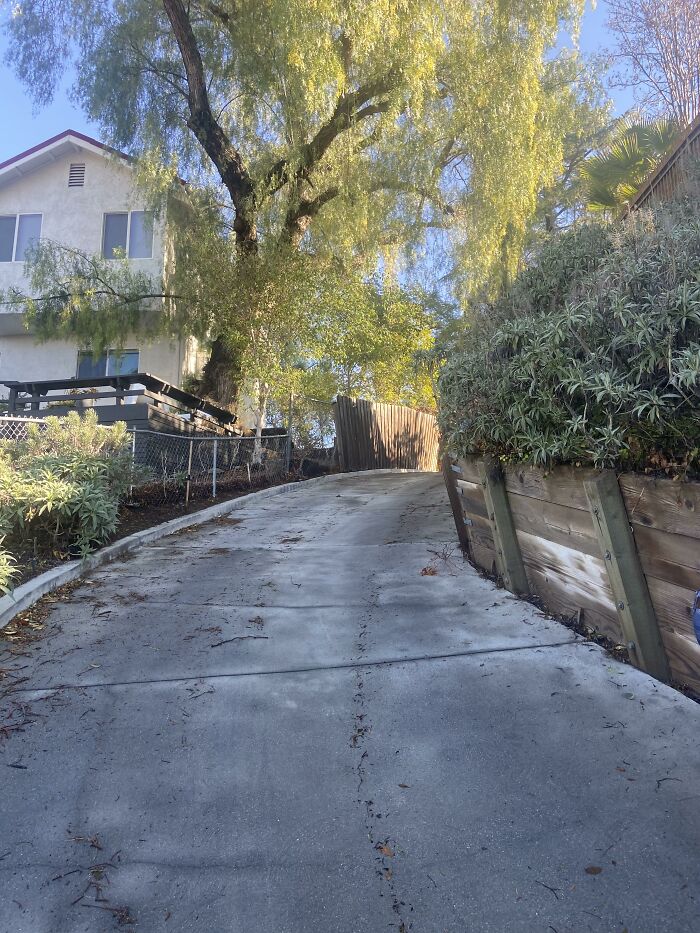
Image credits: AlphaStructural
#111
Brick walls are not supposed to be very ductile, so when we saw this one appearing to "bend" it came as quite a surprise.
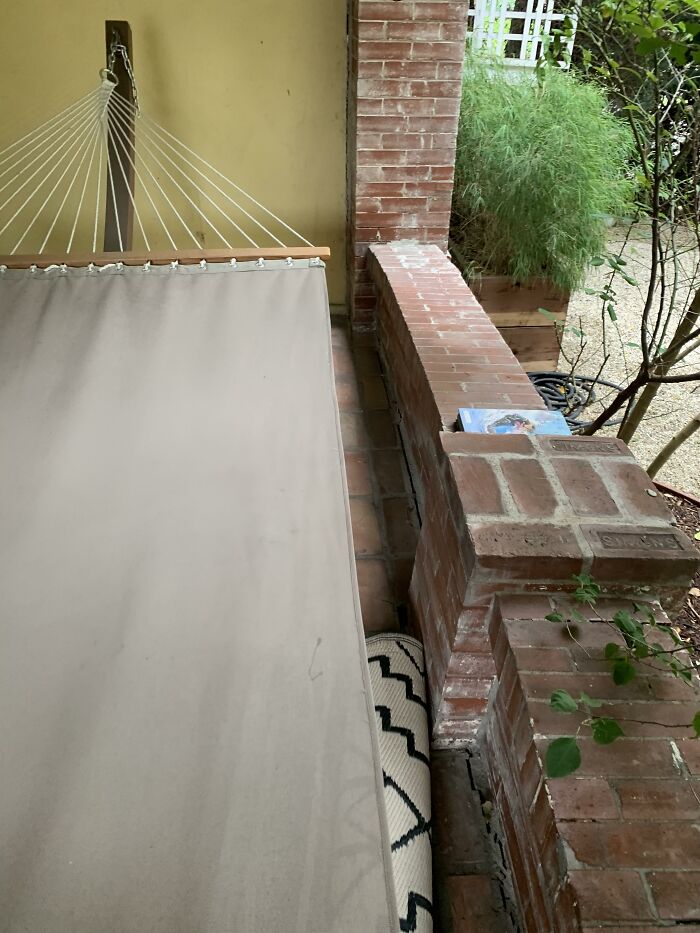
Image credits: AlphaStructural
#112
Here is some rot we're gearing up to repair soon. Watch your step or else you could end up 10 feet lower than you were.
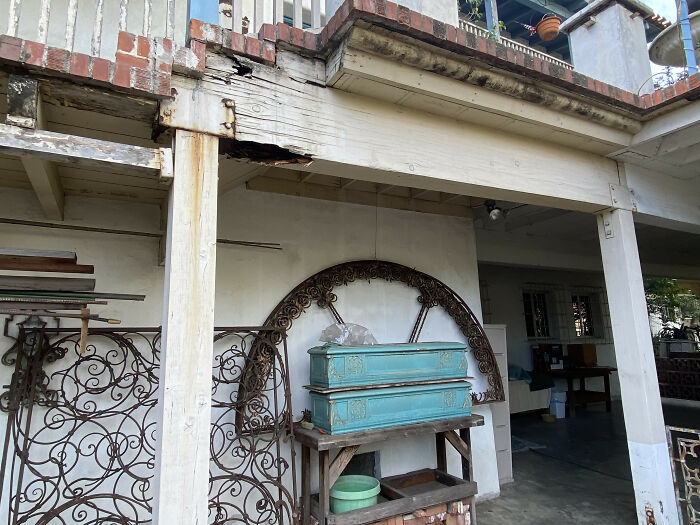
Image credits: AlphaStructural
#113
I love burnt ends, but not in this scenario.
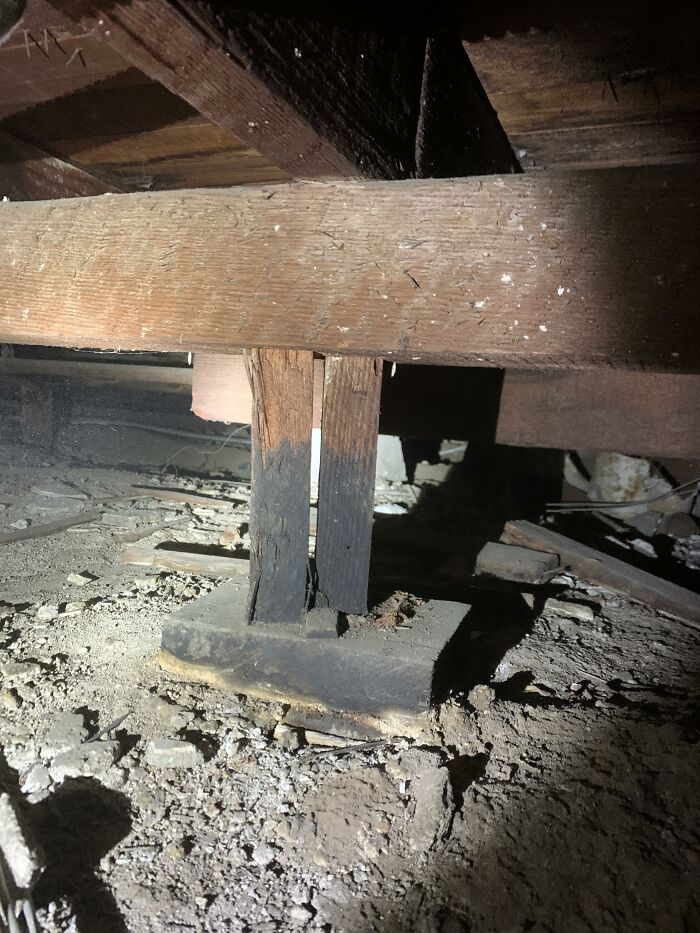
Image credits: AlphaStructural
#114
Anyone want to take a dip the sewage pool under this house?
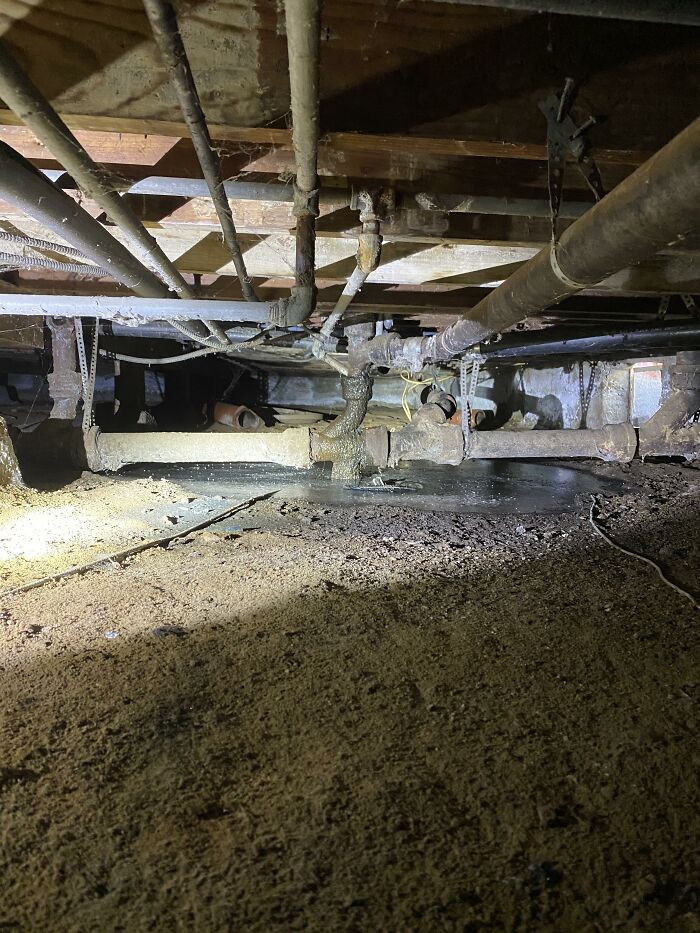
Image credits: AlphaStructural
#115
You have to appreciate the effort when you come across repairs like this. Half of the piers under this home were floating. Most of the post and piers under this home were leaning, indicating settlement to one side of the house. At least they had some creative bracing for the pipes, though.
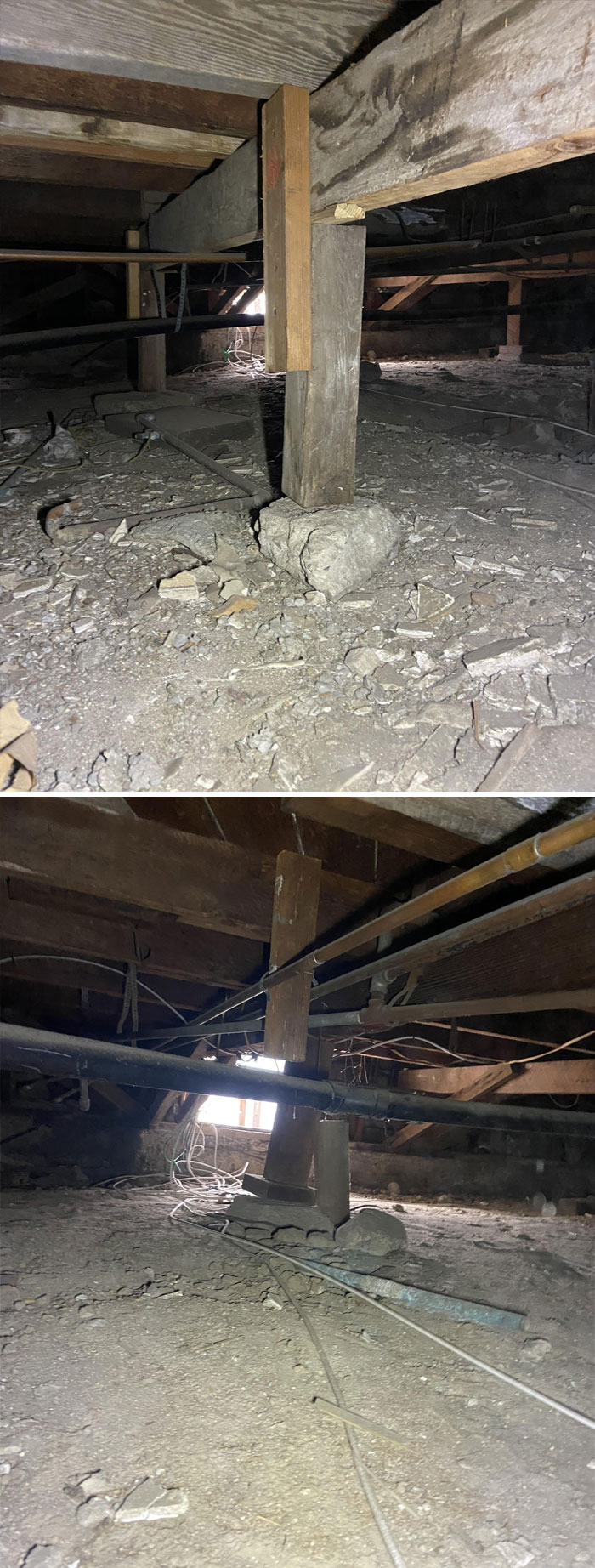
Image credits: AlphaStructural
#116
These guys seem to be using the old counterweight method for holding up some materials.
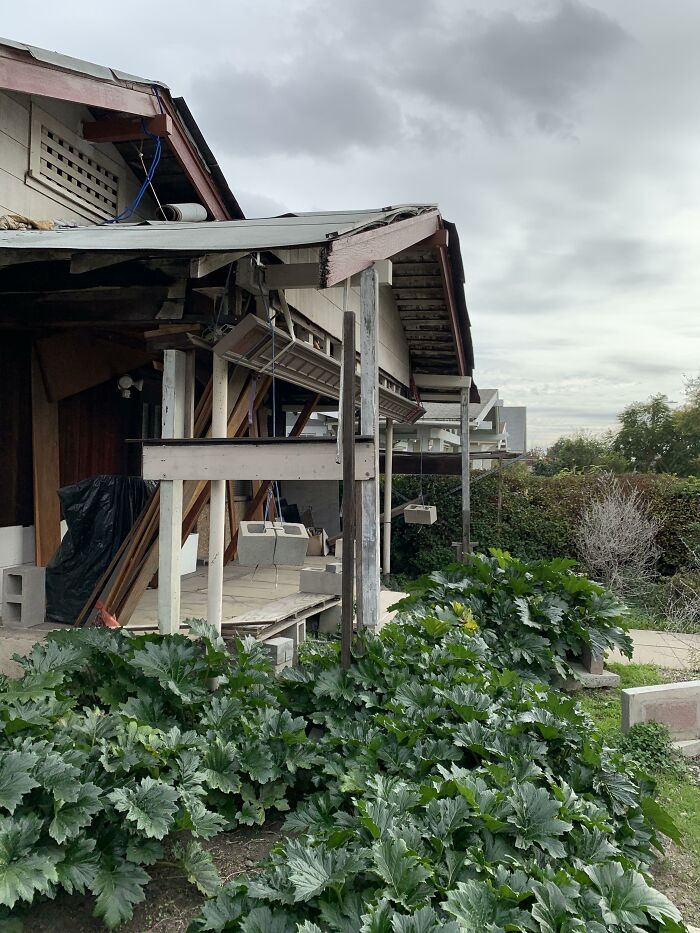
Image credits: AlphaStructural
#117
Here's a few we inspected just in the past year in LA. There's plenty more that I don't have photos of. This one was one of the most severe ones from 2020. A massive chunk of this homeowners hill went sliding down the hill. He's just lucky it wasn't directly under the pool. It always creates a scary situation where more rains could cause significantly more damage if it isn't handled properly.
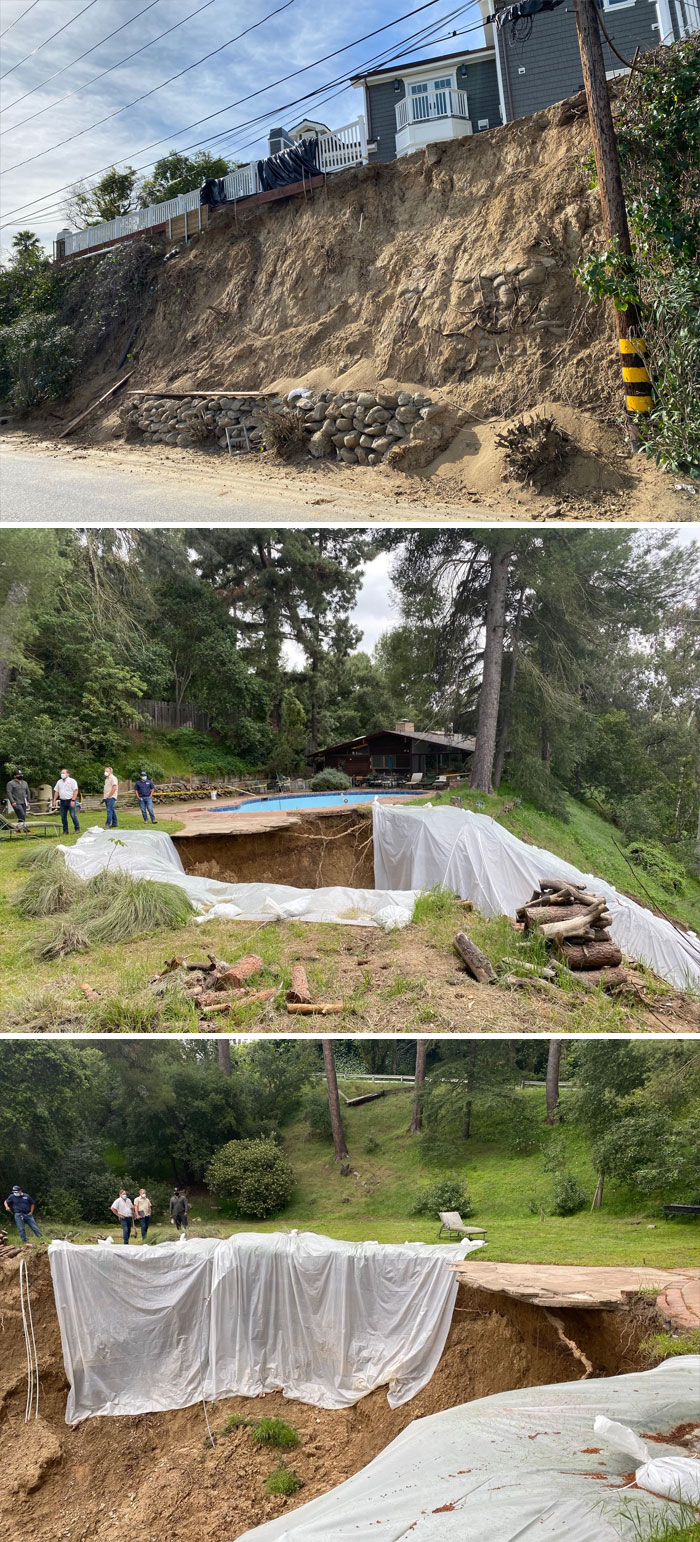
Image credits: AlphaStructural
#118
This unfortunate little shack sat right on top of loose soil. It collapsed as the hill began to creep and eventually slid multiple feet.
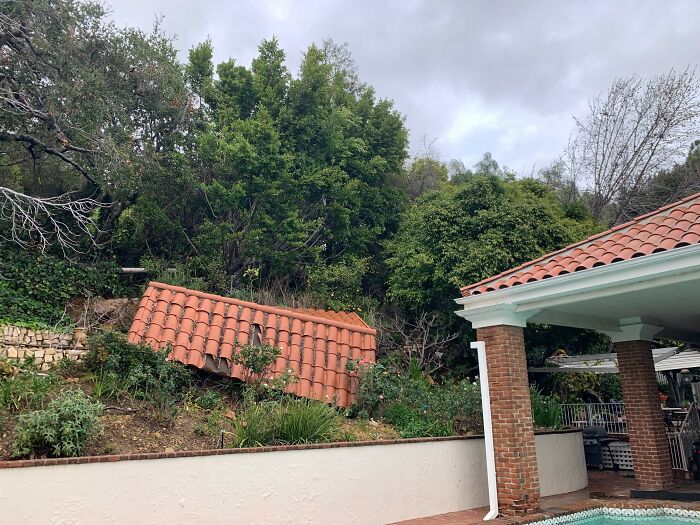
Image credits: AlphaStructural
#119
This one uncovered some irrigation lines and destroyed the flight of stairs leading up the hillside. Collateral damage from these residentials slides could hit owner's accounts much harder than if they had taken any preventative measures. Obviously it's quite silly to just throw up random walls and do work on every hillside, but diligent homeowners should know what to look out for and know of any prevention that can be done to protect their hillside properties!
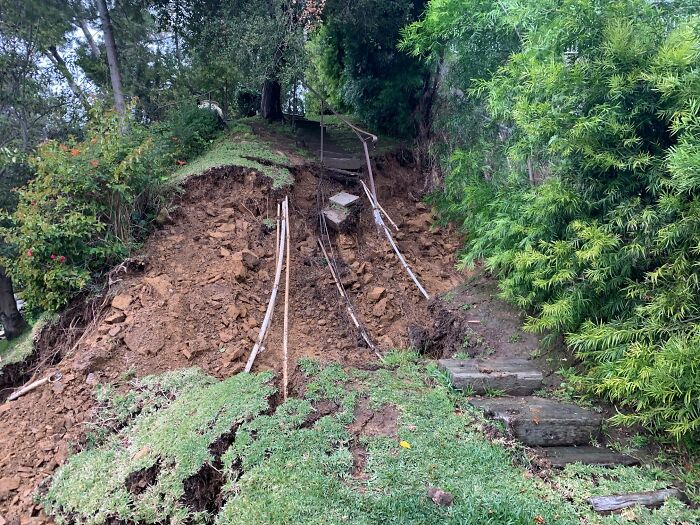
Image credits: AlphaStructural
#120
A flight of stairs that goes directly to the hospital!
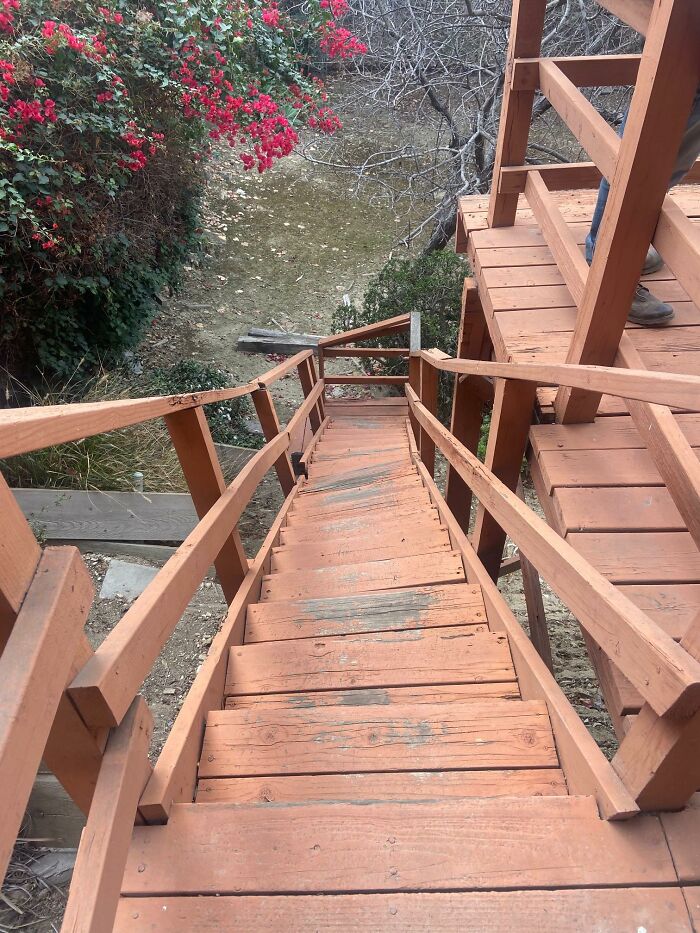
Image credits: AlphaStructural
#121
The front section of this foundation is settling, taking with it the concrete patio, retaining wall, and roof. The columns holding up the roof above are buckling from the rotation and settling of the foundation.
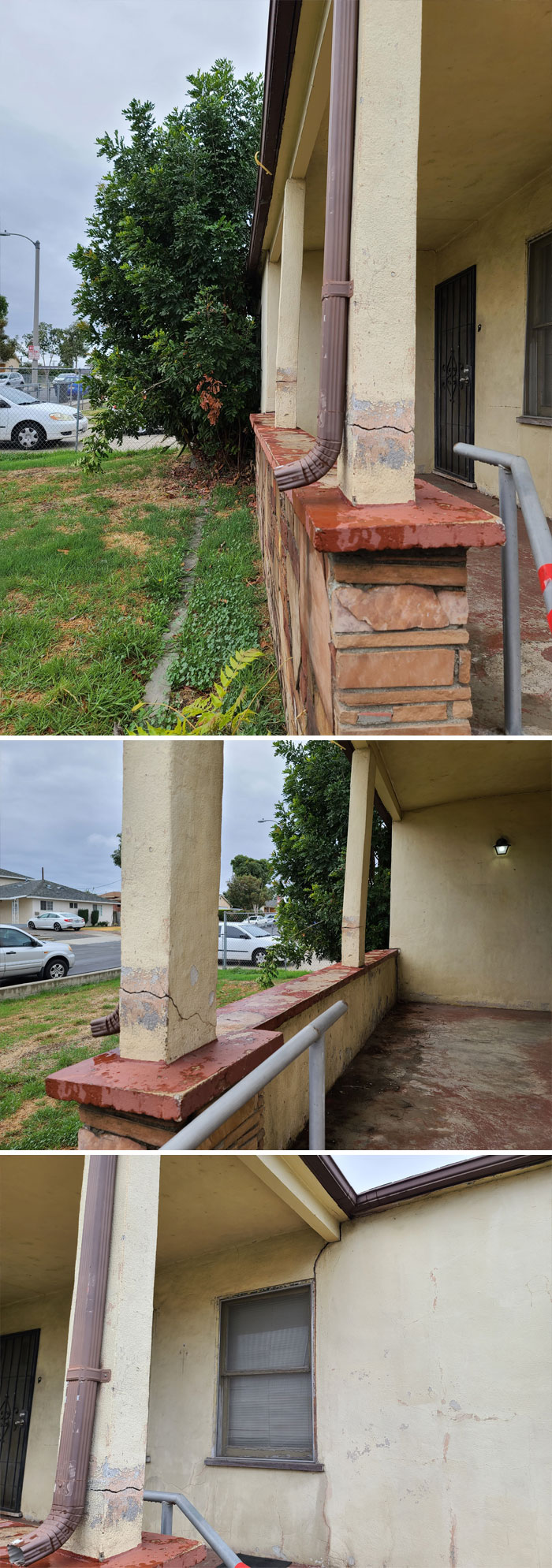
Image credits: AlphaStructural
#122
The crack isn't the only scary thing in this photo...
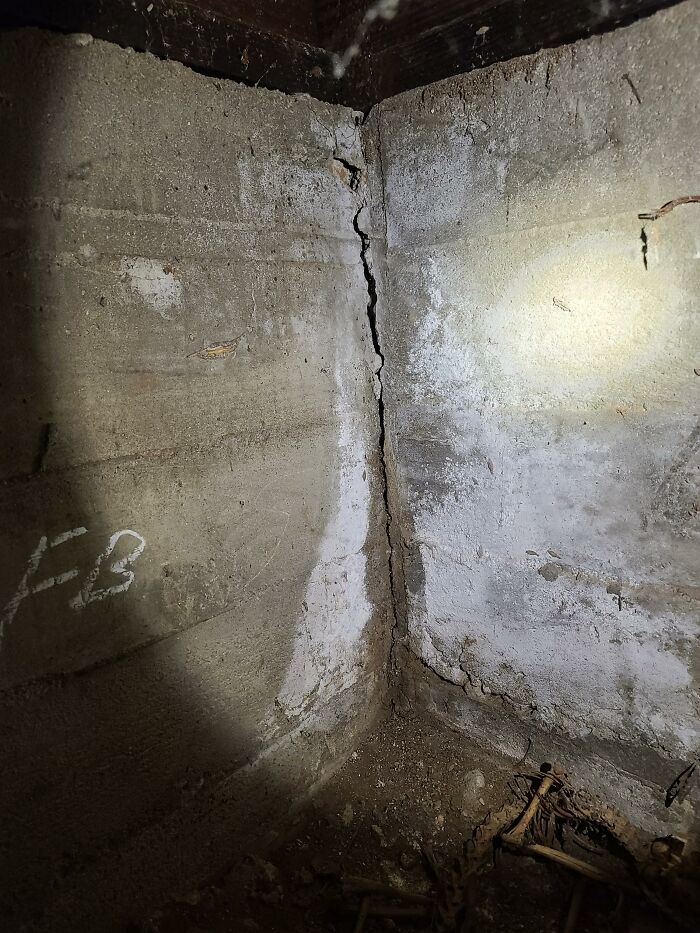
Image credits: AlphaStructural
#123
This was a parking structure we inspected for some potential structural repairs. Upon inspection, we discovered there was some significant spall damage around some pipes on the ceiling. Luckily, it doesn't appear to spread too far but will take some investigating to see the true damage that has taken place.
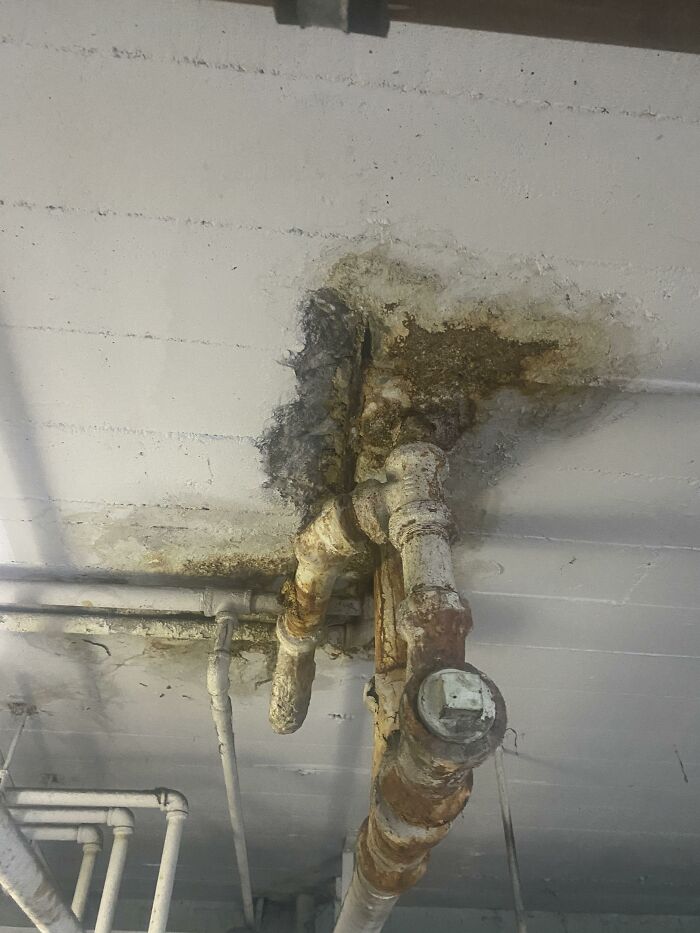
Image credits: AlphaStructural
#124
A truly cursed structural image.
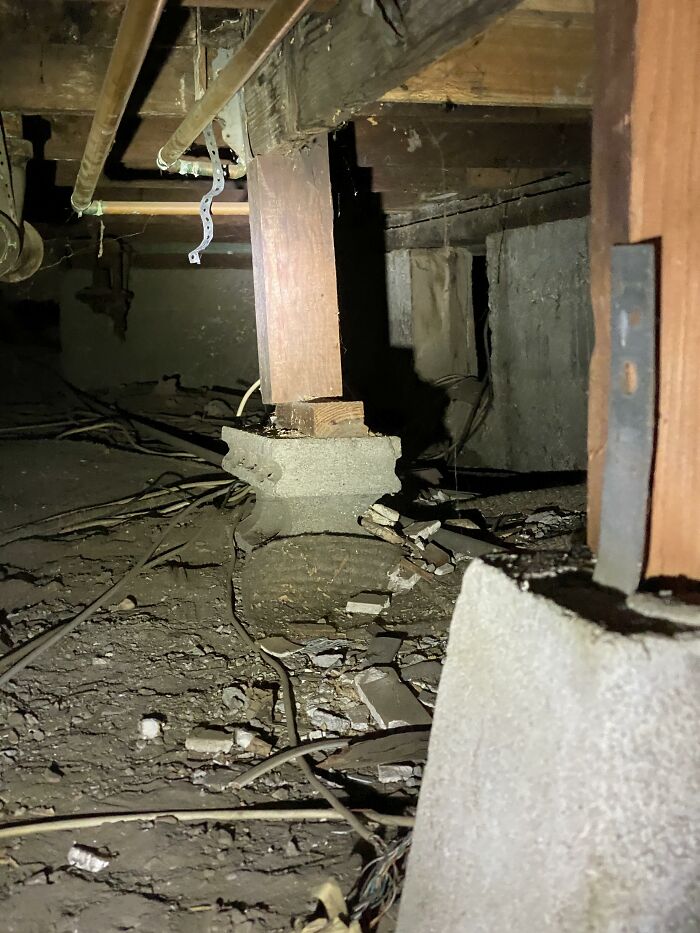
Image credits: AlphaStructural
#125
Finally, we have this very old concrete foundation. Brittle to the touch and in need of an entire foundation replacement.
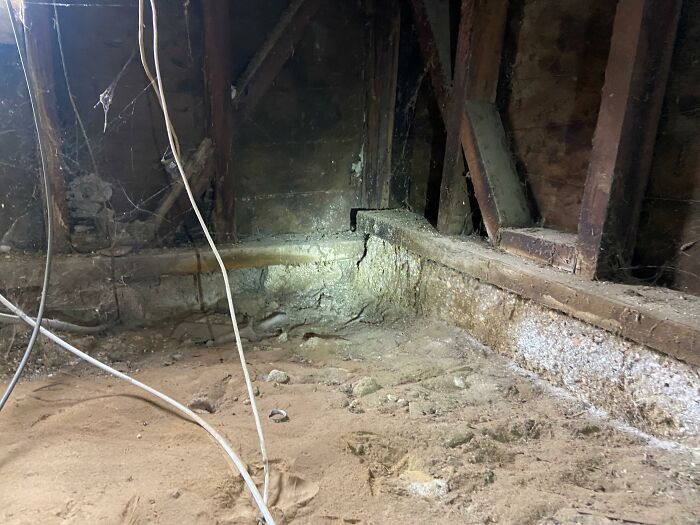
Image credits: AlphaStructural
#126
You'd think the plumbers were at war digging trenches this big. They may have had to find a leak or something. Still ridiculous
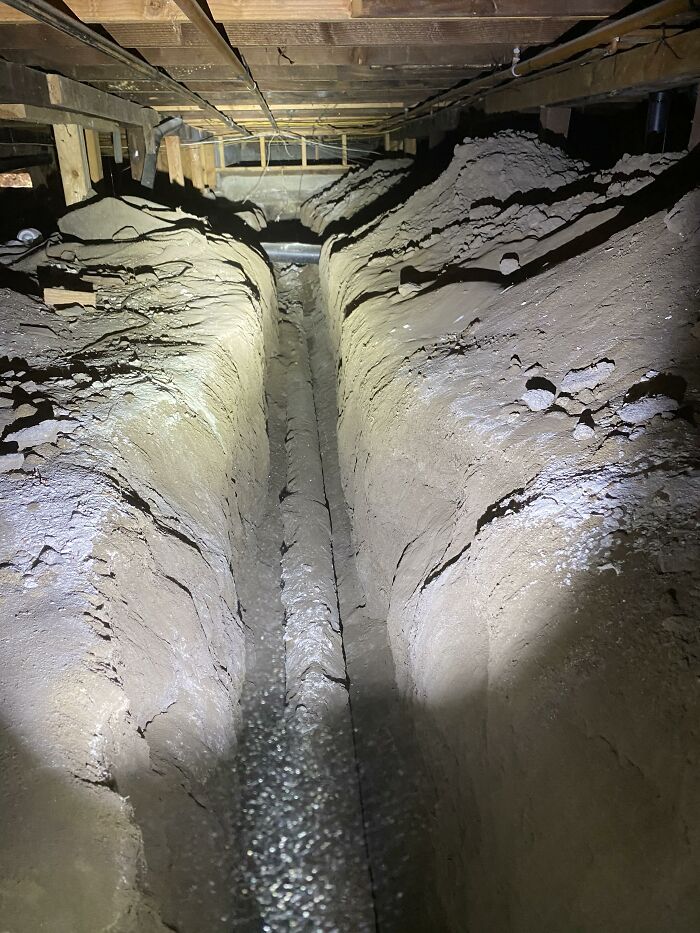
Image credits: AlphaStructural
#127
Expansive soil can be aesthetic I guess, but it sure can cause some serious damage to your foundation.
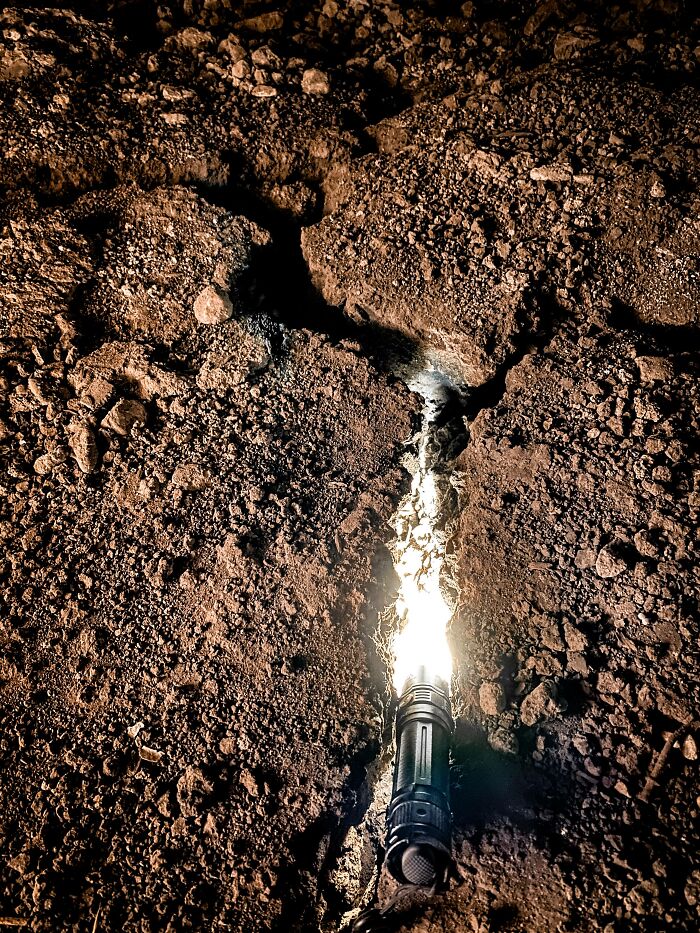
Image credits: AlphaStructural
#128
Here's some bad rot damage around an area where some pipes enter the subfloor of this home. This is some nasty rot and should be handled asap.
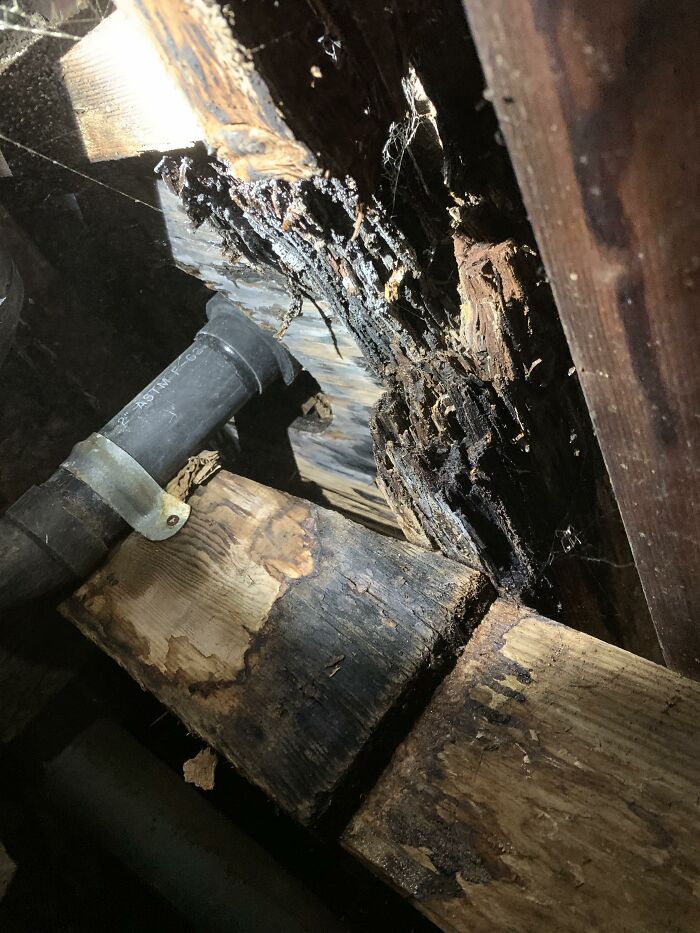
Image credits: AlphaStructural
#129
This was a crazy week, to say the least. To start it off we have a sinking brick porch and a set of columns. This porch is settling and pulling away from the structure, causing the posts (which aren't connected in any way to the columns) to slant outward. The brick wall located in the front is separating from the rest of the concrete porch. These homeowners could use our help, big time!
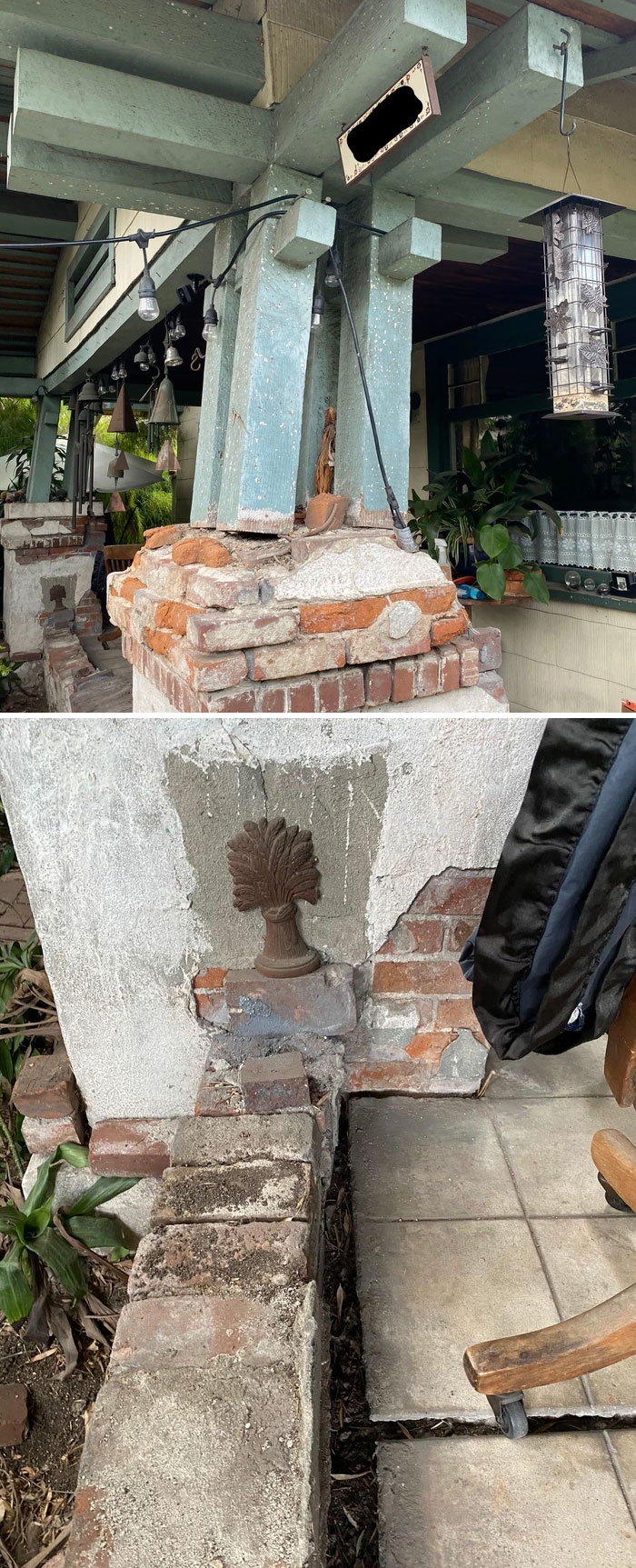
Image credits: AlphaStructural
#130
If you ever see this type of fracturing in concrete, you've come across spall damage. Heavy moisture in the concrete caused the rebar inside to rust and expand, resulting in what you see here
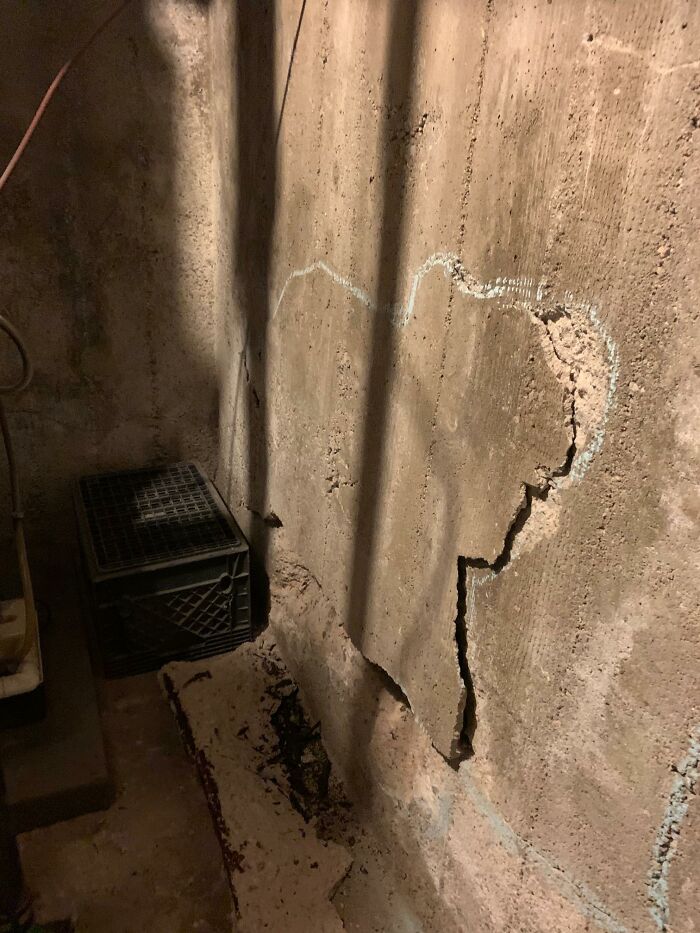
Image credits: AlphaStructural
#131
This is a big ol' crack in a concrete foundation. Also, the concrete footings are exposed underneath

Image credits: AlphaStructural
#132
Some very nasty wood rot affecting the subfloor of a single-family dwelling
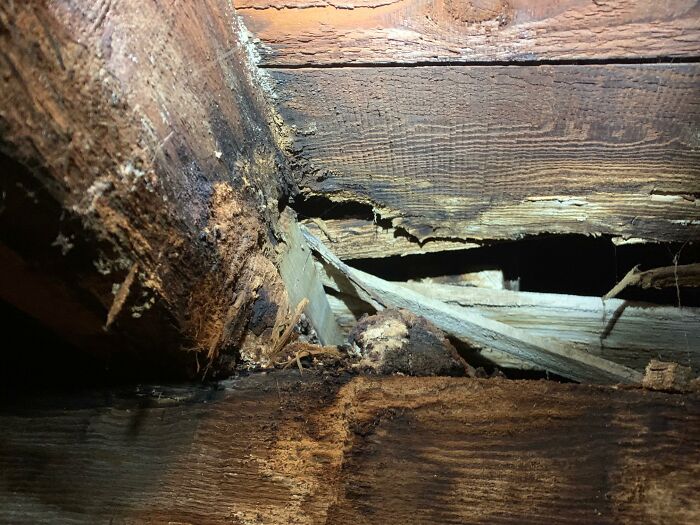
Image credits: AlphaStructural
#133
An internal brick retaining wall had collapsed under this early 1900s home. The mortar holding the brick together could be blown away with the lightest of winds. Don't breathe too heavy down here! Some temporary supports were put in place to keep the rest of the retaining wall from falling over. Not sure how much longer it will last before it all comes crashing down!

Image credits: AlphaStructural
#134
Who wants to guess what happened to this poor girder? Luckily it was sistered a while back, but it's a shocking scene with that old one still there
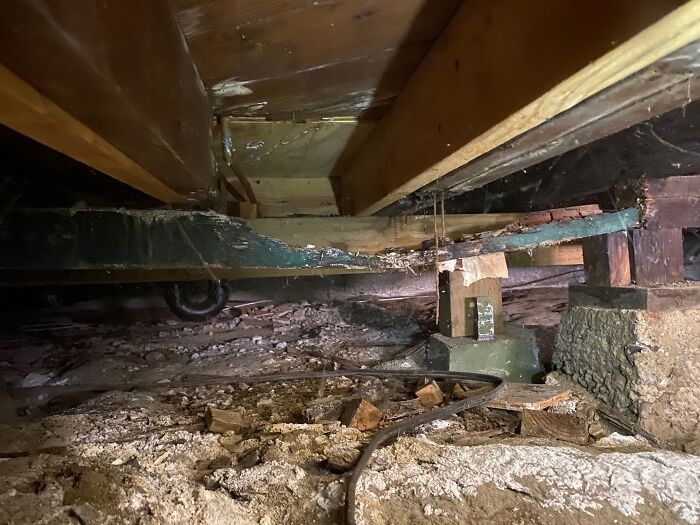
Image credits: AlphaStructural
#135
No need to measure the gap between this foundation and mudsill. Just throw in the whole measuring tape!
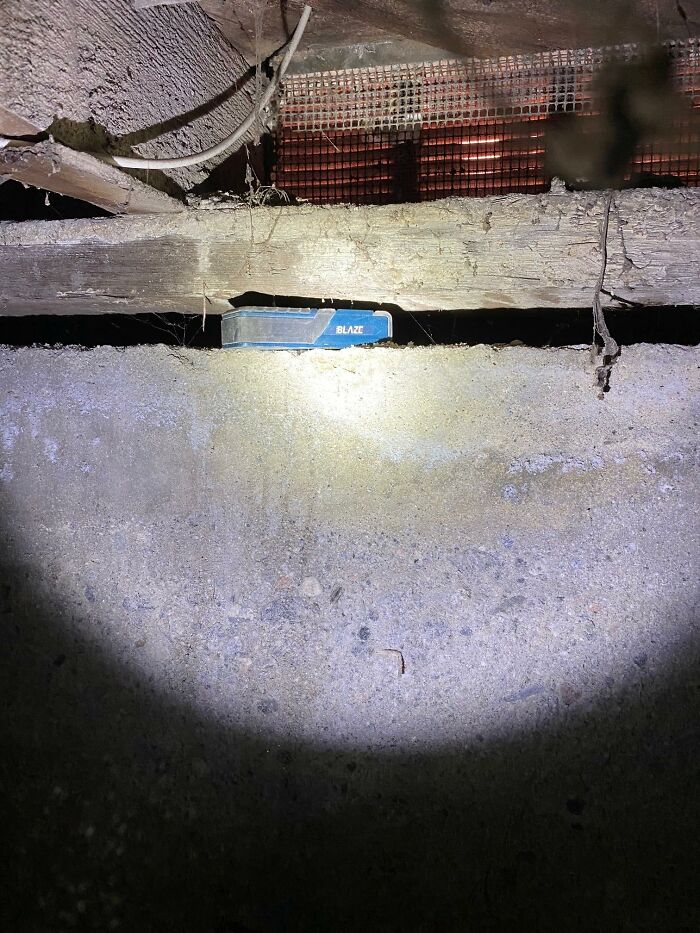
Image credits: AlphaStructural
#136
Here we have a sistered rim joist which has been attached to the original, rotted joist
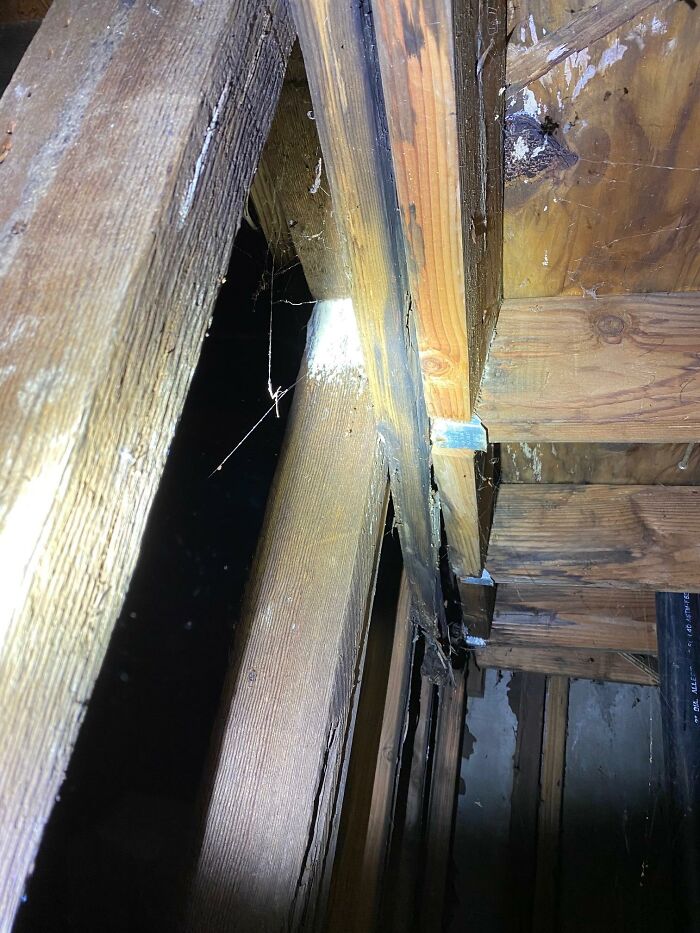
Image credits: AlphaStructural
#137
Don't mind the elevation change in the dining room! This is generally the result of a situation where the internal post & piers sufficiently support the subfloor, while the external stem walls sink
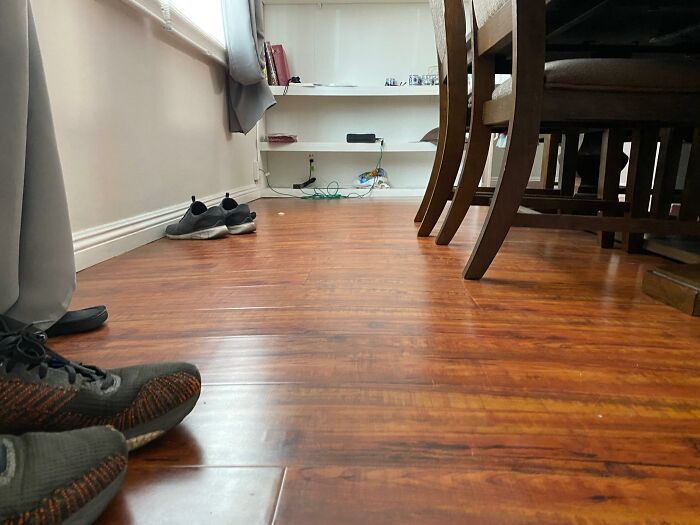
Image credits: AlphaStructural
#138
Metal bracketing holding on for dear life
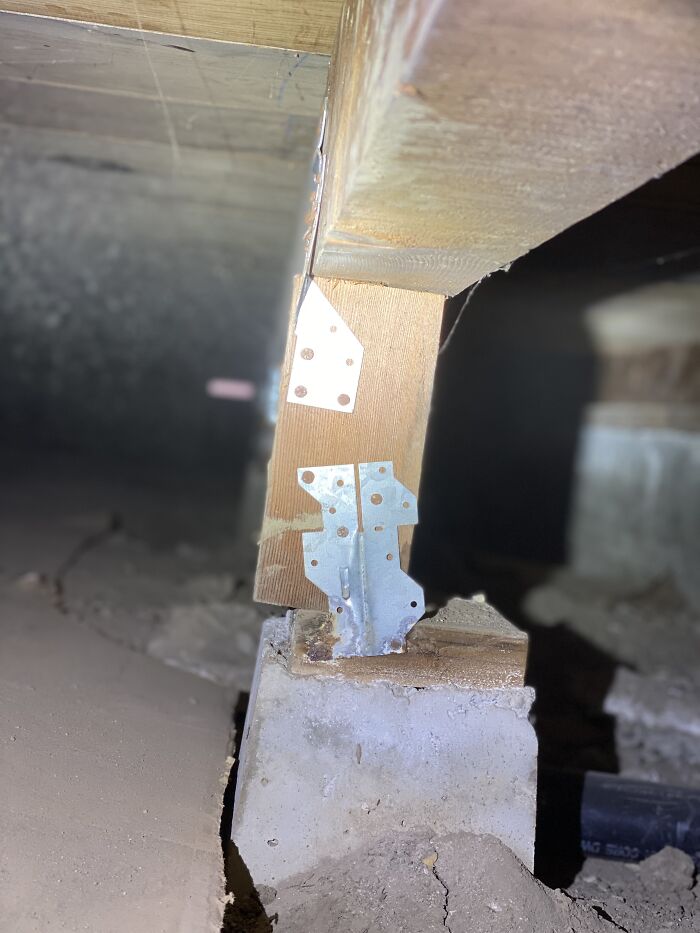
Image credits: AlphaStructural
#139
This post was slowly crushed by the load it has been carrying for years. It was obviously pretty dry and weak to begin with
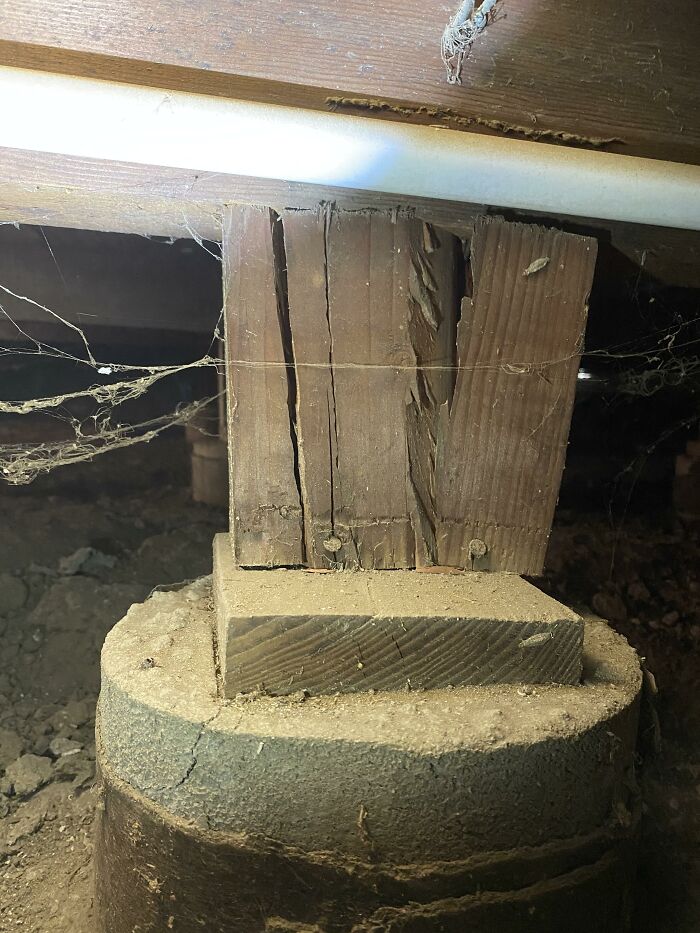
Image credits: AlphaStructural
#140
Do NOT undermine your own foundation for the sake of creating more space. You will end up getting into a heap of trouble and it will cost you 5x more to fix it
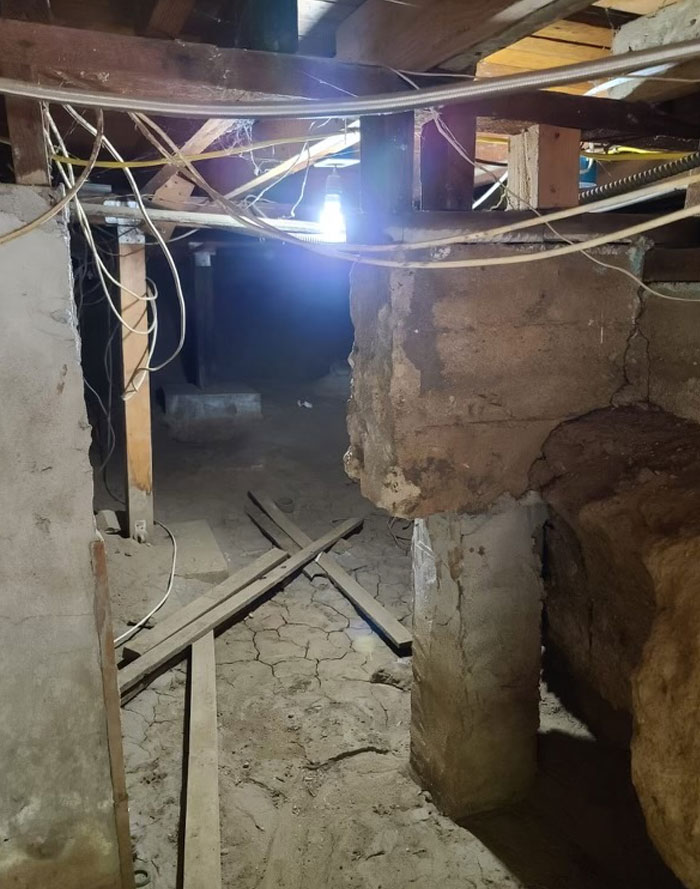
Image credits: AlphaStructural
#141
This wooden retaining wall system gave way after rainstorms washed out tons of dirt and debris from underneath it
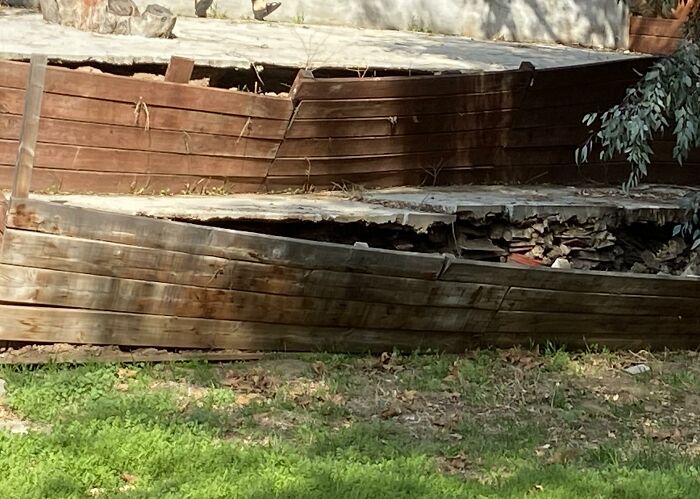
Image credits: AlphaStructural
#142
This was a wooden bridge we inspected last week that collapsed after many years of rot & decay. It was there to create an easy path across the canyon, but unless you can air/earth bend, you should steer clear of this place
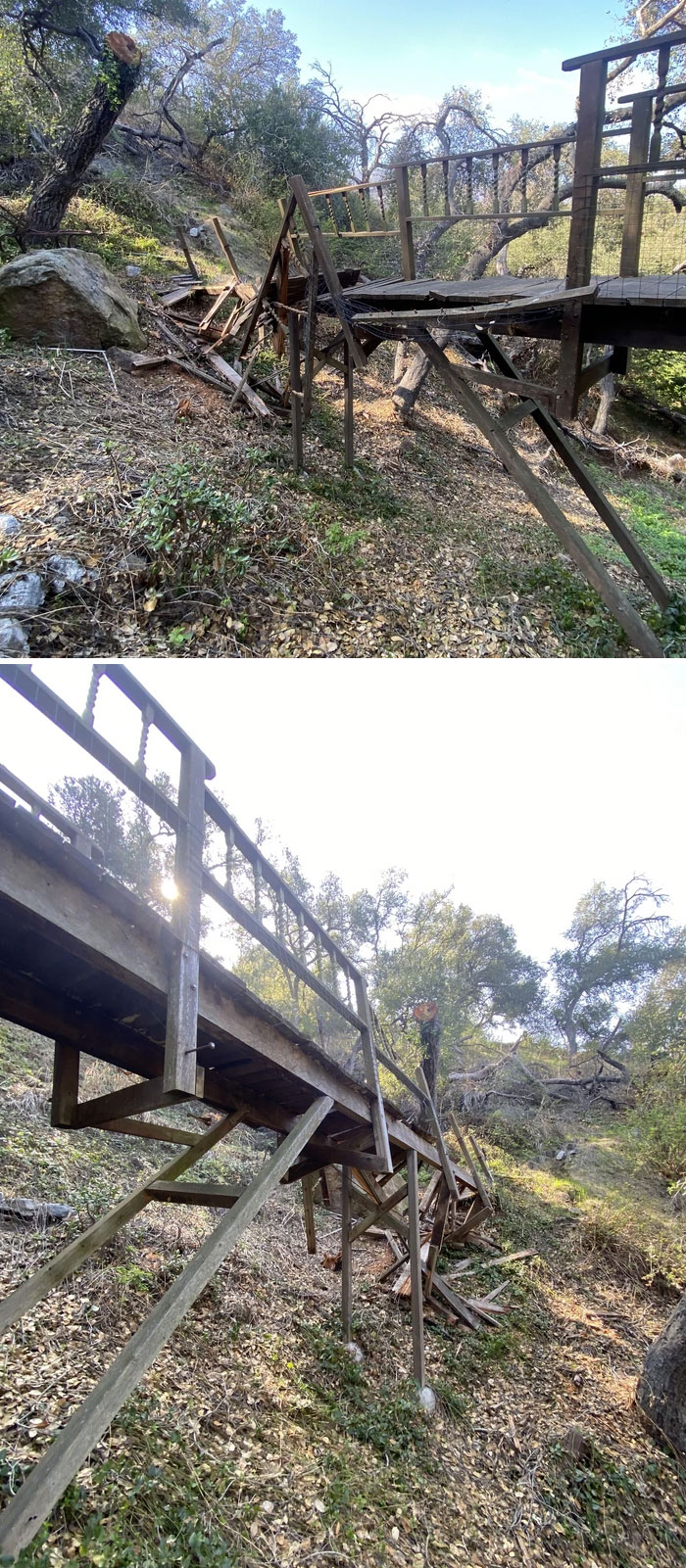
Image credits: AlphaStructural
#143
Here we have some rotted framing resting upon a degraded foundation stem wall
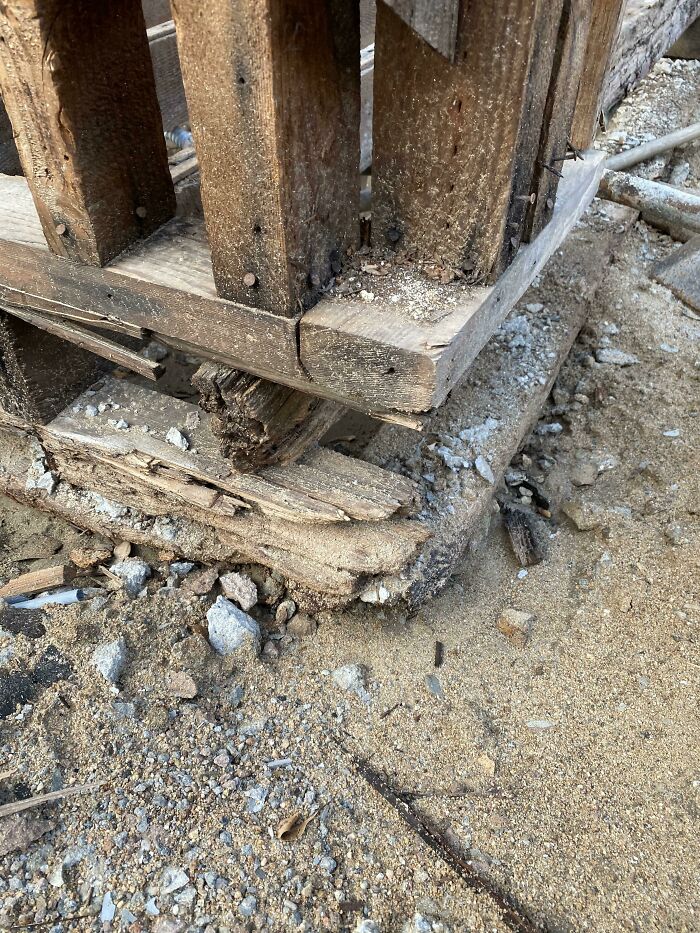
Image credits: AlphaStructural
#144
Here we have a failing retaining wall that was built using a lagging method. This consists of driving steel I-beams into the soil and dropping down railroad ties into the webbing of the beams. This can be done legally for shoring purposes, but it shouldn't be used as a permanent solution to retain a slope
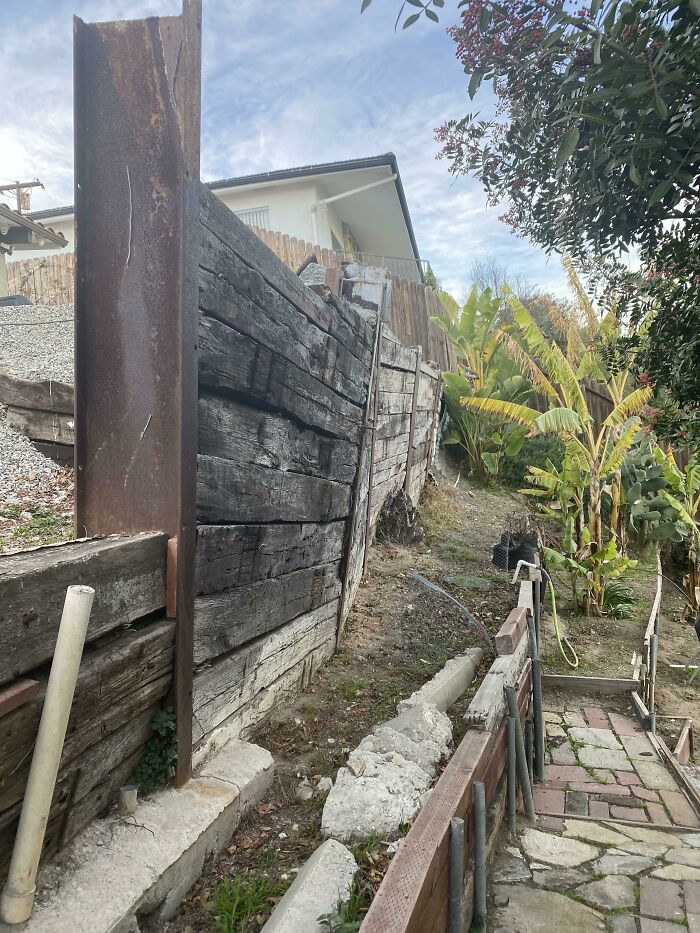
Image credits: AlphaStructural
#145
I'm telling my kids these were the great pyramids of Pasadena
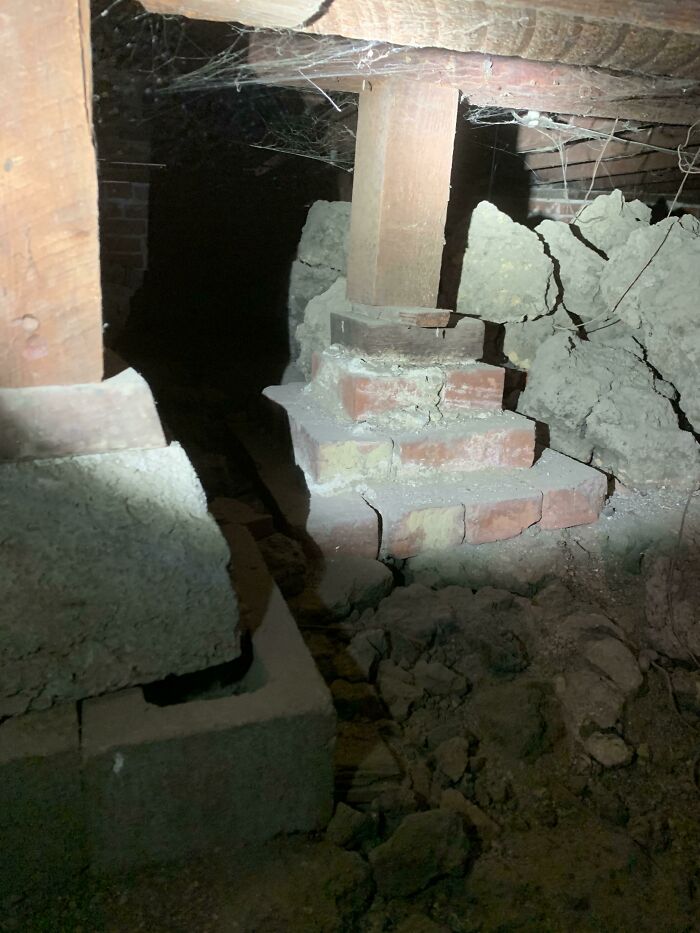
Image credits: AlphaStructural
#146
Here we have a crumbling concrete pad supporting a subfloor with many layers of wooden 6x6s and other wooden panels. Sufficient? Sure. Done right? No
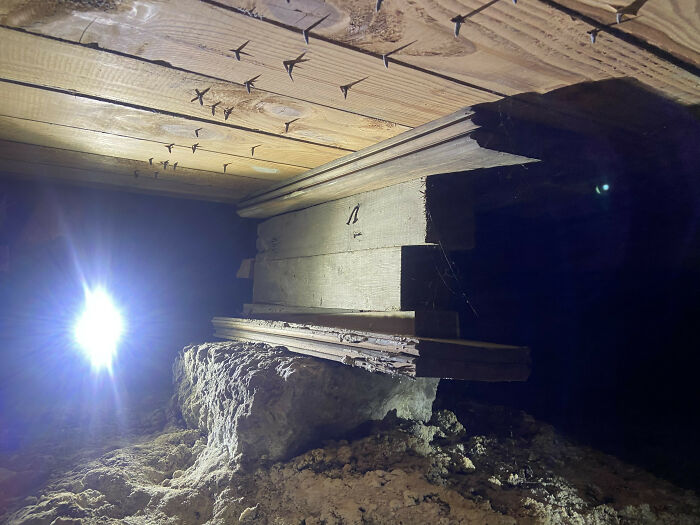
Image credits: AlphaStructural
#147
This is an actual log cabin that was moved from another location into a lot in Santa Monica. One corner of the cabin was sinking and had some bad rot damage. The bottom log had rotted so bad that they had to replace it with a new, more "modern" log made of concrete. This didn't really help the situation and actually may have made it worse
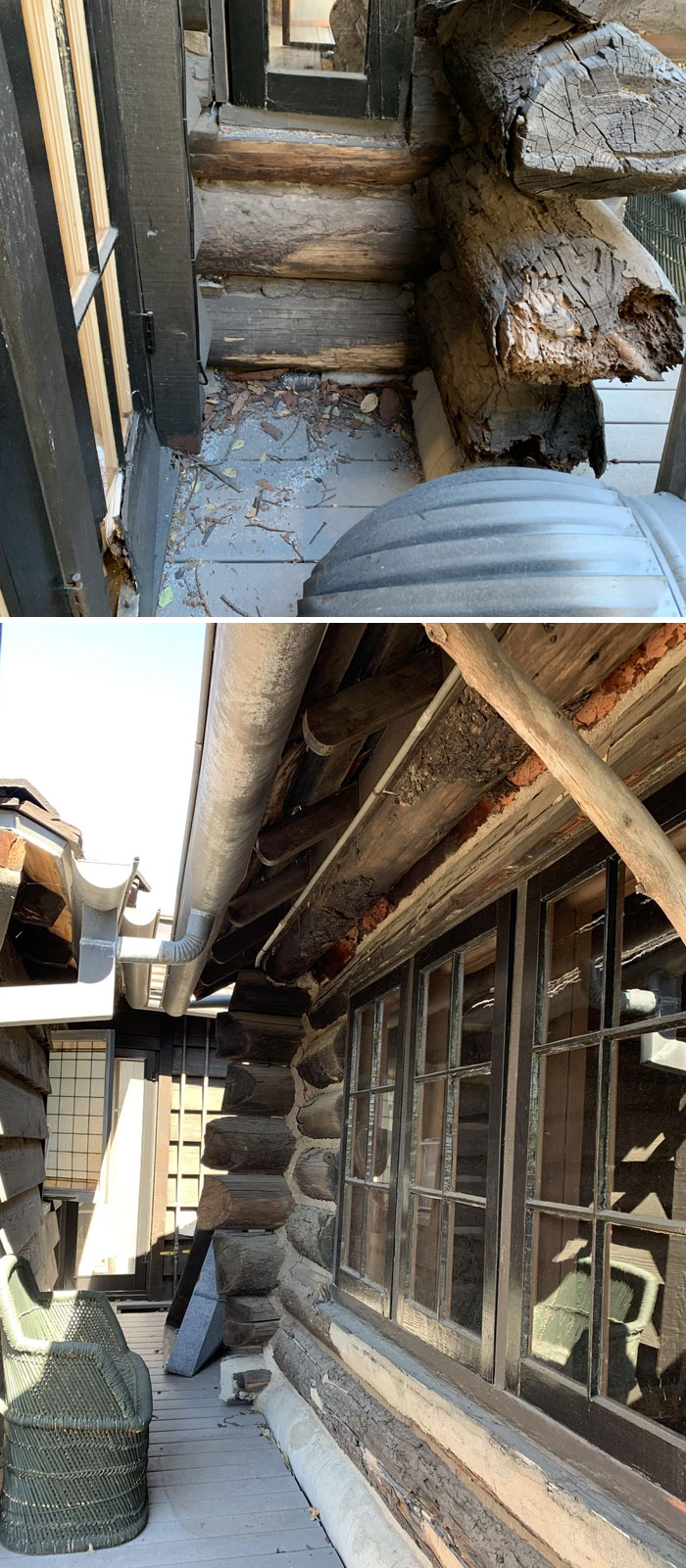
Image credits: AlphaStructural
#148
This is the corner where the wood is compressing and rotting out. The slope toward this corner is no less than 3 inches lower than other areas of the floor.
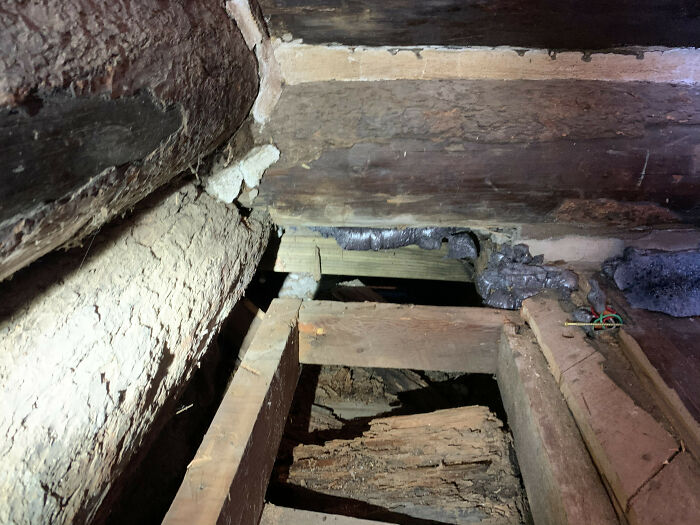
Image credits: AlphaStructural
#149
Here's a classic undermined pier that was lifted from movement in the soil
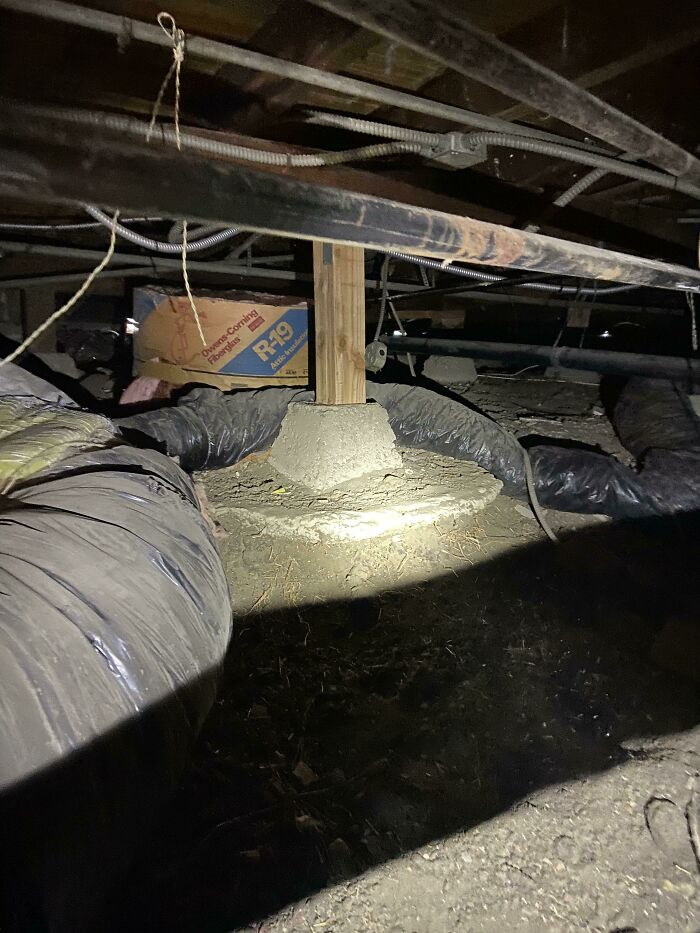
Image credits: AlphaStructural
#150
This post was installed for your sins
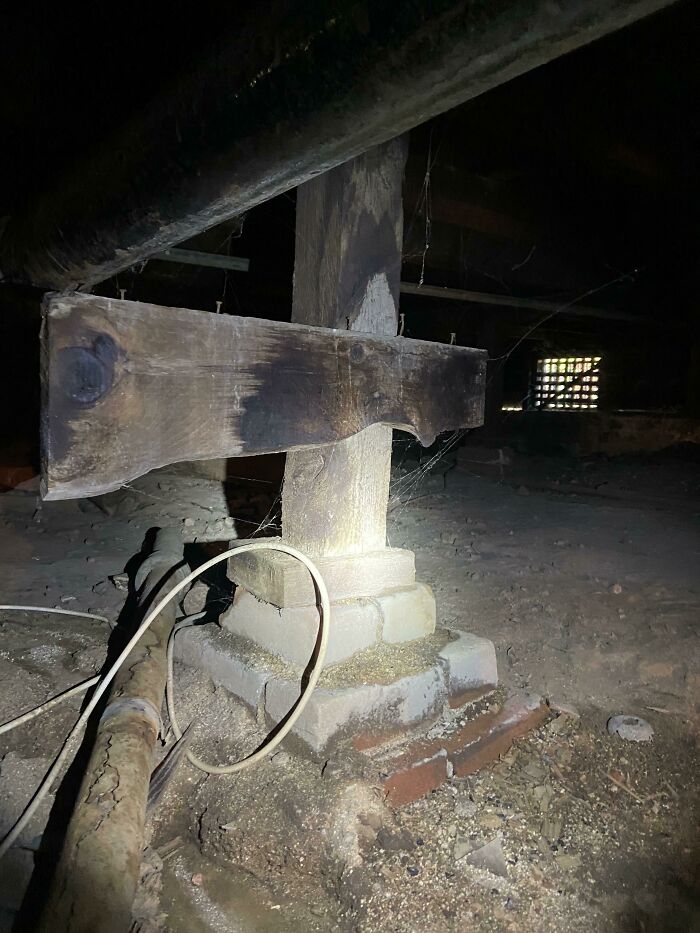
Image credits: AlphaStructural
#151
This is a post & pier foundation with tons of rot damage and almost nothing holding all together.
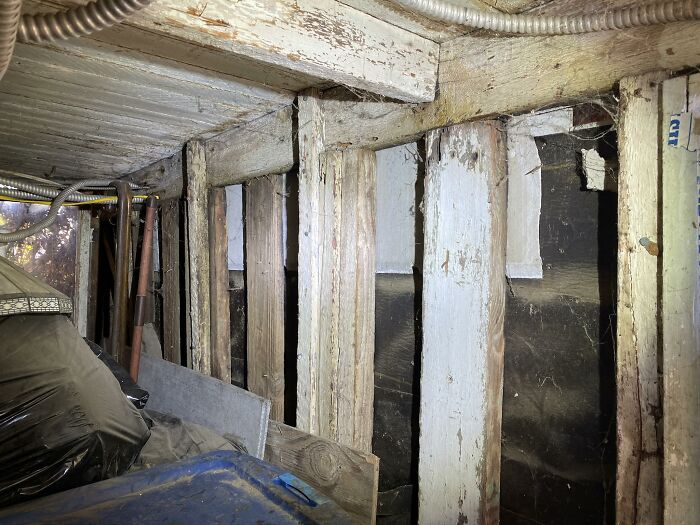
Image credits: AlphaStructural
from Bored Panda https://bit.ly/3q5S0xk
via Boredpanda